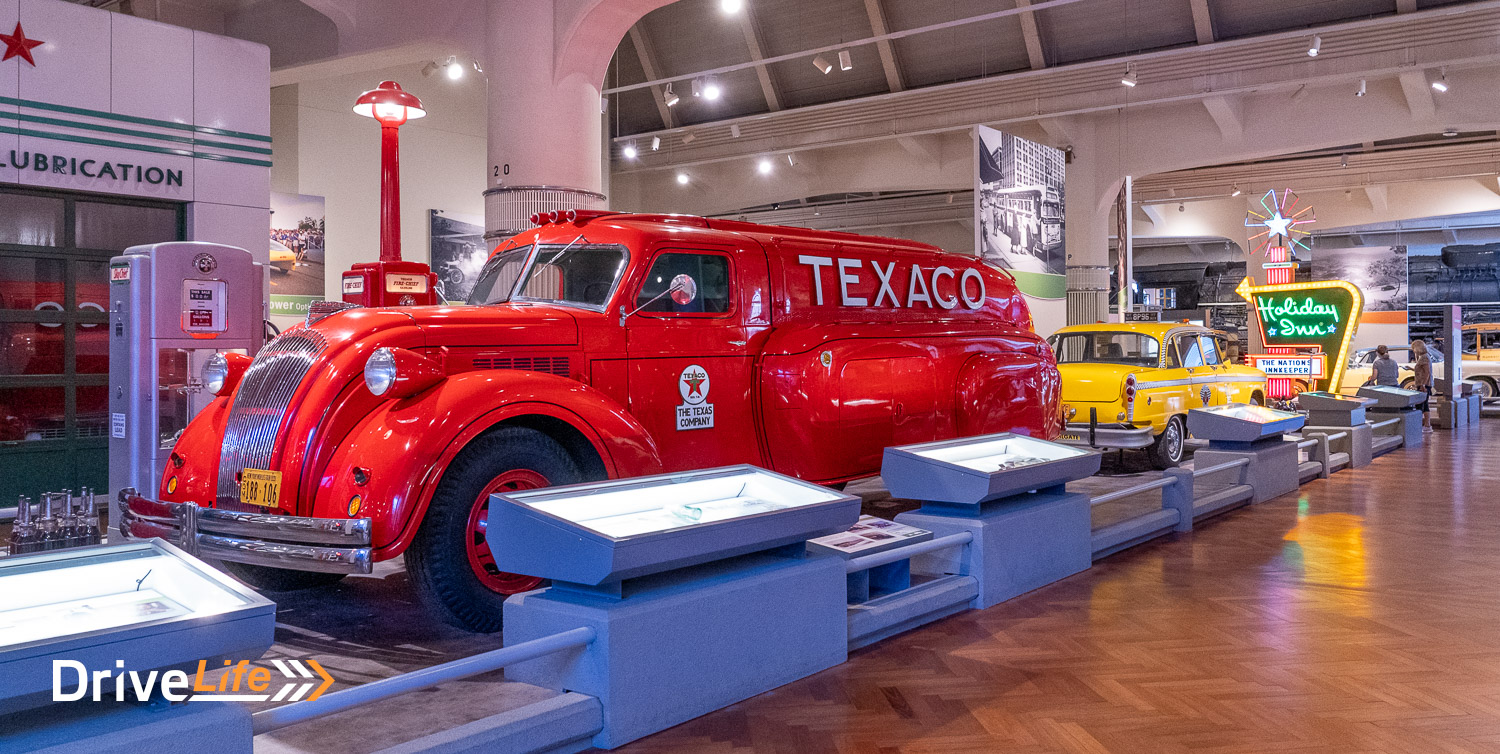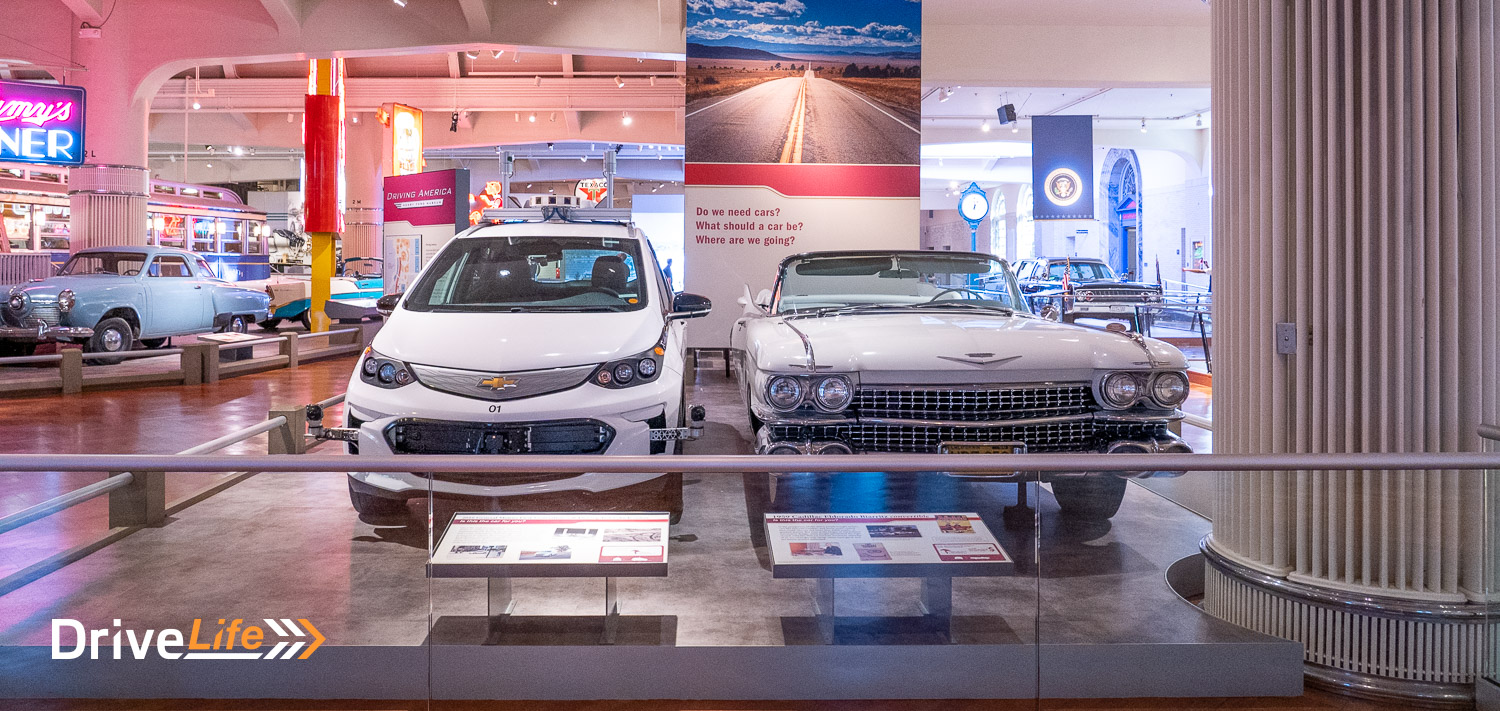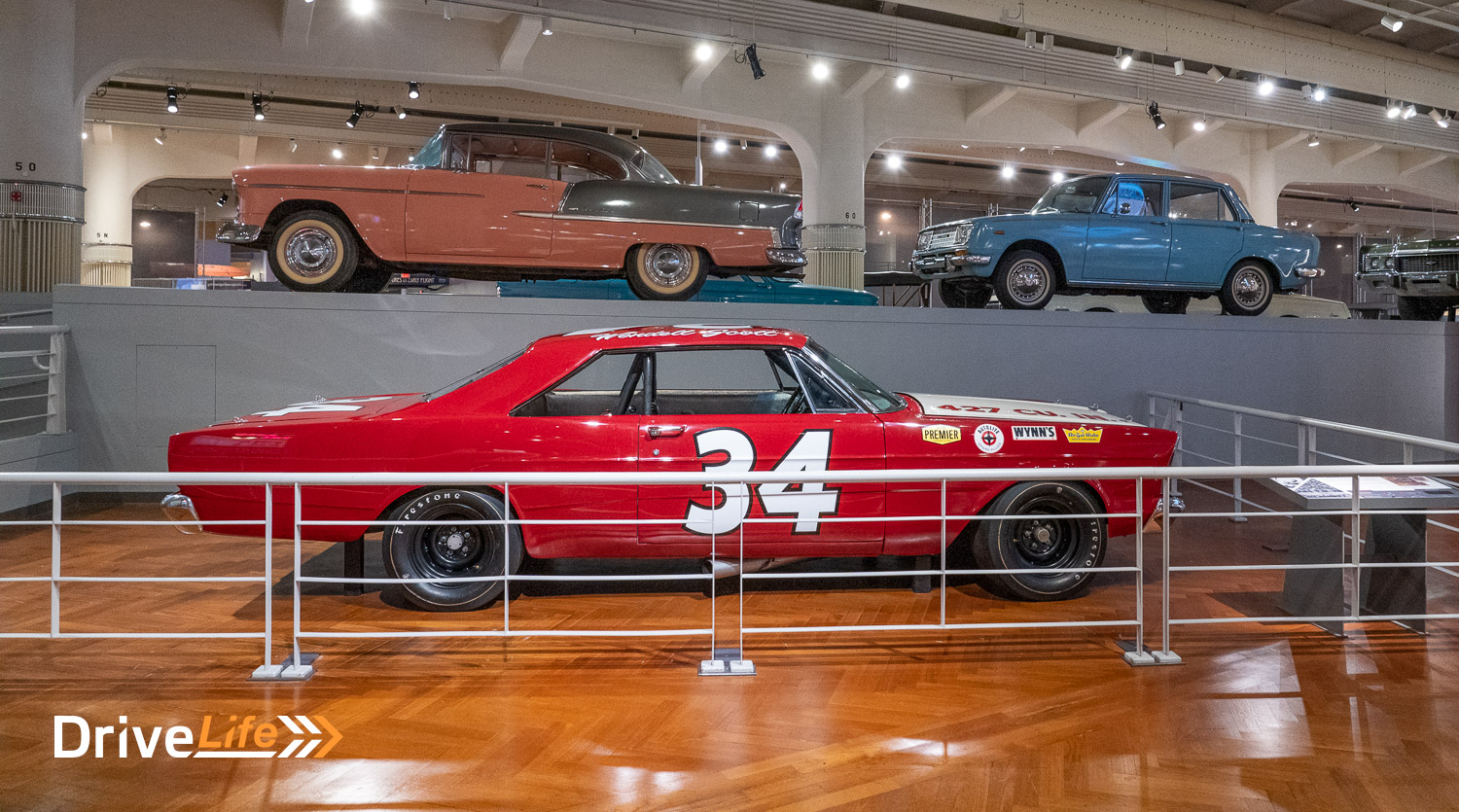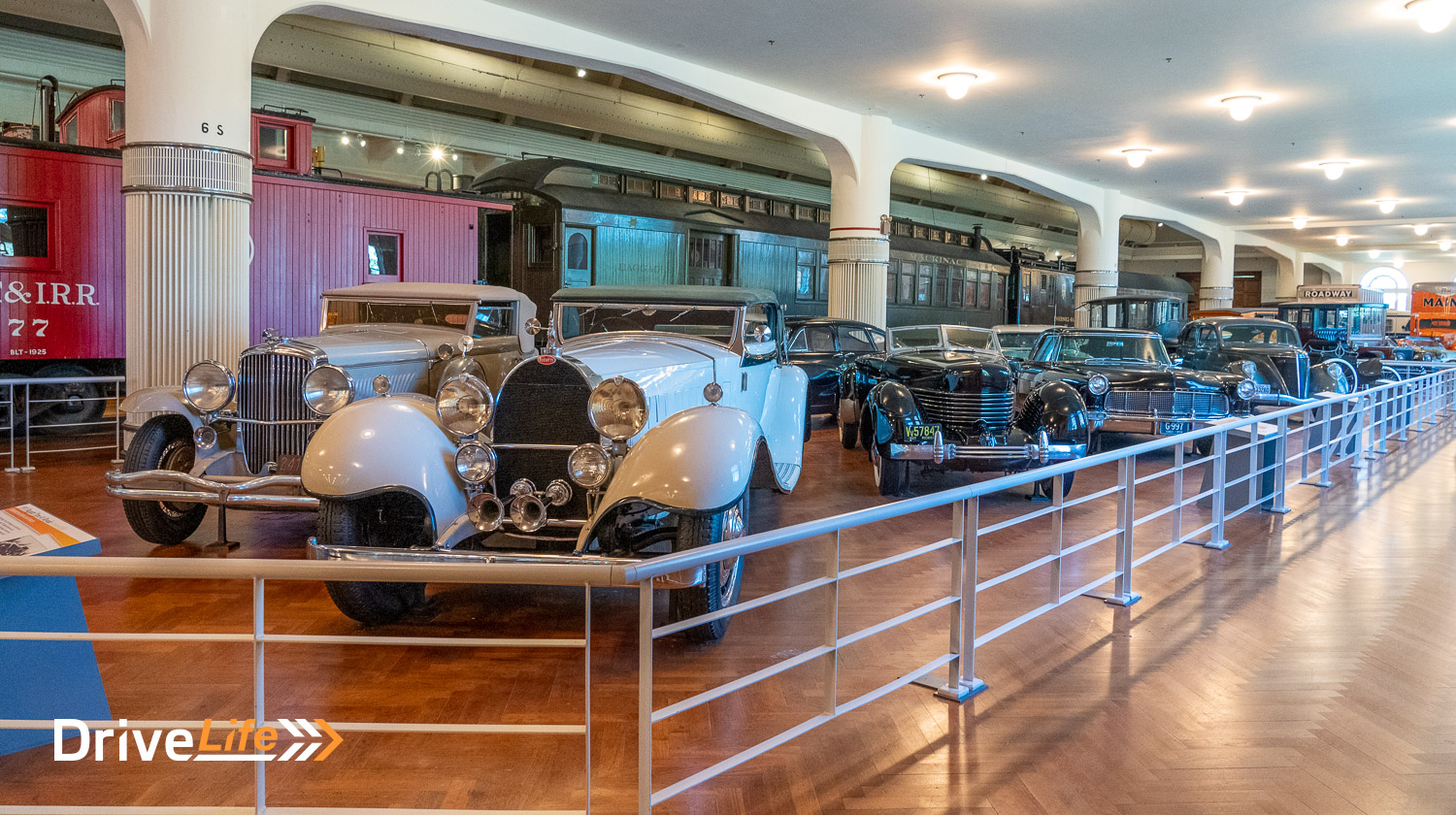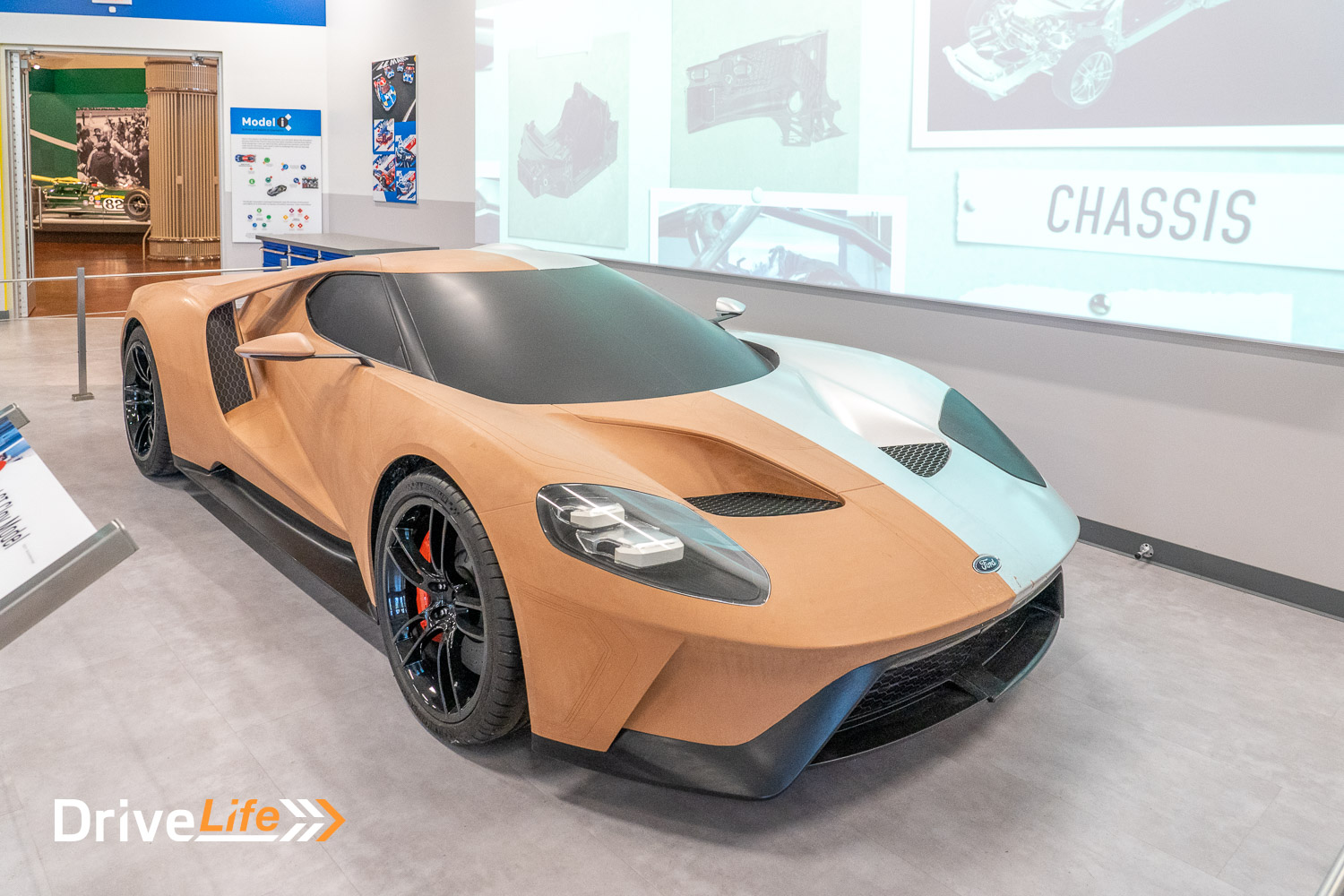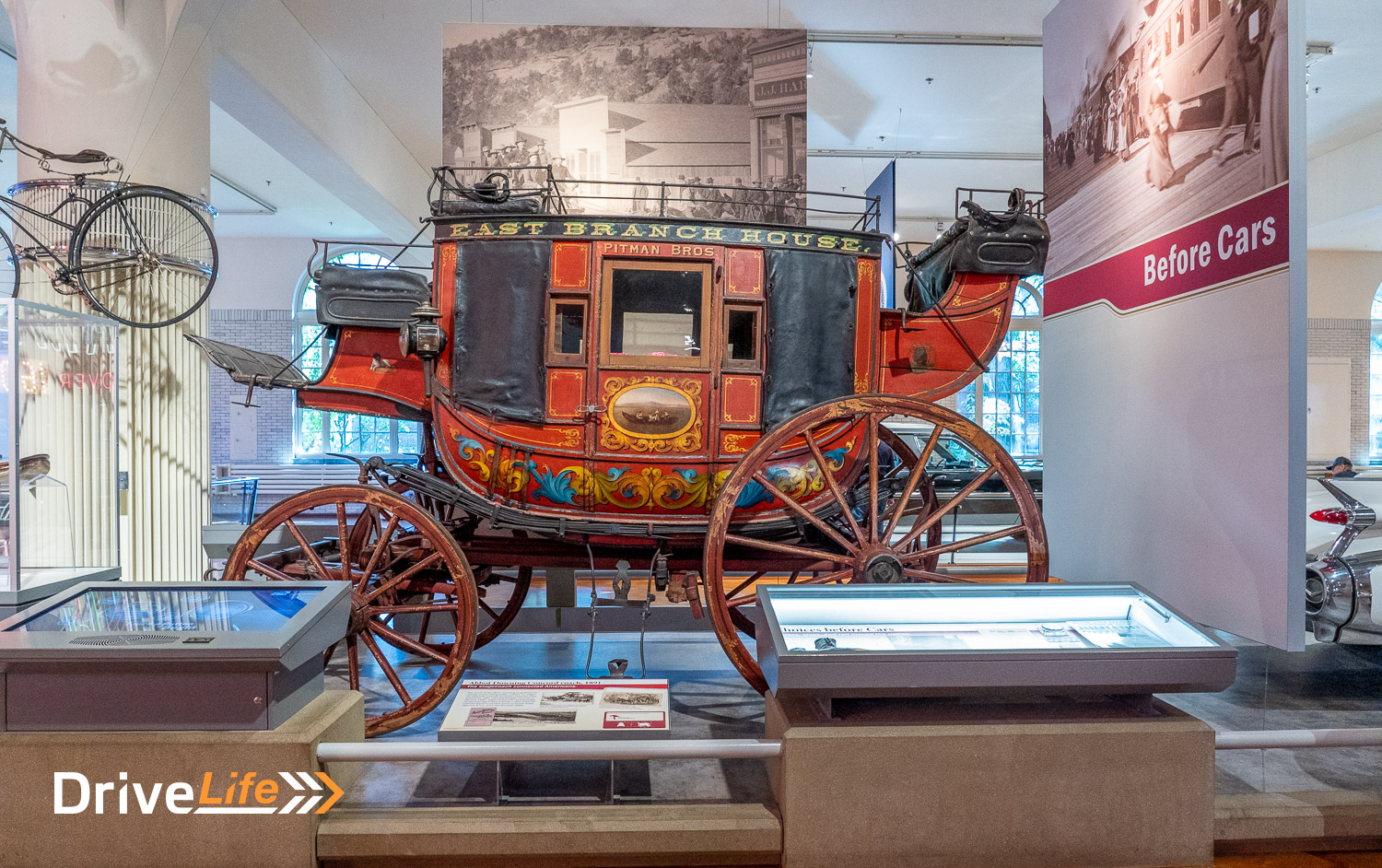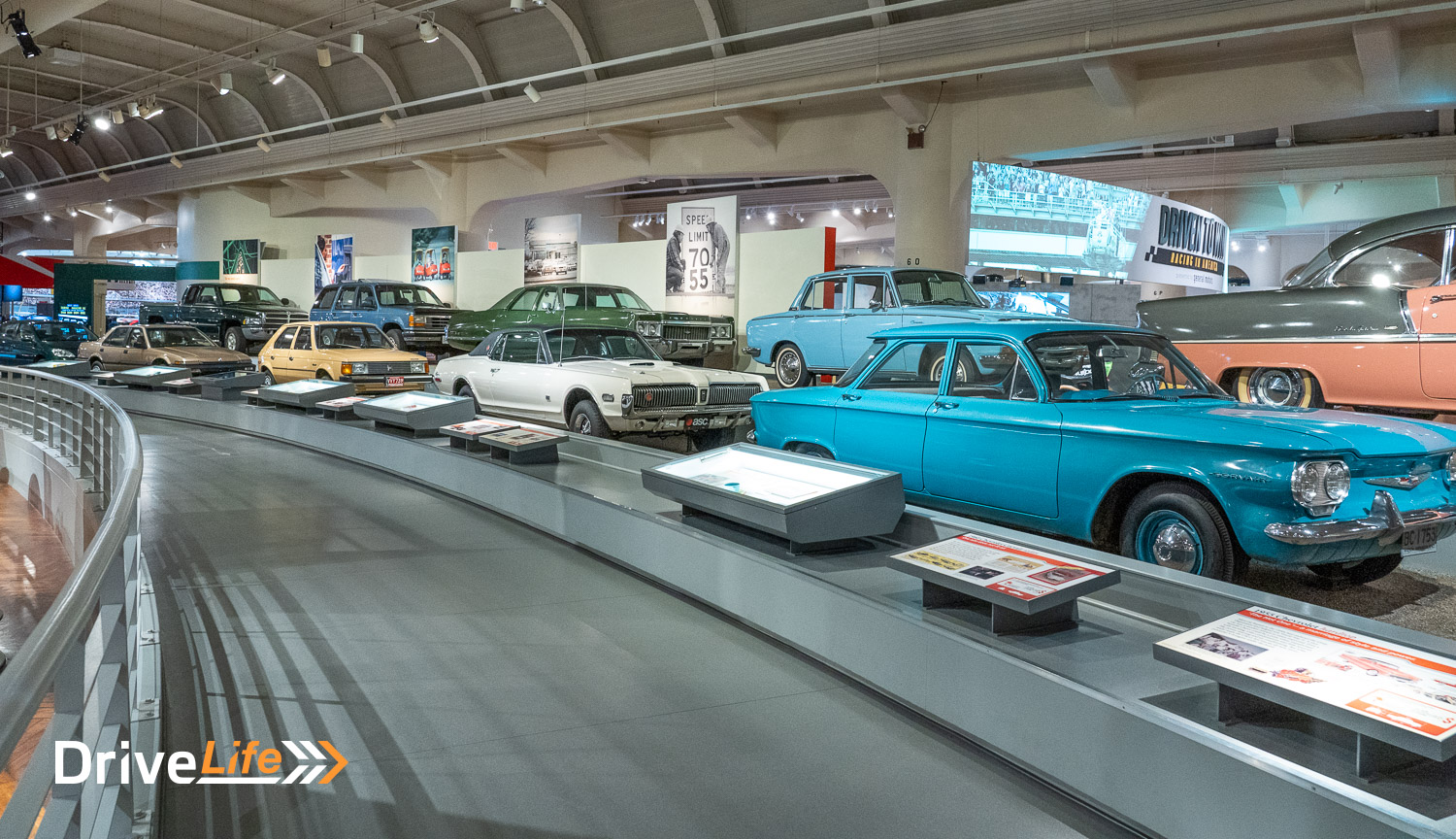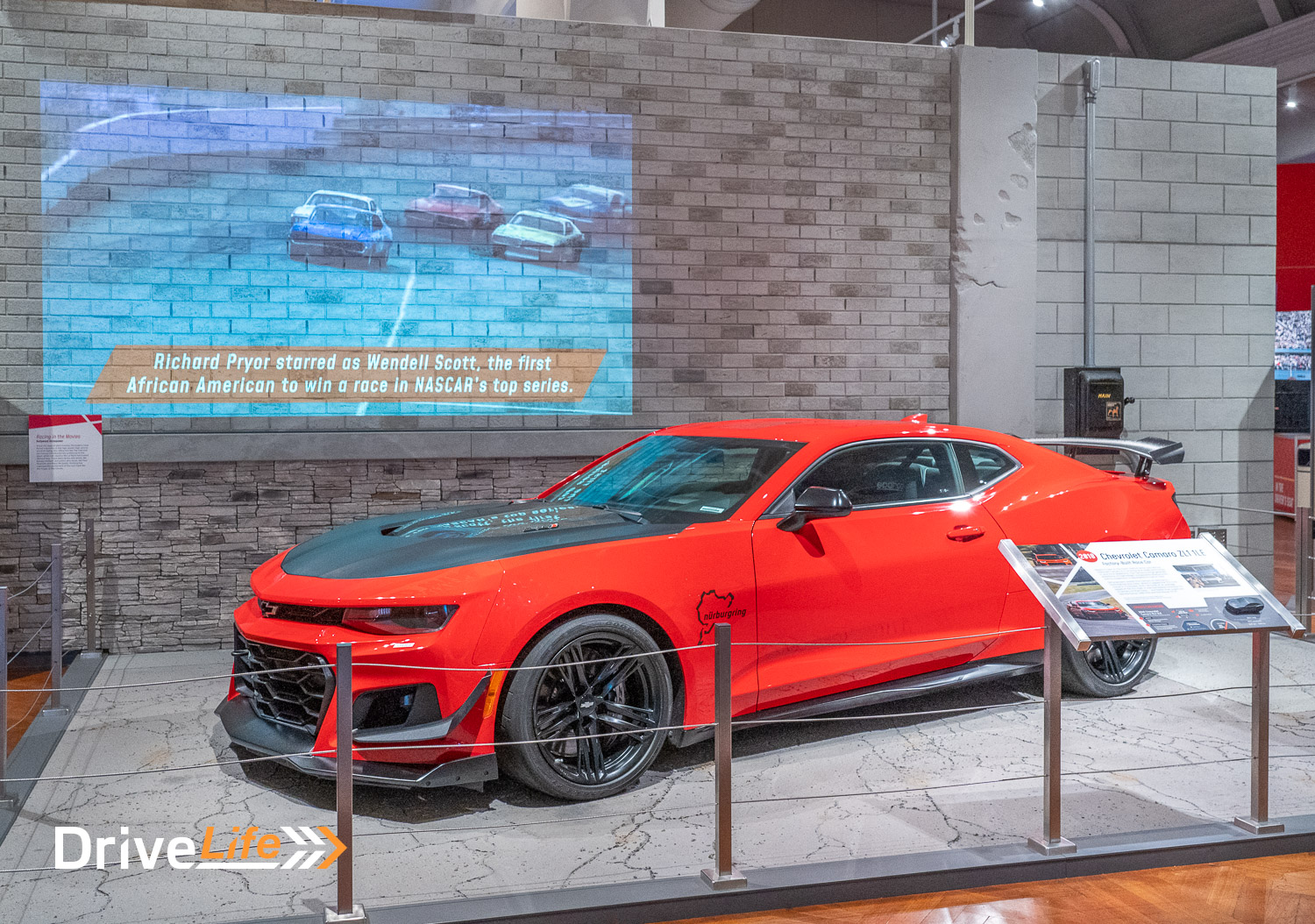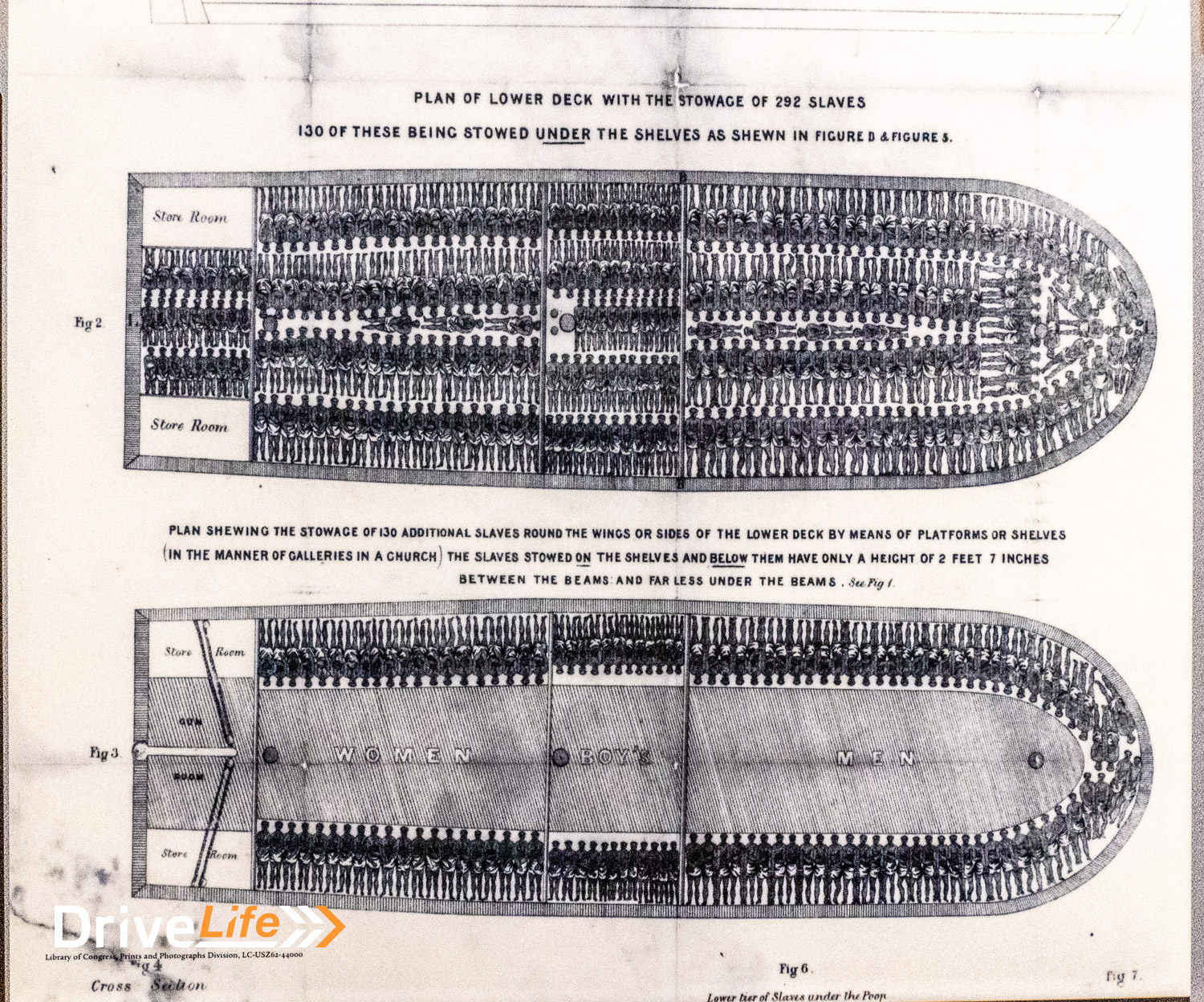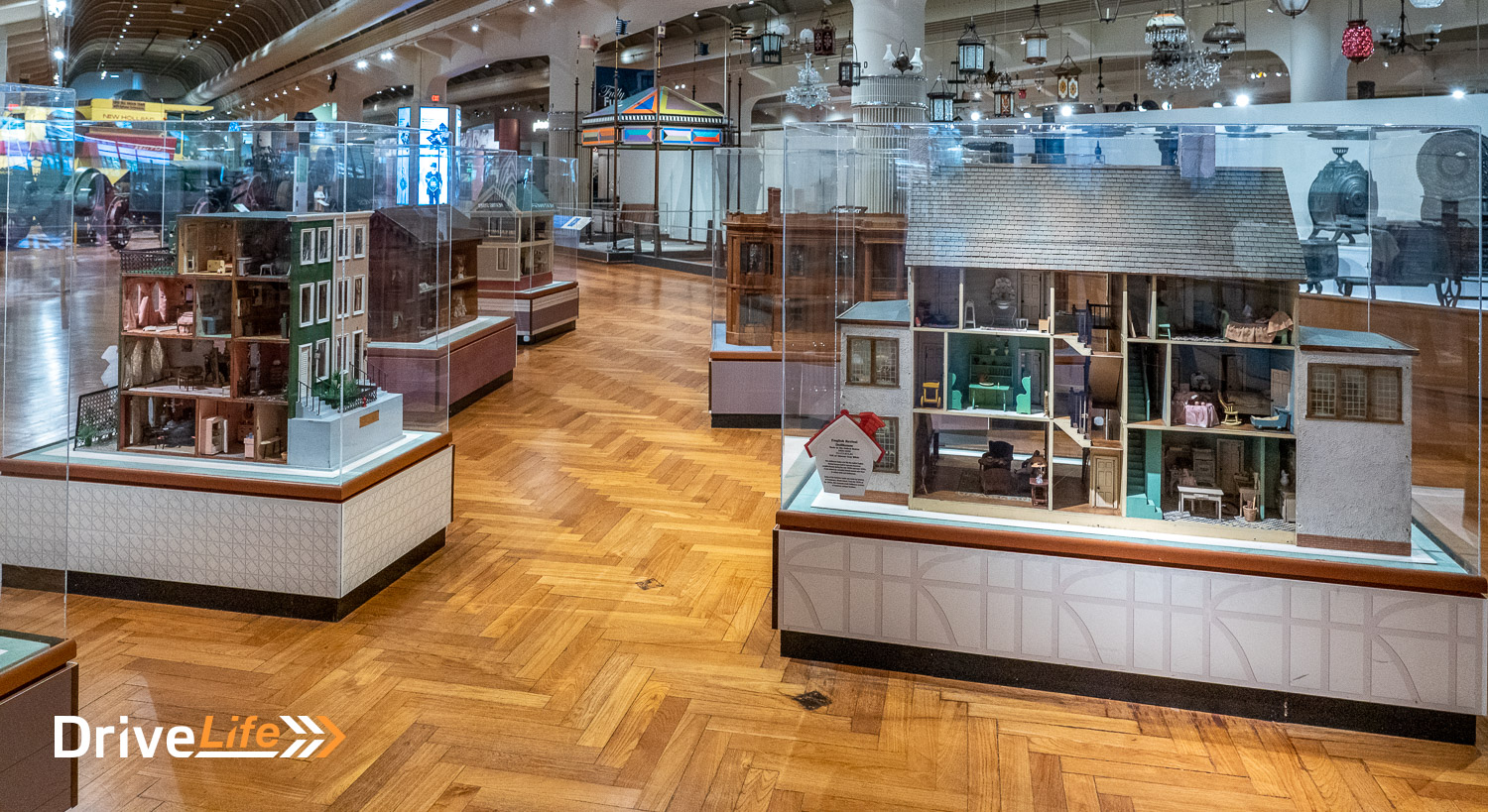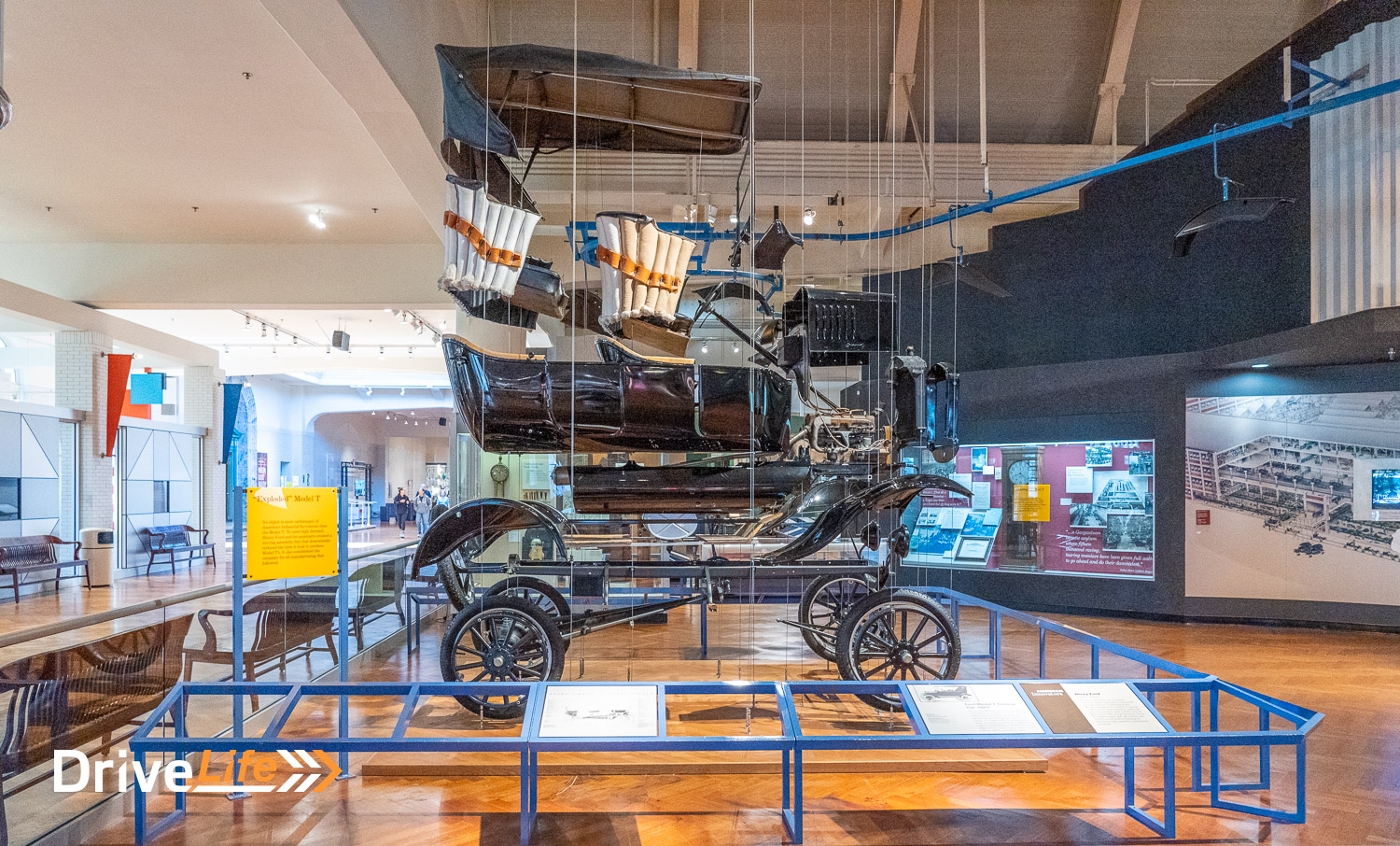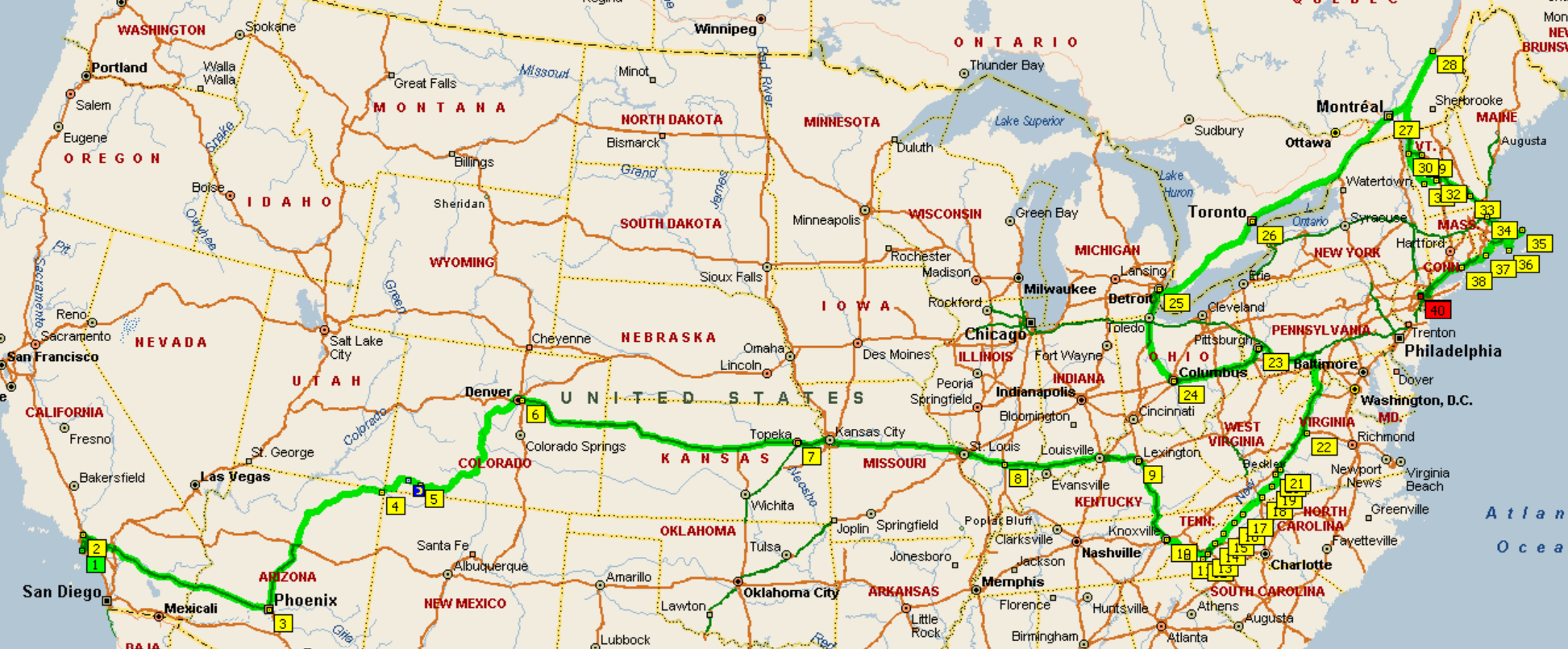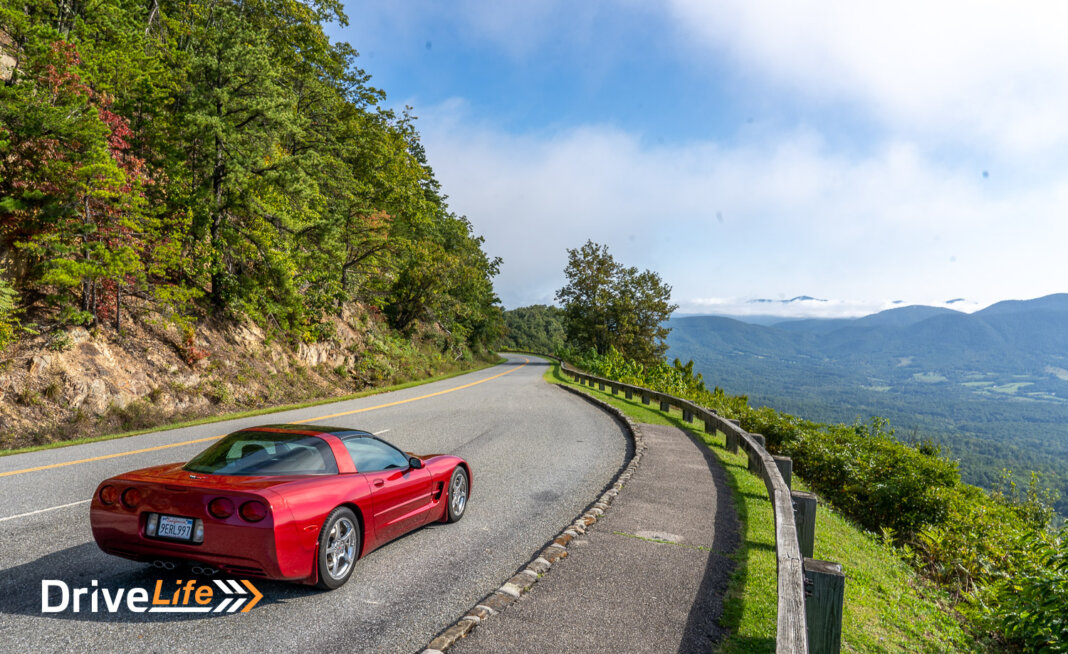Ride with us as we buy and drive a 2002 Chevrolet Corvette for 12,000km across America and into Canada over 7 weeks. Then we ship it back to New Zealand!
The previous blog post is here.
2023 USA Road Trip: Day 22 – Pinehurst, North Carolina
Even though we aren’t golfers, we’re heading into Pinehurst today to check out Pinehurst Country Club. It is world-famous for having hosted such prestigious events as the USA Open and is all set to host that event again in 2024. In fact, the Professional Golf Association (PGA) of America is moving their entire HQ from New York to Pinehurst, because Pinehurst Country Club has that much credibility. We saw the new PGA HQ being built as we rolled in the gates of Pinehurst CC, and in itself, the new PGA HQ is going to be mighty impressive.
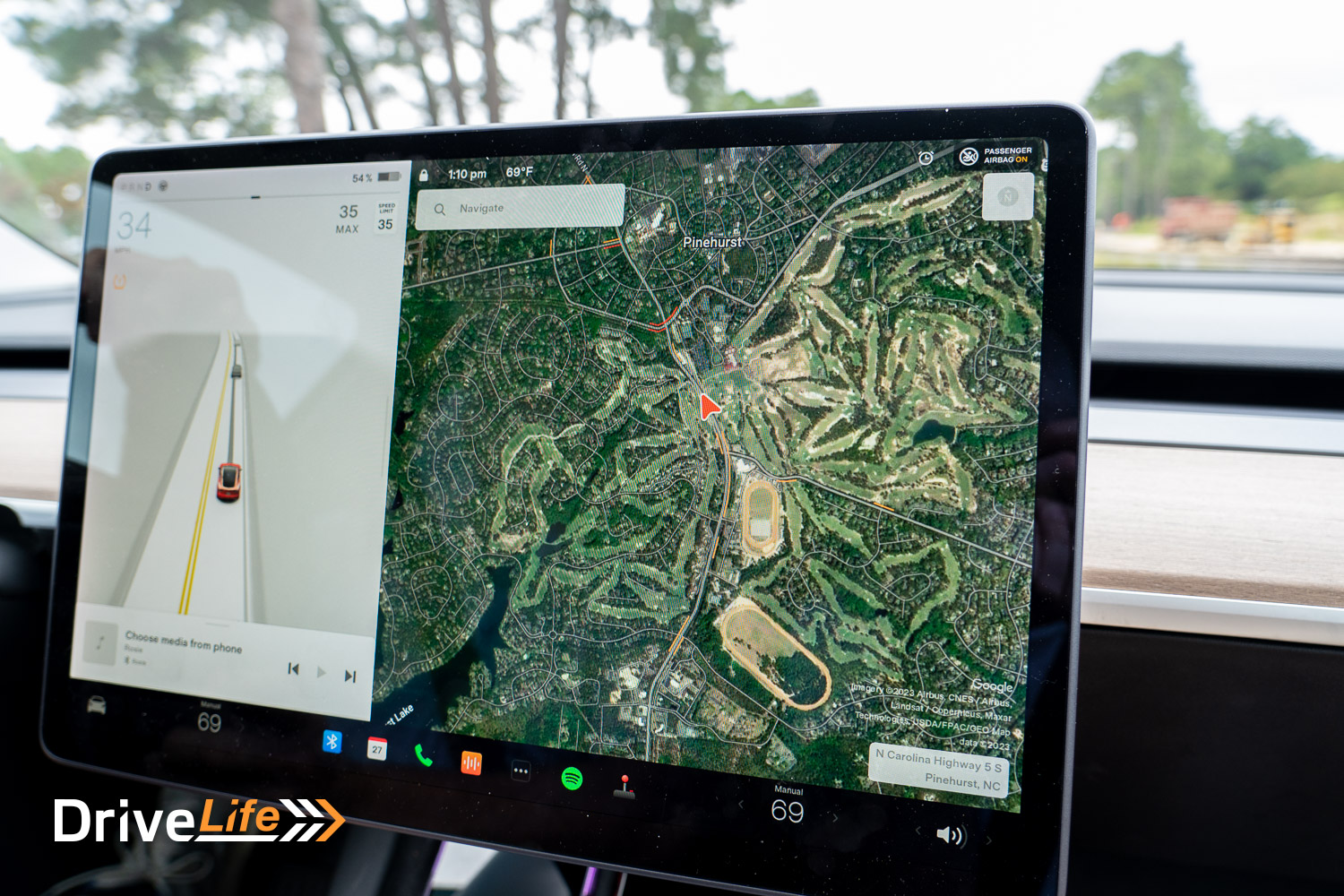
We grabbed a beer and sat at the small 9-hole course at PCC which is called The Cradle. Here, players are expected to go barefoot for the 9 holes, because that’s tradition. It’s also tradition for spectators to sit with a beer and judge/heckle the players, but it’s all in good fun, and this judging of players includes clapping when they do well. You can see all 9 holes from the little building that sells beer and snacks so it’s a very pleasant way to spend some time. Today, it’s a brisk 15 degrees out in the open, but there are gas-powered fire pits here to keep you warm.
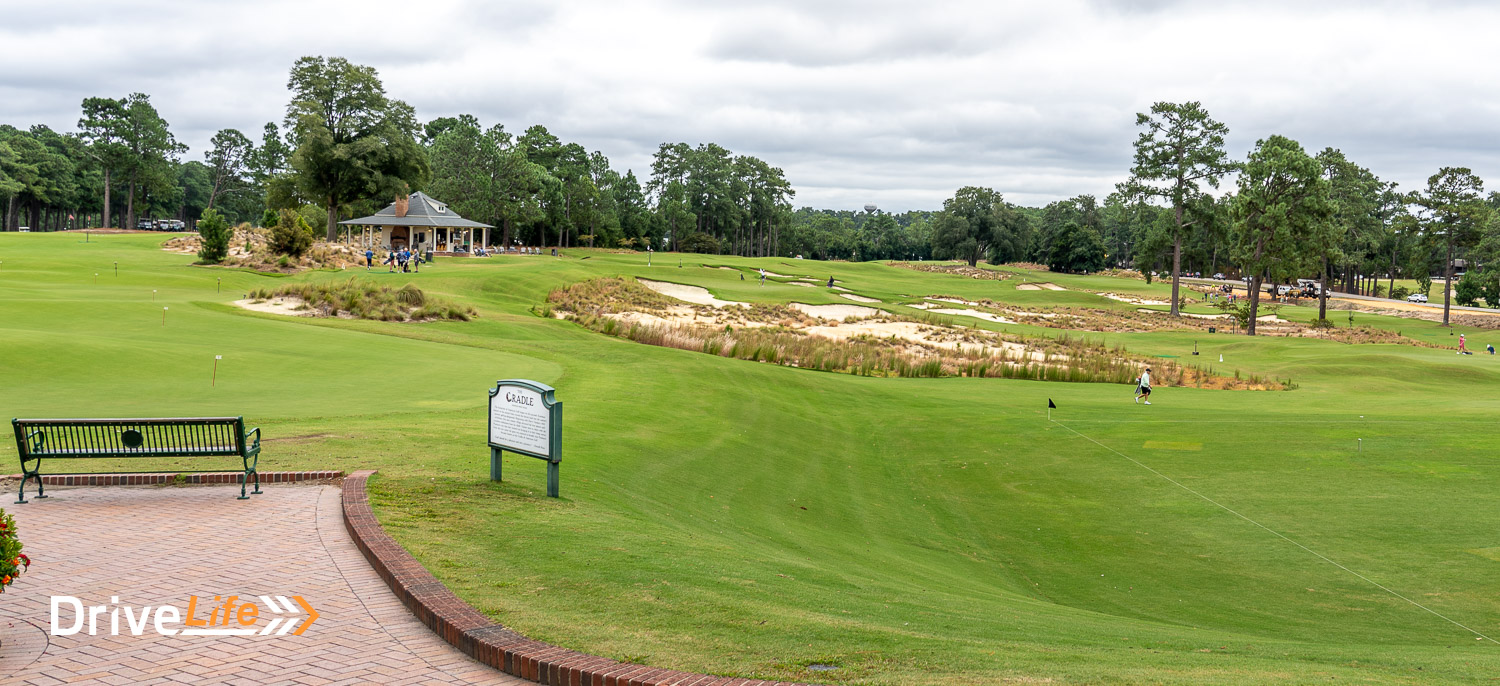
We took a walk through the centre of Pinehurst township, and one thing really struck me; it’s not crazy busy with traffic, like so many destination towns are in the US. On the weekday we were walking about looking at the historic buildings (and to be honest, also squirrels), and there was almost zero traffic.
We visit the Tuft Archives for a look at the historic photos of the town and its beginnings; it seems that originally, Pinehurst Country Cub had America’s first mini-golf course as well, and it was called Thistle Dhu. This was because the course designer, the famed Donald Ross, built the mini golf course and declared “This will do”. That same location is now used as a putting course to practice your putting.
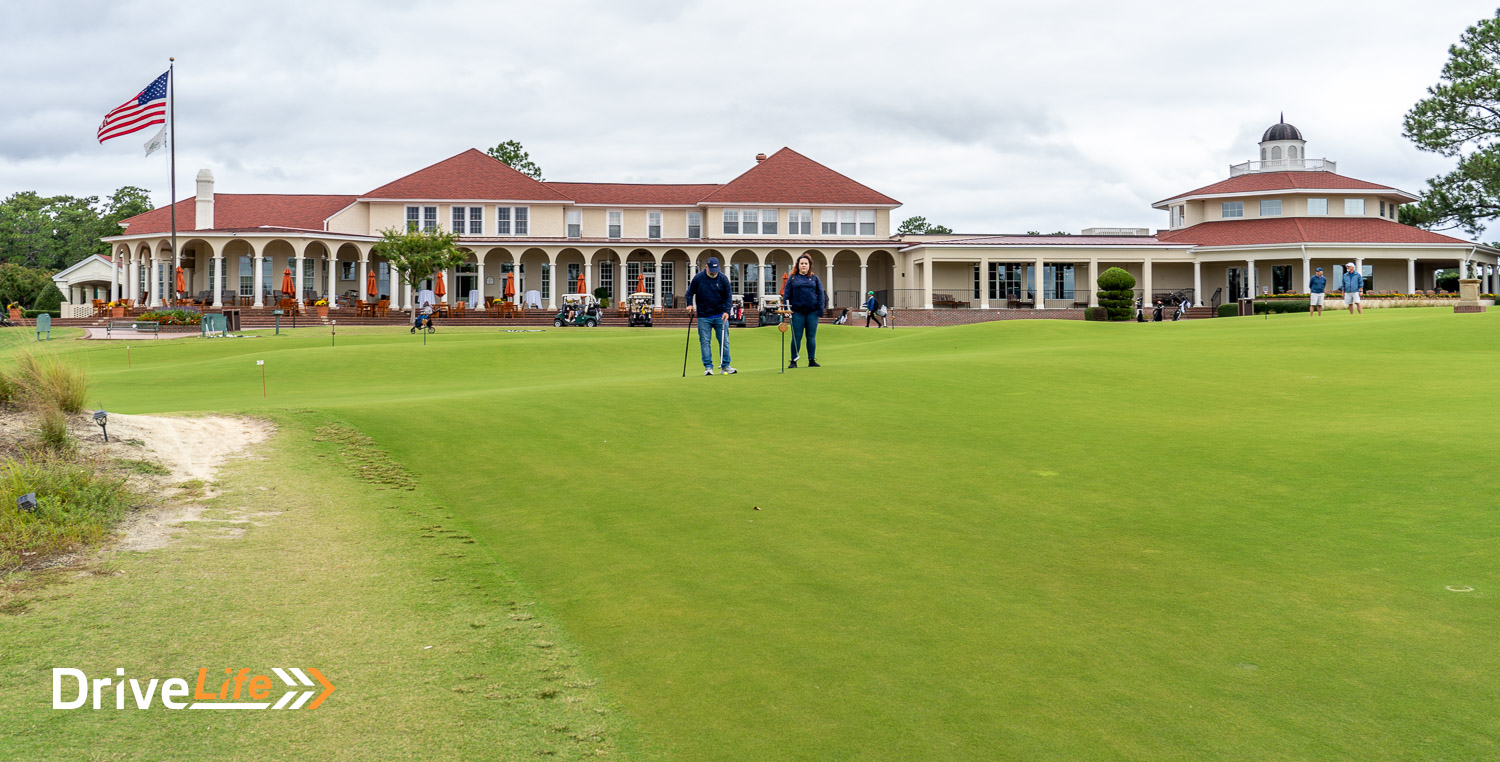
The gated community our friends live in is called Pinewild and has two 18-hole private golf courses and one 9-hole. There are around 900 homes here, and many of them are outstanding in design and, well, luxury. The whole community is meticulously maintained, and many homes border a lake or one of the golf courses. Our friends’ house is right at the first hole of one of the 18-hole courses, so they simply walk outside their house to play.
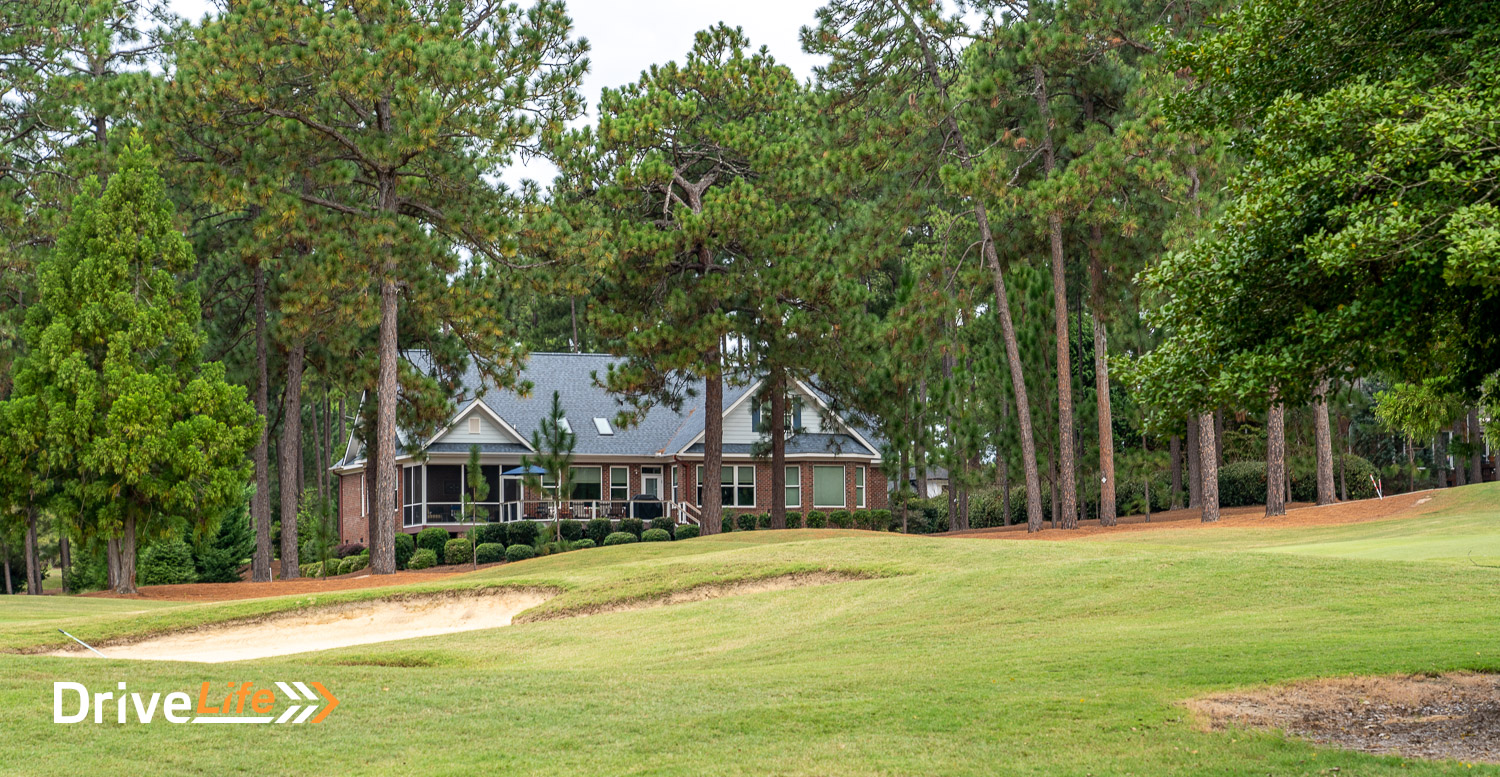
2023 USA Road Trip: Day 23 | Pinehurst, North Carolina to Roanoke, Virginia
States entered after today: 15
Distance driven today: 330 miles/571 km
Total distance driven: 4,325 miles/6,961 km
It’s a nice 16 degrees outside and we’re heading north at last today as we are aiming to do one of the must-do items on this USA trip: drive the Blue Ridge Parkway (BRP). This scenic byway rides the ridge of the Appalachian Mountains. We’ve done parts of it before on other USA trips and this time wanted to cover more miles on it. It’s an extremely scenic drive, with iconic photos that you might have seen before. While the BRP is 469 miles long, we won’t be driving the whole road on this trip.
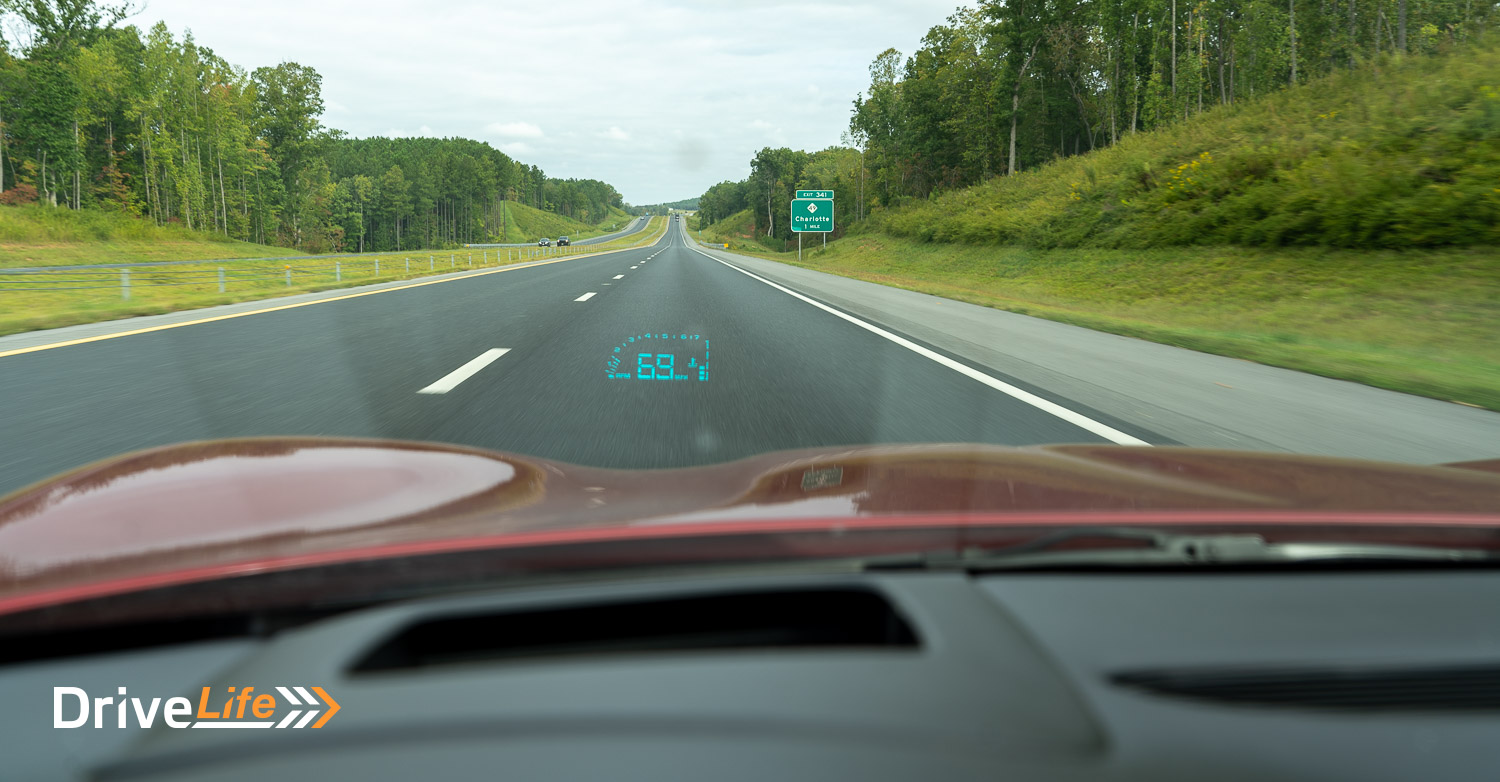
On the way to the BRP we stopped in at Wilkesboro for some lunch at a small-town diner called Hadleys. We’ve noticed as we drive north more, the accents are getting stronger and that was really the case at Hadleys as we had to listen carefully to our waitress. My lunch of a burger and fries was US$4.59, so we are finally back in with some realistic food pricing.
When we finally hit the BRP, we don’t get far before we see signs for the Blue Ridge Parkway Music Centre. Deciding it was worth a look we stopped in to see the signs declaring that there is live Bluegrass music playing from 12-4 each day. Yes! Love me some Bluegrass. It’s already 3:45 pm so we’ve still got 15 minutes to go. After parking and walking to the sounds of the live music, it stops and doesn’t start again.
The music centre is well laid out; not huge but quality displays. There are musical instruments (yes, banjos are included) from the late 1800s, and some excellent video displays, including one from the 1930s that has reasonable quality and excellent music for the time. We don’t spend long at the music centre but it’s worth looking at and costs nothing.
Along the BRP we cross into Virginia and marvel at the scenery. There are few places to stop and get photos but the one I really want to take is of the trees along the sides of the parkway. It’s like driving through a glade that never ends, and it’s stunning. We’ve got to be careful looking at the scenery as we’ve seen a number of deer at the sides of the road, and some have casually walked out in front of the Corvette. I feel for the motorcyclists we’ve seen on the road too, that would not be a pretty sight if they hit one.
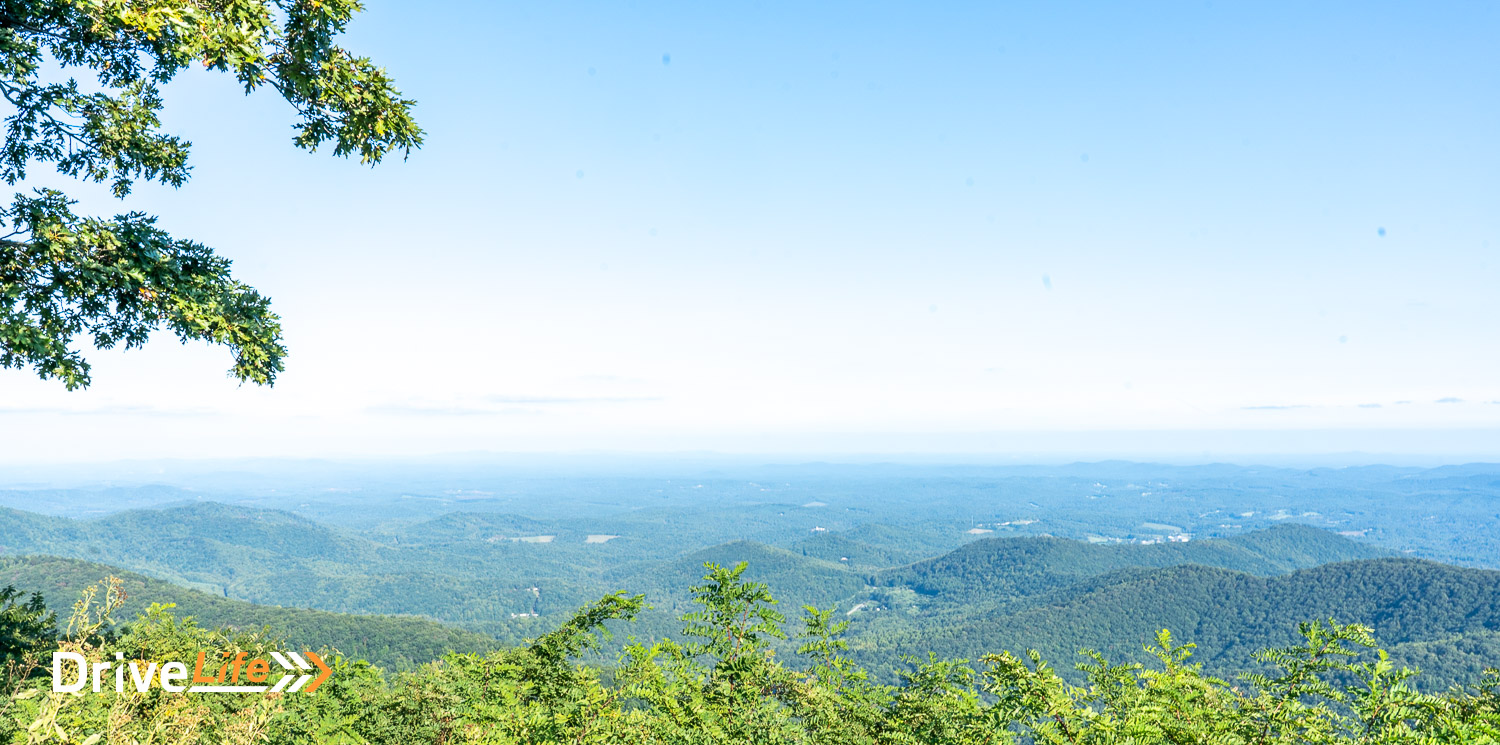
There’s only a handful of cars we see on the BRP, and the views out from the lookouts are amazing.
You can join or leave the BRP at certain points along it, and we exit it to stay in Roanoke, Virginia for the night. We’ve been on the road for 10 hours so it’s time to call it a day.
2023 USA Road Trip: Day 24 | Roanoke, Virginia to Pittsburgh, Pennsylvania
States entered after today: 18
Distance driven today: 207 miles/333 km
Total distance driven: 4,532 miles/7,293 km
We’ll pass through 4 states on our travels today, starting in Virginia and then crossing into West Virginia. Later in the day, we’ll be going into Maryland and eventually end up in Pennsylvania.
On the way to rejoin the BRP (at the hotel, they say we are “riding the blue ridge”), we stop to get coffee from a gas station. A black guy and his mom approach and he says something, which I eventually work out to be, “y’all driven a long way”. They saw our California licence plates and were surprised to see us so far from that state. He’s stunned to hear we’ve already driven over 4,000 miles and another 4,000 or so to go. So many Americans we’ve spoken to (on this and other trips) never or rarely leave their home state – they just don’t get enough annual leave to do that. For lots of them, 2 weeks of vacation time is a luxury, many get far less, and some get none at all.
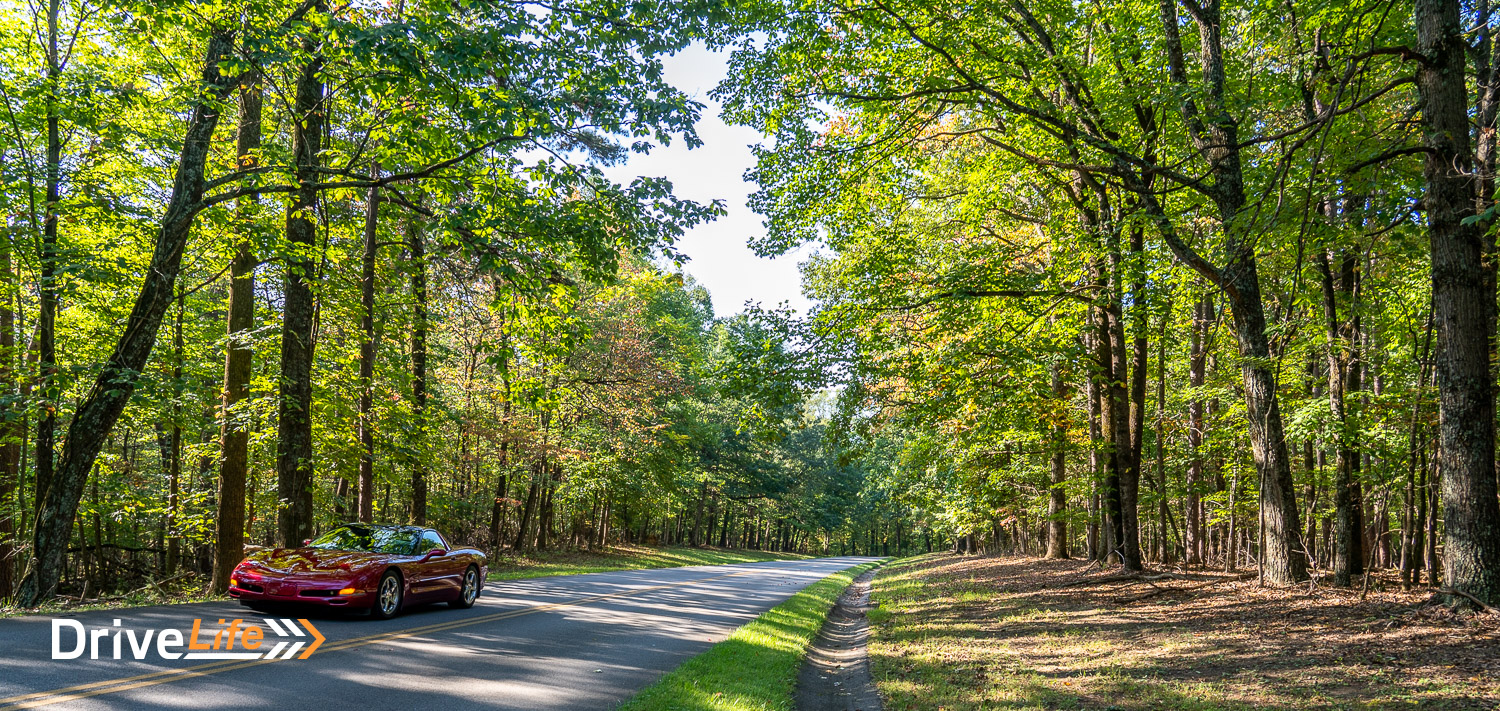
Ten minutes from our hotel, we rejoin the Blue Ridge Parkway. The driving scenery is much the same as yesterday’s drive of the BRP, and that’s fine with us. There’s almost no traffic, and we drive for 20 minutes without seeing another car. There are no commercial vehicles allowed on the BRP, so there’s no fear of a big truck coming around a bend. But there are more deer, and we see plenty this morning – some of them crossing the road, almost ignoring us.
The road is still an easy drive, and I mainly use fifth gear with occasional drops into fourth or sixth. At one point, we’re driving along the actual ridge of the Blue Mountains and can look on either side to see the Allegheny Mountains on one side and the Great Smokies on the other. It’s a stunning view and a privilege to be able to experience it.
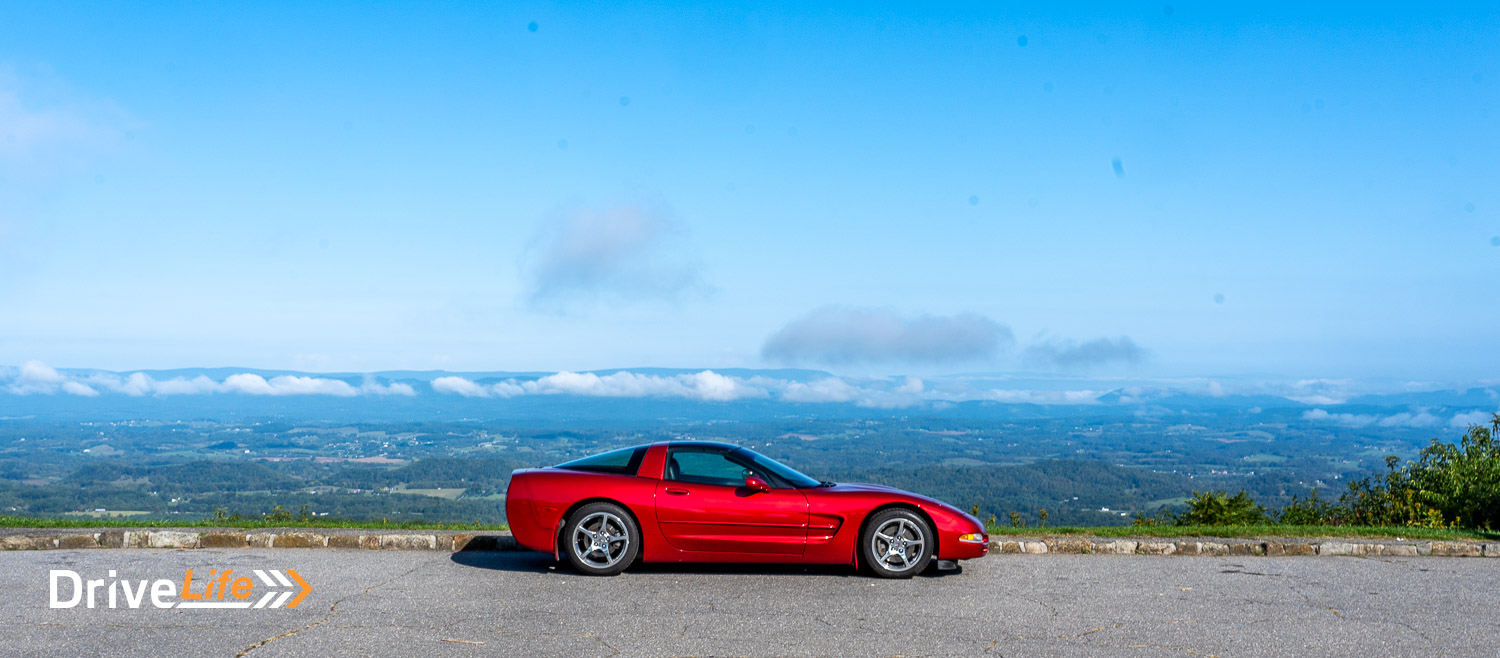
Corner after corner, there are glades of trees to drive through, or there are mountain views and no traffic. It’s total bliss.
We call into one of the (rare) visitor’s centres on the BRP and of course, my wife buys stuff from them. This visitor’s centre is not far from Otter Creek, so I asked him if we’ll see any otters. The park ranger rolls his eyes; obviously, he gets this question a lot and simply points to an information board that says some say it derives from the Cherokee “Atari” or “Ottari” for “high mountain”, it is more likely that it is named after the twin peaks for Otterburn, a famous place name in Scotland. Colour me informed and a bit disappointed.
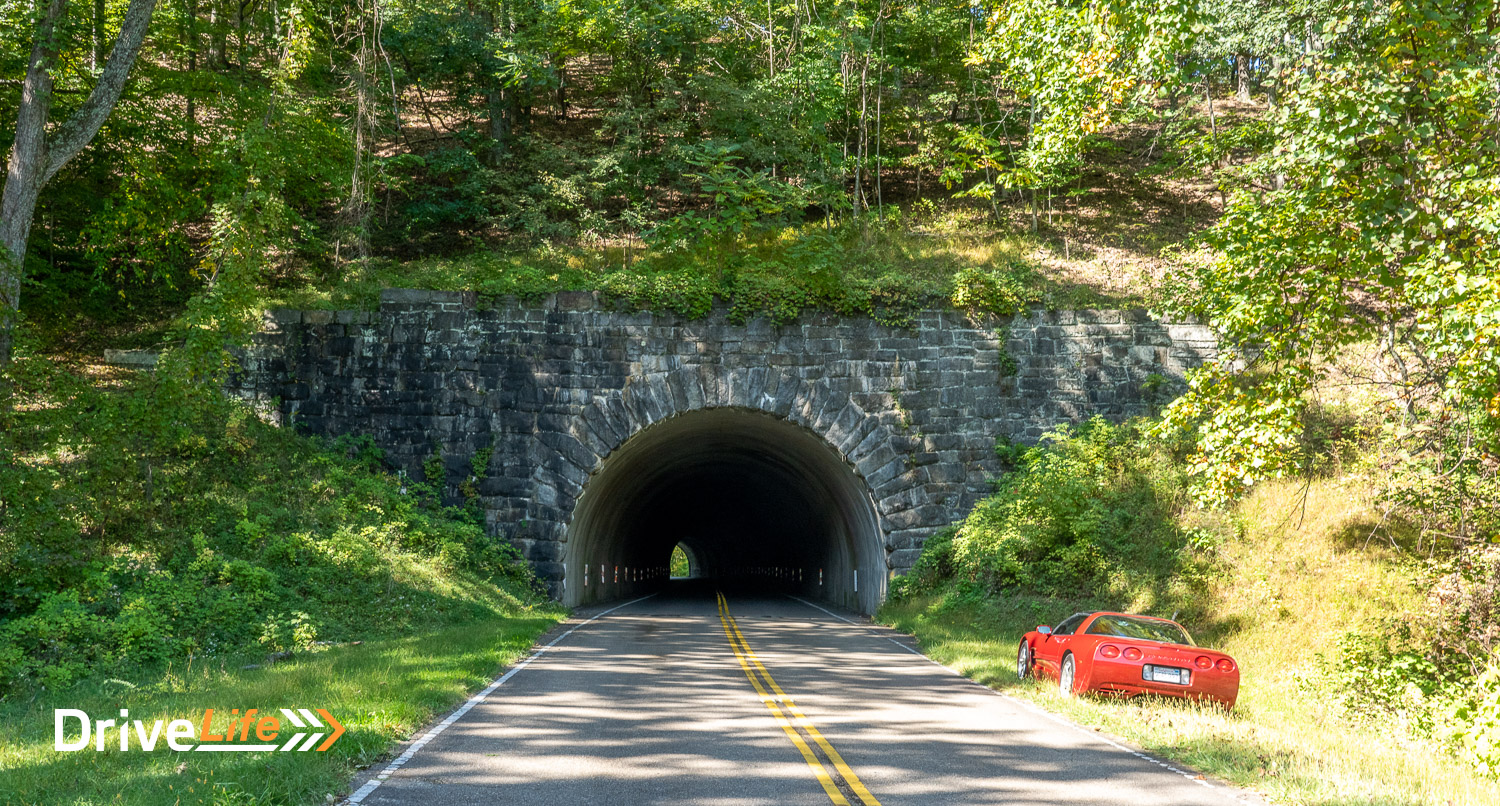
We also asked him about black bears; they are known to be around the BRP now and then. His response is classic; “we had two cross the road yesterday”. The cynical part of me thinks he tells this to everyone who asks, but we live in the hope of seeing one.
Eventually, we head off the BRP and call into the town of Staunton for lunch, at a family diner called Kathys. It’s clean and cheap and that’s all we need for lunch. Post lunch, we hit the road but this time we headed directly to Pittsburgh for our hotel for the next couple of nights. We pass into West Virginia and it’s like someone has flicked a switch; we see so many more trees changing colours for the autumn, far more so than in Virginia state.
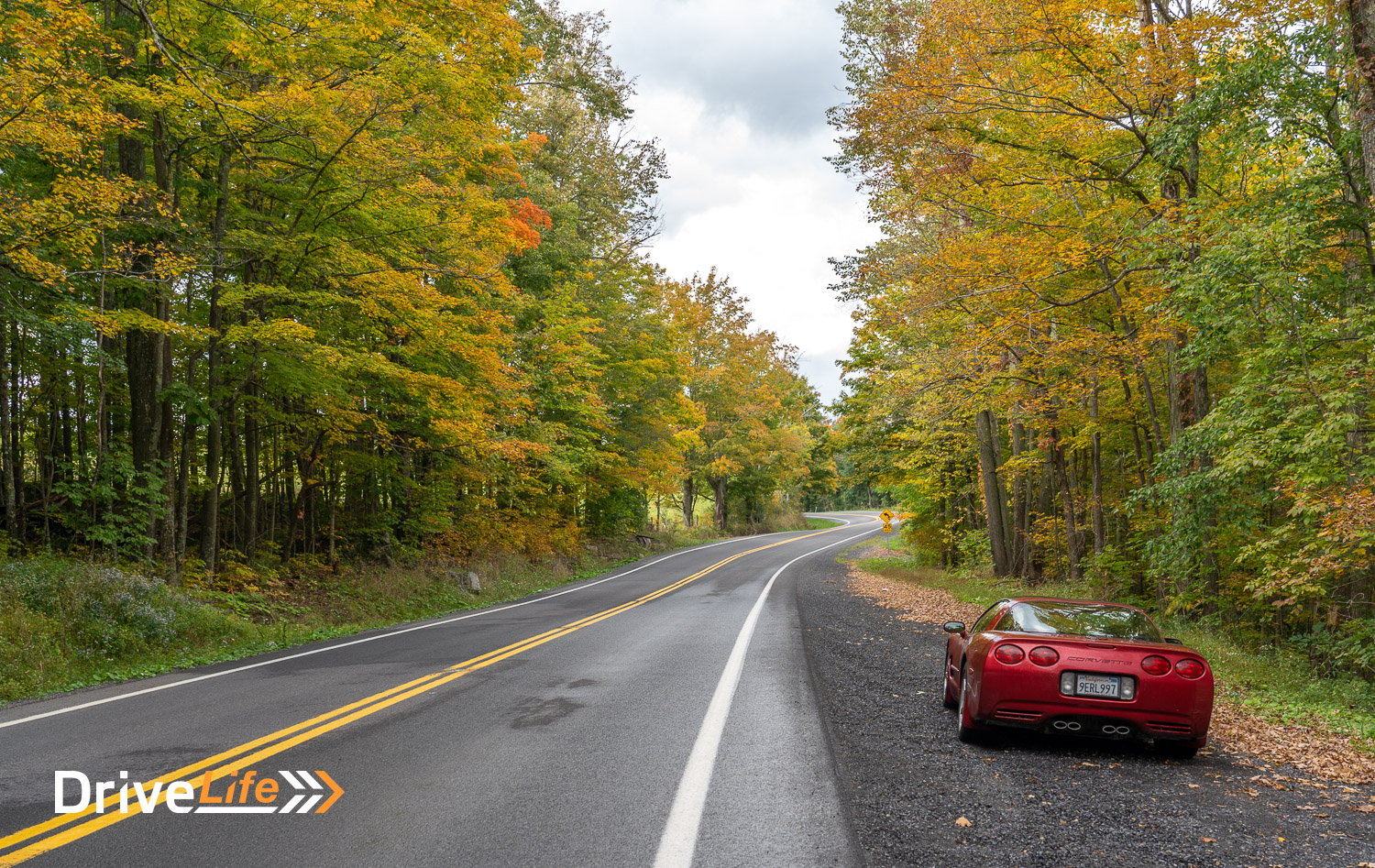
We get another surprise in West Virginia; rain. We haven’t seen it for a few weeks, but it only lasts a few minutes.
It takes over 5 hours to get from our lunch in Staunton to Pittsburgh, so after passing into West Virginia, we end up in Maryland for a few hours, and then into Pennsylvania, our 18th state so far for this trip. We ended up spending almost 11 hours in the car today, but for the Blue Ridge Parkway alone, it was worth it.
2023 USA Road Trip: Day 25 | Pittsburgh, Pennsylvania
We’re spending the day in Pittsburgh and start with a walk around the downtown area. It’s Saturday at 9am and there are no cars and almost no people. We’re really happy that this just happened to be a weekend when we are here; I can imagine it’s chaotic on a weekday.
We’re struck by a number of things in downtown Pittsburgh; there’s a huge juxtaposition between the old buildings and the new ones. It’s fantastic that Pittsburgh has kept so many of its historic buildings, and they are superbly designed. There’s no ‘but’ here – just a noticeable and enjoyable difference between old and new.
Those new buildings…some of them absolutely tower over the town, with the tallest being the US Steel Tower at 64 stories.
Like so many other historic cities around the world, a fire swept through the central city in 1845 and wiped out one-third of all the buildings. We can understand why so many of the remaining historic buildings are brick or stone.
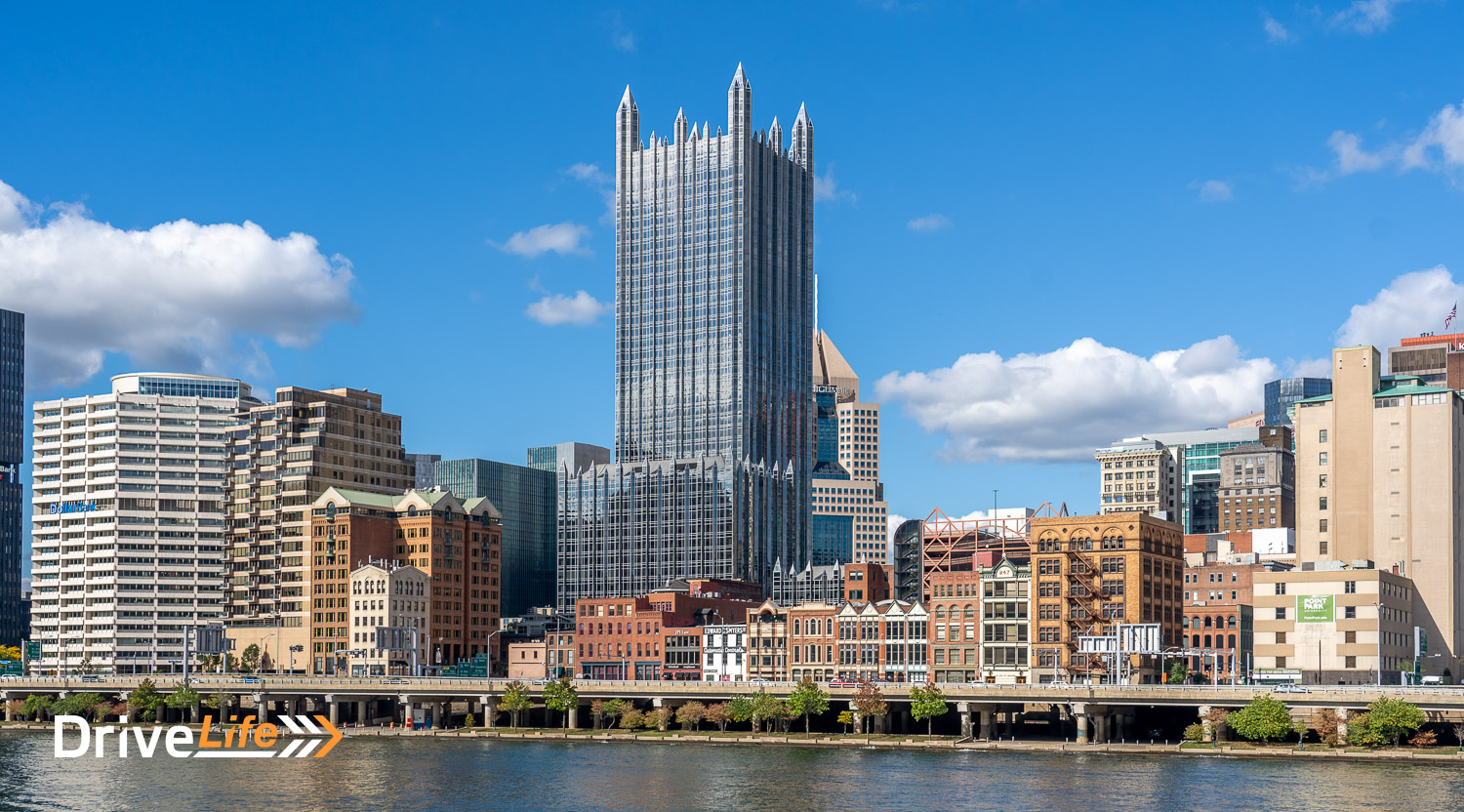

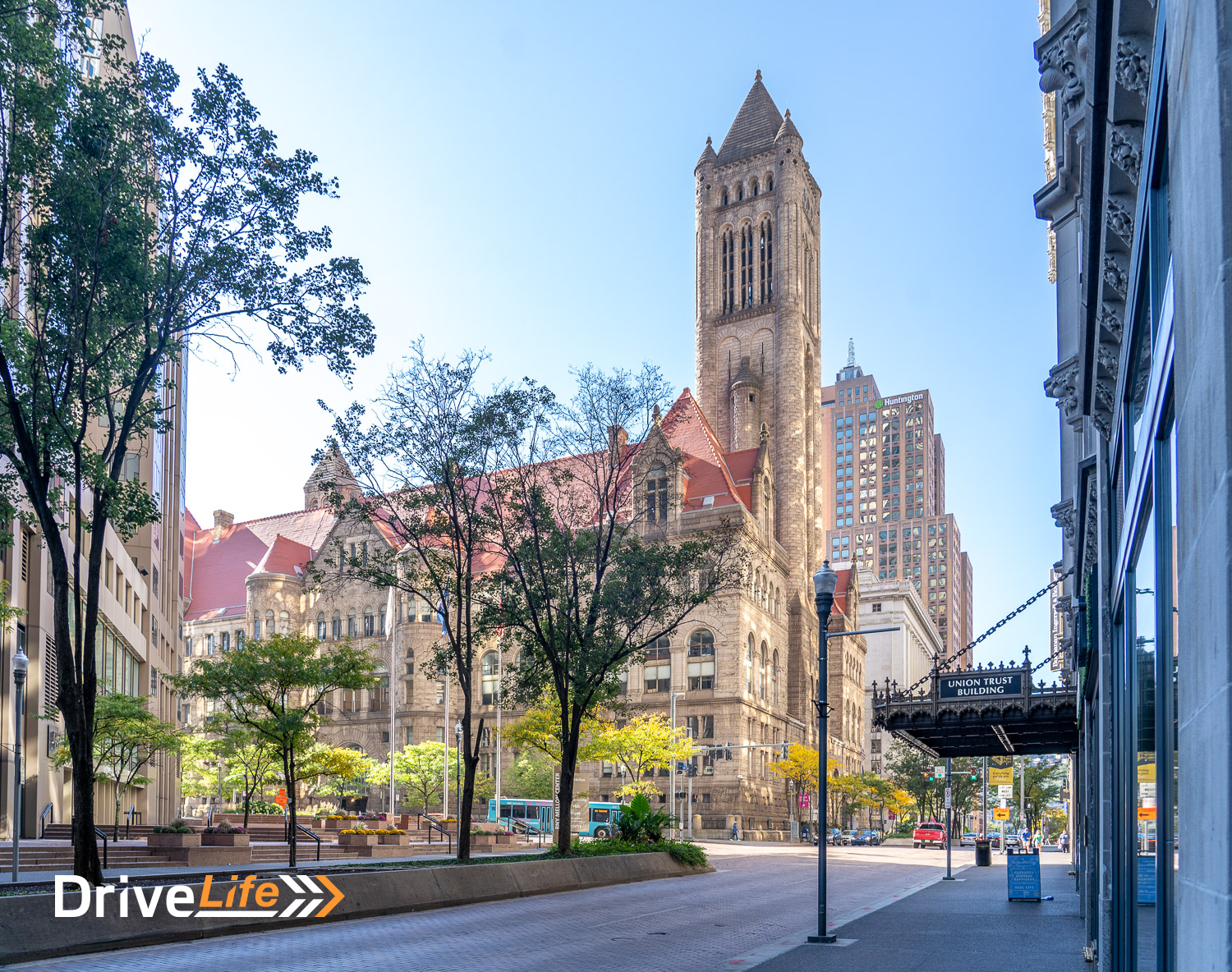
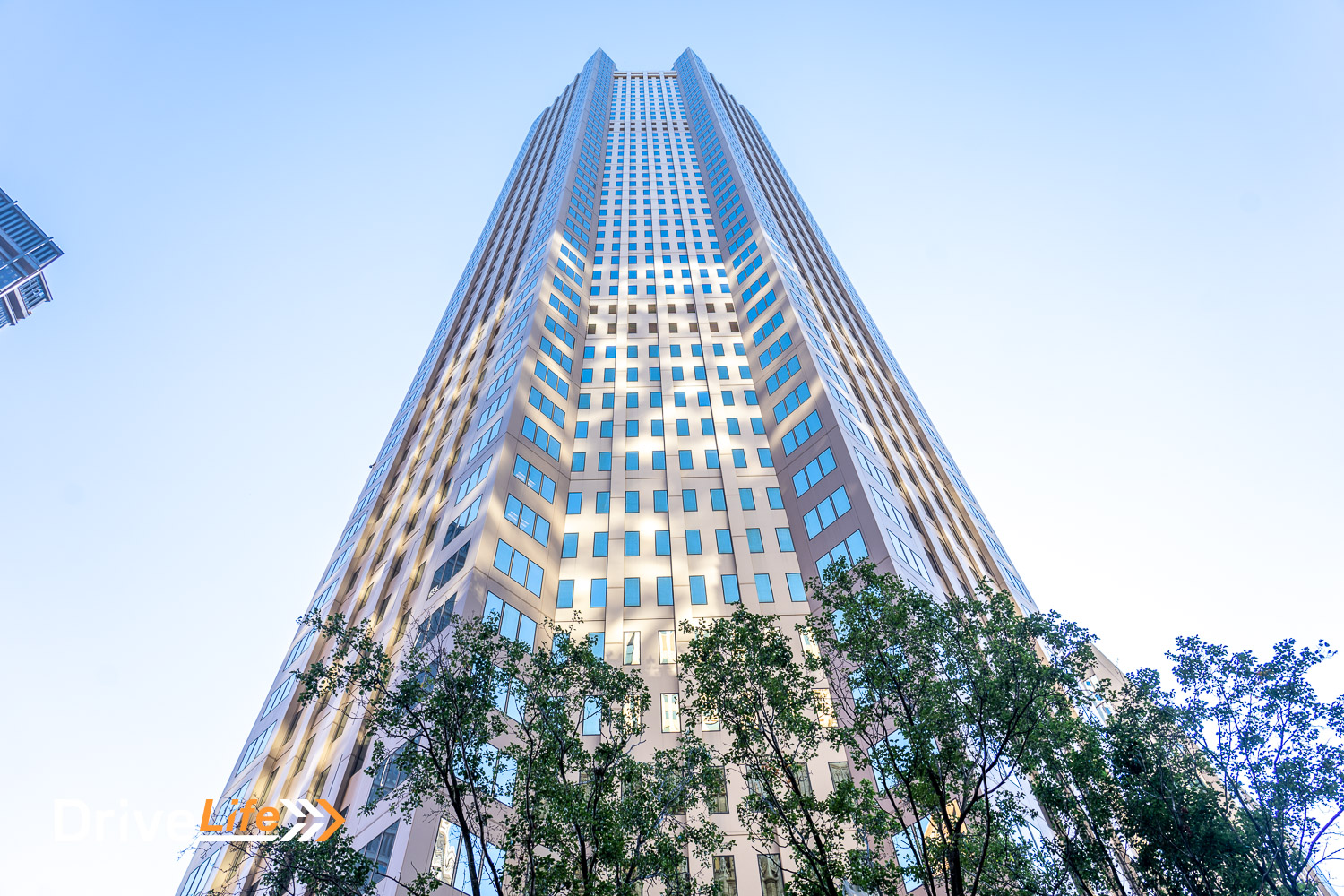
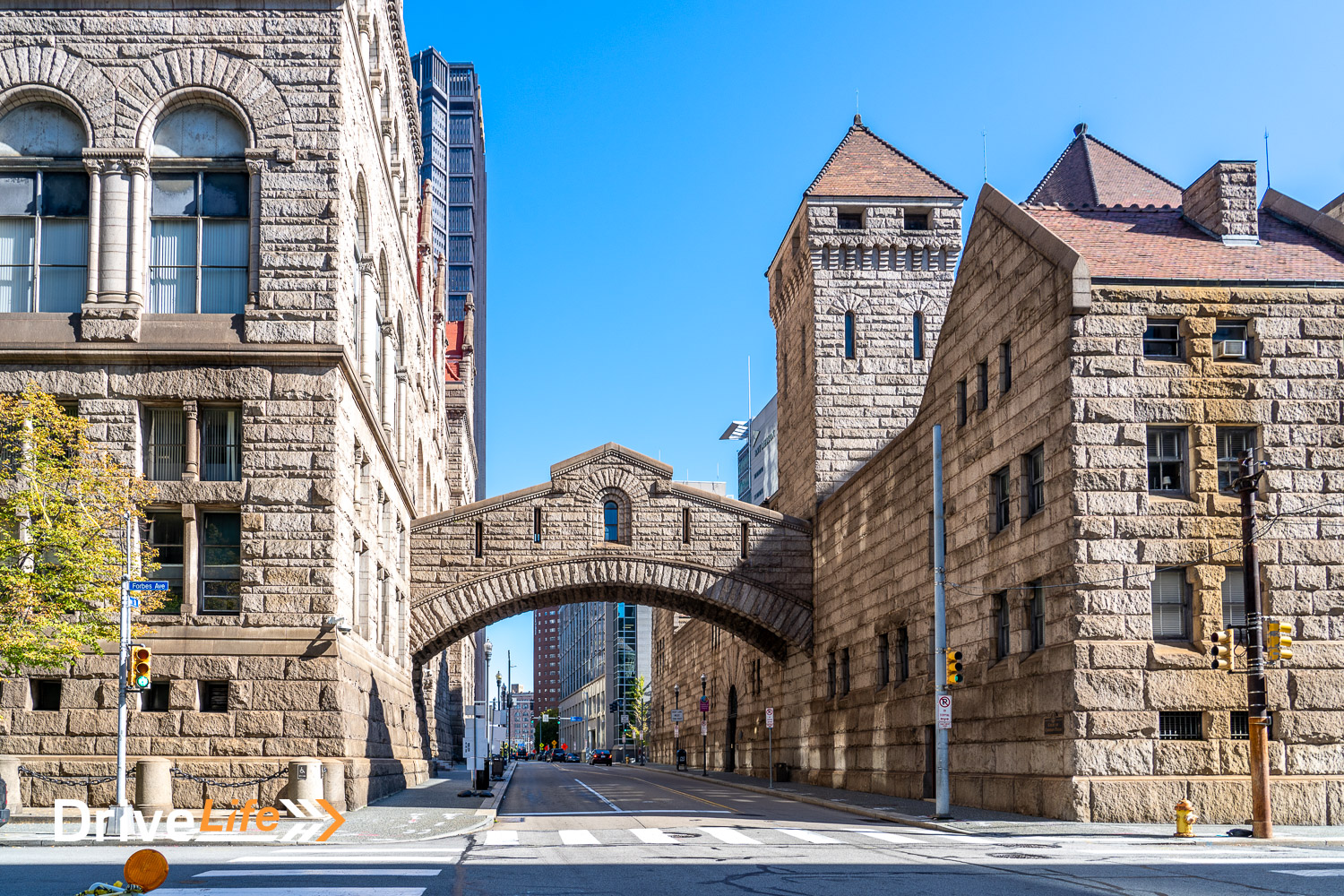
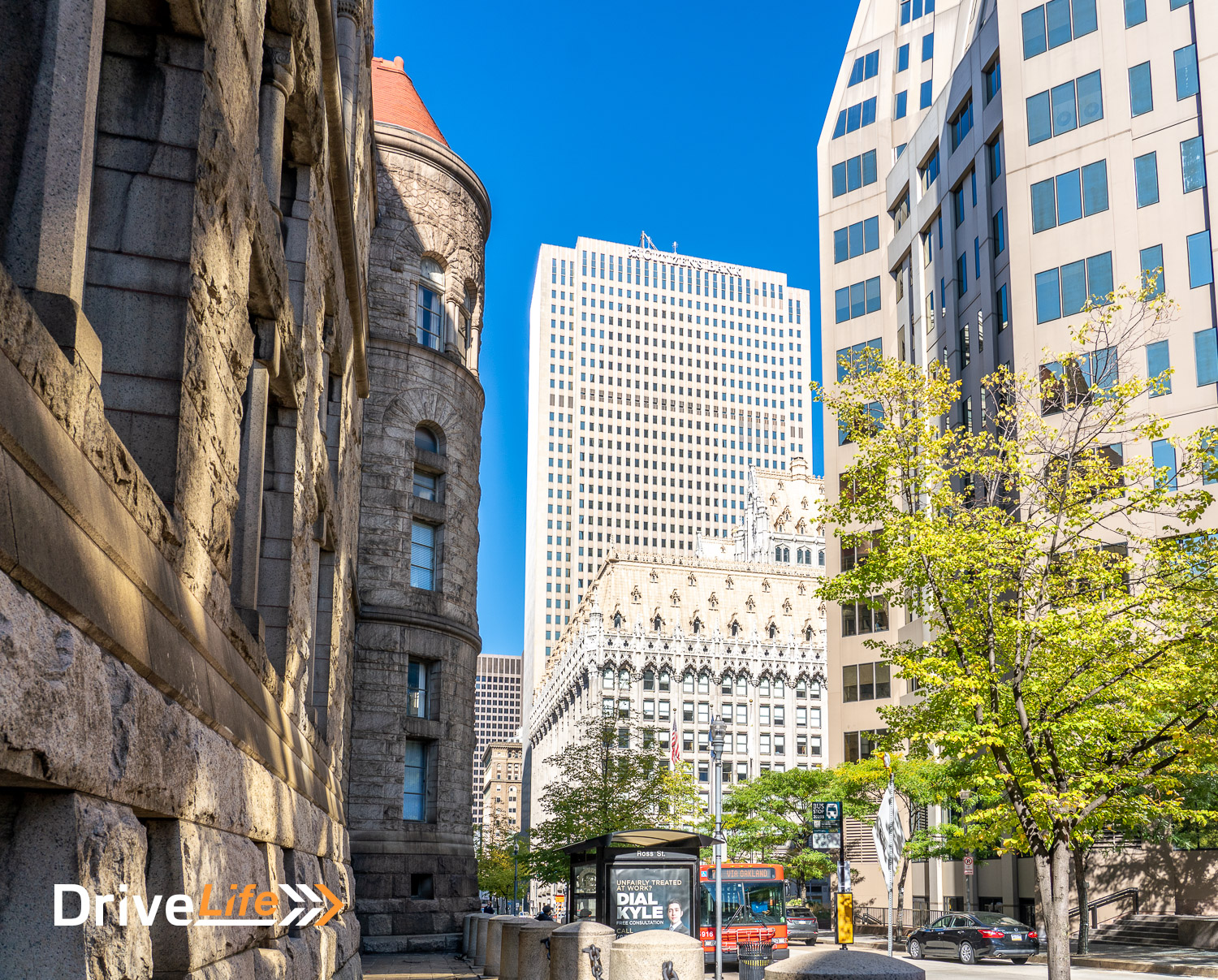
After the central city, we take the car across town to the Pittsburgh Welcome Visitors Center. With our phones guiding us we pass a huge convention centre that we assume holds the visitor’s centre. Eventually, we find parking and walk back to the visitor’s centre only to find it doesn’t open on the weekends. Argh! We grab an early lunch and then head back across one of the 3 rivers that encompass the city centre to find parking to go up one of the remaining two inclines in Pittsburgh. Apparently, there used to be a dozen of them, all running up the side of Mount Washington that overlooks the city. Now there are just two, and naturally, there are a massive tourist attraction, offering stunning views over the cityscape.
But first, parking. There is really only one place to park within reasonable walking distance of the Duquesne Incline that we are going to go up, and it’s US$8 to park there for up to an hour. Well, it would be US$8 if you have the exact change, and I mean change – not notes. Yep, you need to bring $8 in coins to feed into the parking machine. Your other option is to pay by a card, which sounds great but if you use a card it’s a flat US$15 for parking. I’ve got to say, it feels like a bit of a rip-off. We use a card and walk back up the road to the pedestrian overbridge, to the incline’s lower point. We didn’t realise until we went to pay that they won’t even accept a card there; it’s cash only and exact change thank you very much. If only they had put a sign on the other side of the pedestrian overbridge telling tourists this, it would be great. Some people get to the end of the line and then have to leave, because they don’t have cash. We managed to scrape the US$10 in exact change for both of us to ride up and back down. I’m always dubious of tourist places that do not accept cards for payment; it makes you wonder if they declare all their income to the tax department.
The cable cars work in tandem, so when one is coming down, the other is going up. This one has been in place since 1877 and the interior shows many, many decades of use. I love the copper roof and everything else that has been left untouched. The cars fit about a dozen people each time, so there can be a wait before you get your ride up the hill.
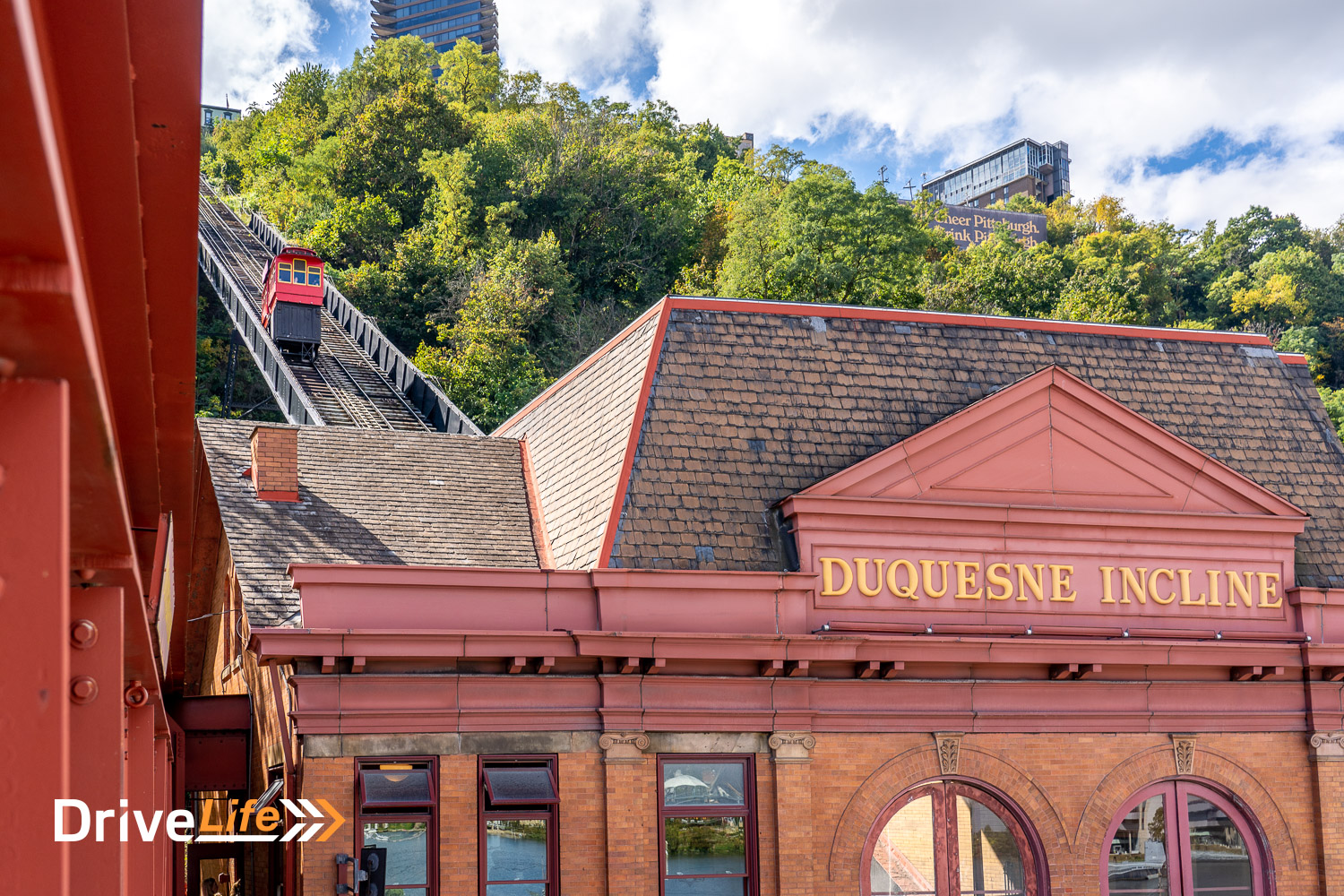
At the top of the incline, there is a huge amount of information and photos about this incline and Pittsburgh in general, along with a lot of photos. But it’s the view most people come for, and it’s mind-blowing:
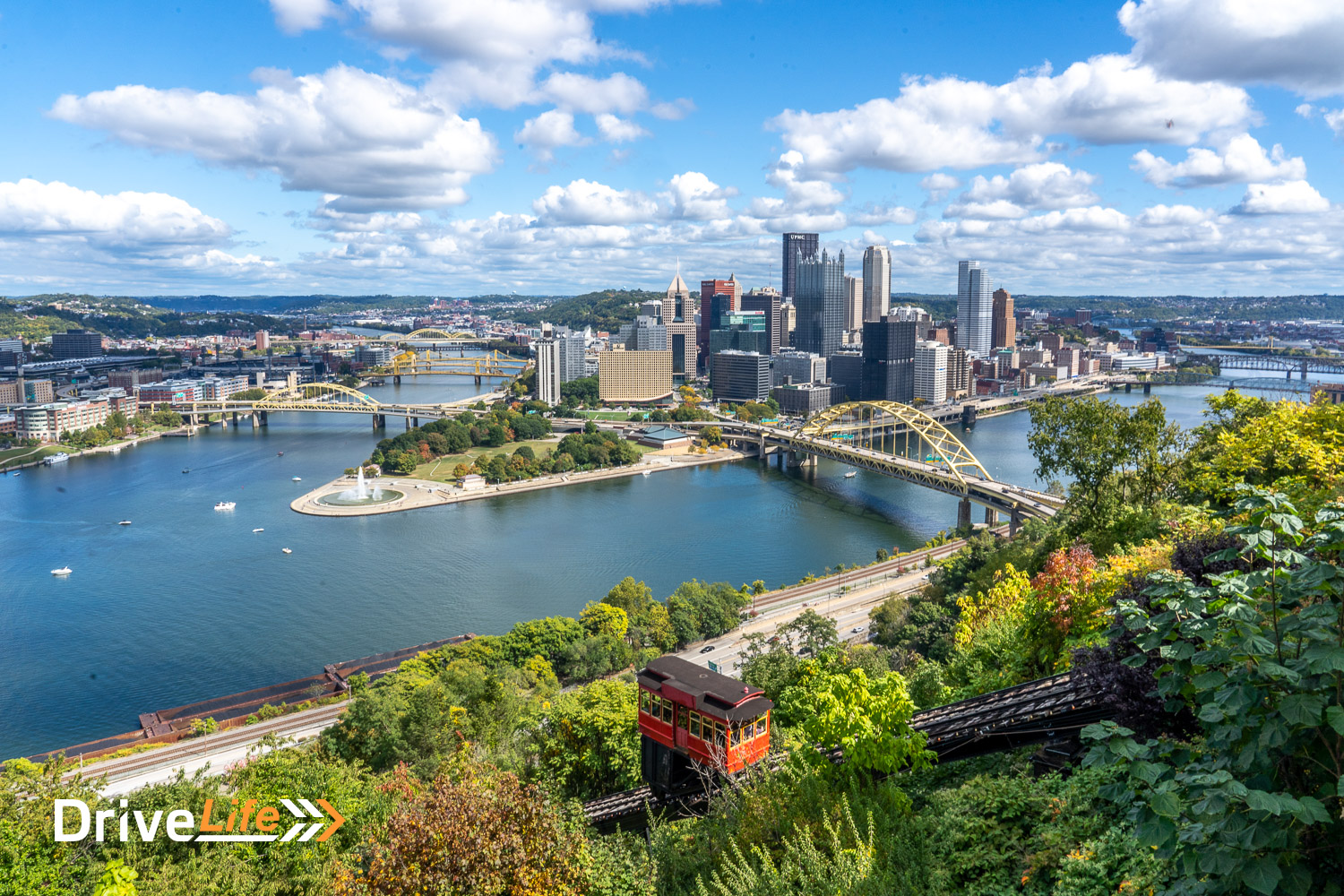
It’s the view that Pittsburgh is well known for, and you can absolutely see why. Luckily for us, our day was sunny and clear meaning fantastic views in all directions. There isn’t a lot to do at the top of the incline other than read the info and check out the views, but for the Duquesne Incline, you can walk down some stairs and see all the workings of the machinery. Probably more of a Guy Thing, but quite cool to see it all in action.
We headed back to the car and did a bit of a tour of the town, which used to be known as Steel City for all the steel it produced. It was on this drive – and the morning’s drive into the city – that we found a real pain in Pittsburgh’s ass: the roads. They are shocking, with huge potholes seemingly EVERYWHERE, and gouges right across the lanes that slam your car’s suspension. The poor Corvette got hammered all the time, and honestly, I can’t wait to leave Pittsburgh tomorrow for this reason alone.
2023 USA Road Trip: Day 26 | Pittsburgh, Pennsylvania to Columbus, Ohio
States entered after today: 19
Distance driven today: 185 miles/297 km
Total distance driven: 4,717 miles/7,952 km
It’s a pretty easy drive today, we’re leaving Pittsburgh and its terrible roads and heading to Columbus, Ohio. That means crossing into West Virginia at the halfway mark of this 185-mile drive. We’ll cross into Ohio well before Columbus.
So, it’s most of the day on the I70 interstate and as we cross into West Virginia, the condition of the interstate improves noticeably, and then even better again when we cross into Ohio.
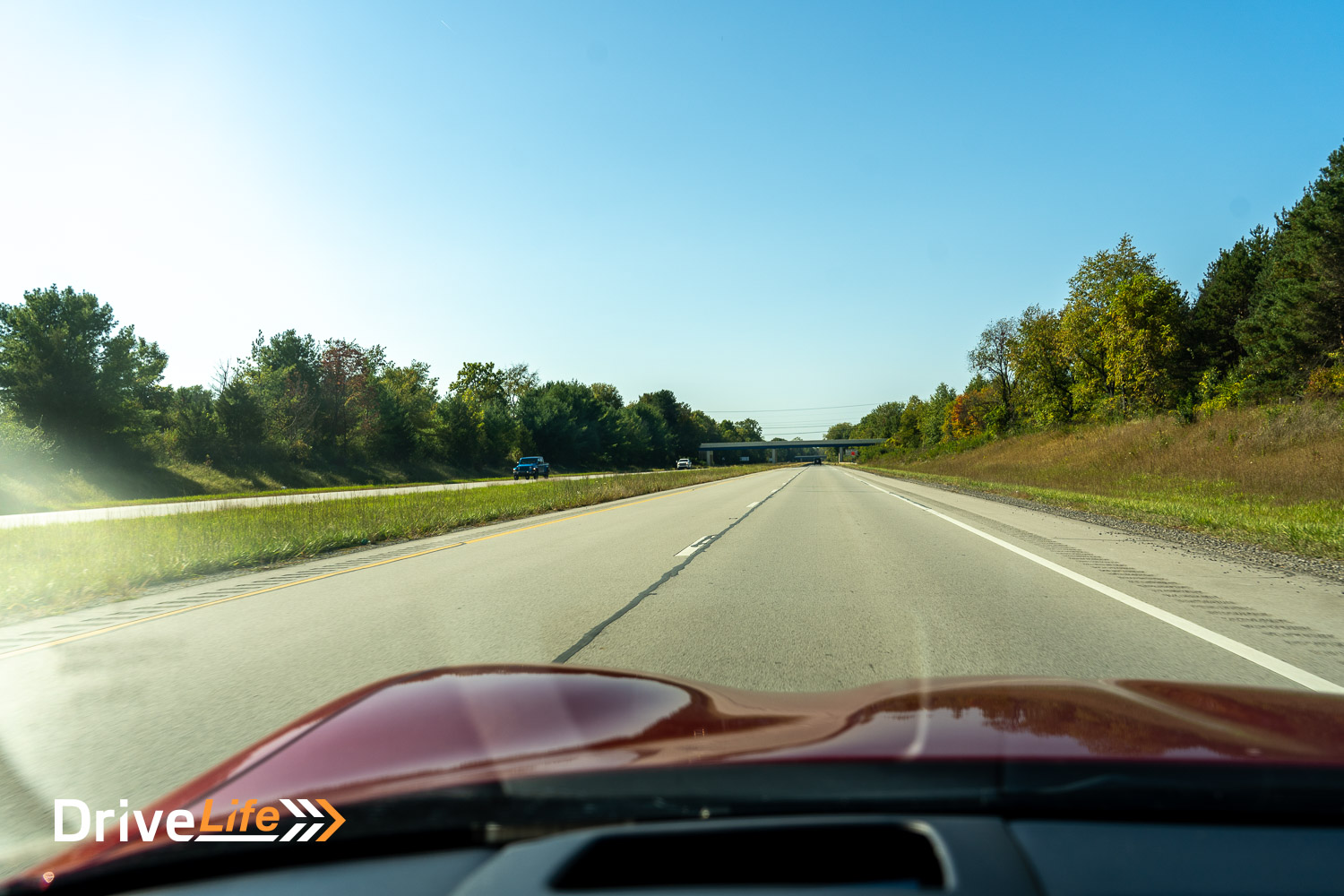
Once in Ohio, we stopped at a Crackerbarrel restaurant for lunch. I know I’ve mentioned Crackerbarrel before, but it’s worth mentioning them again; their food is excellent and their prices are great. They have 20 meals under $12, and many of those come with a free side like American biscuits (sweet scones), toast, or pancakes. Apparently, Crackerbarrel treats its staff very well and the company stands by family values. The good food is a real bonus and while we try and mix it up and try other restaurants, if in doubt Crackerbarrel is our go-to lunch or dinner venue. If I’m being honest – and my wife will kill me – sometimes we just go there to have dessert for dinner.
2023 USA Road Trip: Day 26 | Columbus, Ohio to Detroit, Michigan
States entered after today: 20
Distance driven today: 266 miles/429 km
Total distance driven: 4,984 miles/8,022 km
We’re doing an easy drive to Detroit, Michigan today, but are going via Mansfield, Ohio. Why Mansfield? A local in Columbus happened to mention that the prison that was used in Shawshank Redemption is in that town, and it’s basically on the way to Detroit. Since we already did the Stanley Hotel Tour that Stephen King’s book The Shining was based on, how could we pass up on visiting the prison used in the movie of one of his other famous short stories, and possibly the most famous movie bearing his name? We couldn’t.
It’s quite mind-blowing to arrive at the site and see the building that you’ve only seen in a movie. Pretty imposing too, and the entire building looks sinister just sitting there.
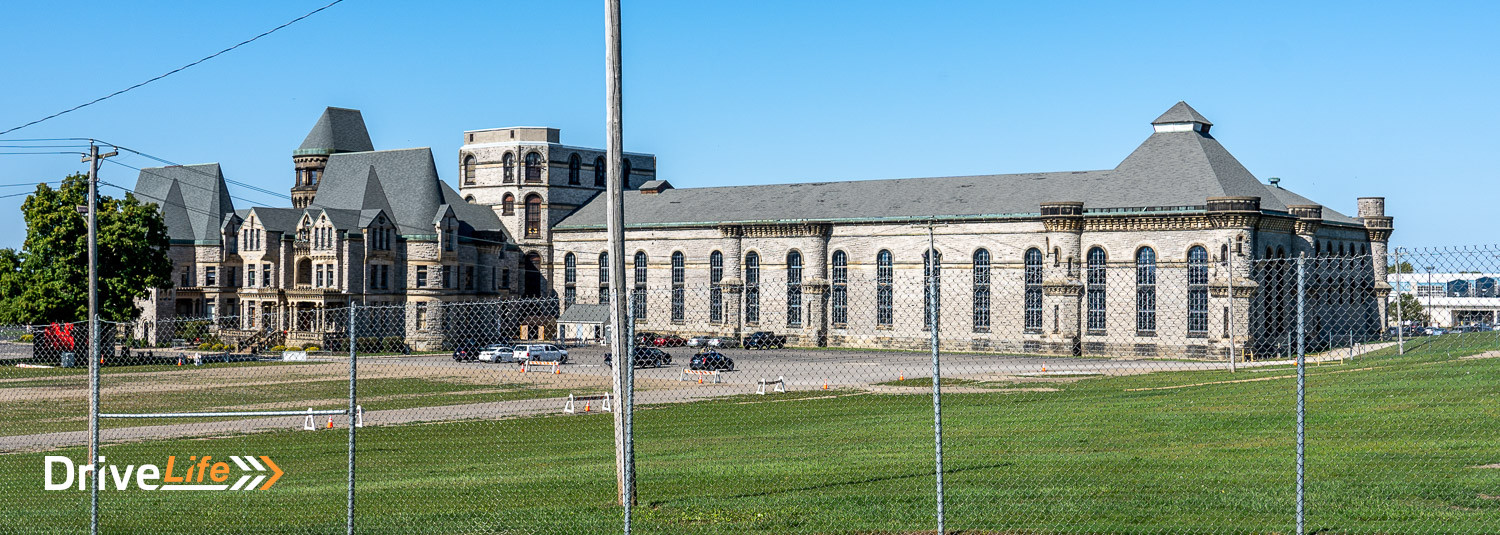
The building used in the movie was built in 1896 as the Ohio State Reformatory, so was used to train non-violent prisoners so they could be sent back into society, hopefully with better habits and skills. One of the longest-server wardens of the reformatory decided that the prisoners were people too, and many just needed some help to get them on the straight and narrow. Apparently, he succeeded, and the reformatory had the lowest rates of recidivism in the USA for many years.
You can do a self-guided tour at the reformatory using an audio wand, but we decided to go with the guided tour. That means we’d get to go into places that the self-guided tour doesn’t. Our guide was just 22 years old, so wasn’t even born when the reformatory was shut down in 1990, but he had all the dates and names down pat, and could rattle off huge amounts of info easily. For the first time on any tour, we actually had little wireless devices hanging around our necks and some earphones, so we could always hear what he was saying no matter what direction he was facing or how far away he was.
The tour itself was a mix of the building’s design and history, and then some stories around Shawshank Redemption as well. It went for 90 minutes and was well worth the US$35 each.
Opened in 1895 to 150 prisoners, the 250,000-square-foot facility has housed over 155,000 inmates over its history of over 100 years. We were told that on the first day of filming Shawshank Redemption, there was a crane with a wrecking ball on it in the car park and ready to go. As soon as filming was finished, the building would be demolished. But around 500 locals got work as extras in the movie and that renewed the calls to save the building. Of course, the book and then movie were so successful they basically saved the building, and they’ve been doing tours here since the mid-1990s.
Walking around the building was pretty amazing, after all, it’s 127 years old and still has the original floor and walls, and signs of use from 1895. As part of the guided tour, we got to go through the main cell block, and that was sobering. Six floors of cells that are tiny, and we were told that at times 3 men would share one cell that was barely big enough for two. I found some hash marks inside one cell (we could go into any cell that we wanted to) where a prisoner had been marking off the days, weeks, months, or maybe even years.

There were some great stories of how Shawshank Redemption was filmed. We went into Brooks’ apartment room, which is actually inside the building. We walked inside the warden’s office that was used in the movie (and in real life) and saw the safe that was used in the movie. There are plenty of info boards in each room so you can read about the movie and how it was filmed, or what the room was used for when the prison was operational.
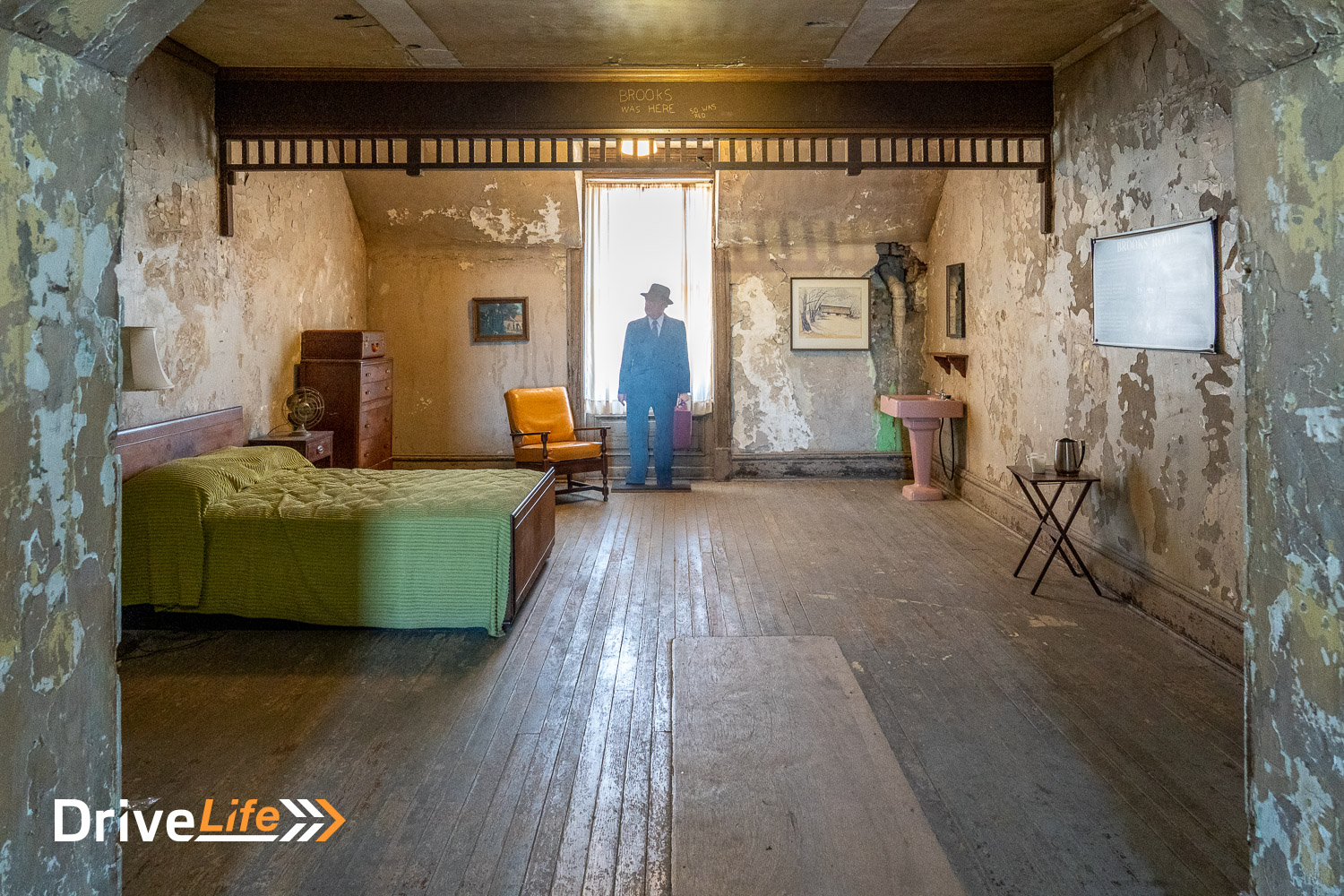
Our guide told us lots of stories of life in prison. Apparently at one point, 20 or so prisoners decided to light fires in their cells in a bid to escape. The warden took a novel approach so instead of calling for help from the fire department, he went on to the PA system and told the prisoners, “If you boys want to live, you might want to put those fires out,” – and they did. I doubt that would happen in 2023.
We went up into a long storage area, dark and dismal with no windows. In the 1930s there was a huge fire at another prison and the warden at the reformatory was told that he would be receiving 300 or so maximum-security prisoners. He countered back with the fact that the reformatory wasn’t a prison and wasn’t set up for those sorts of prisoners. “They’re already on their way to you” was the response. So, in a narrow storage area with no windows, up to 330 maximum-security prisoners lived and were allowed outside once a day for an hour. We walked around the walls with our cellphone flashes as torches and read the words that those prisoners from the 1930s had written. Some of the words and images are not family-friendly, but it was still a privilege to read those words from men long dead.
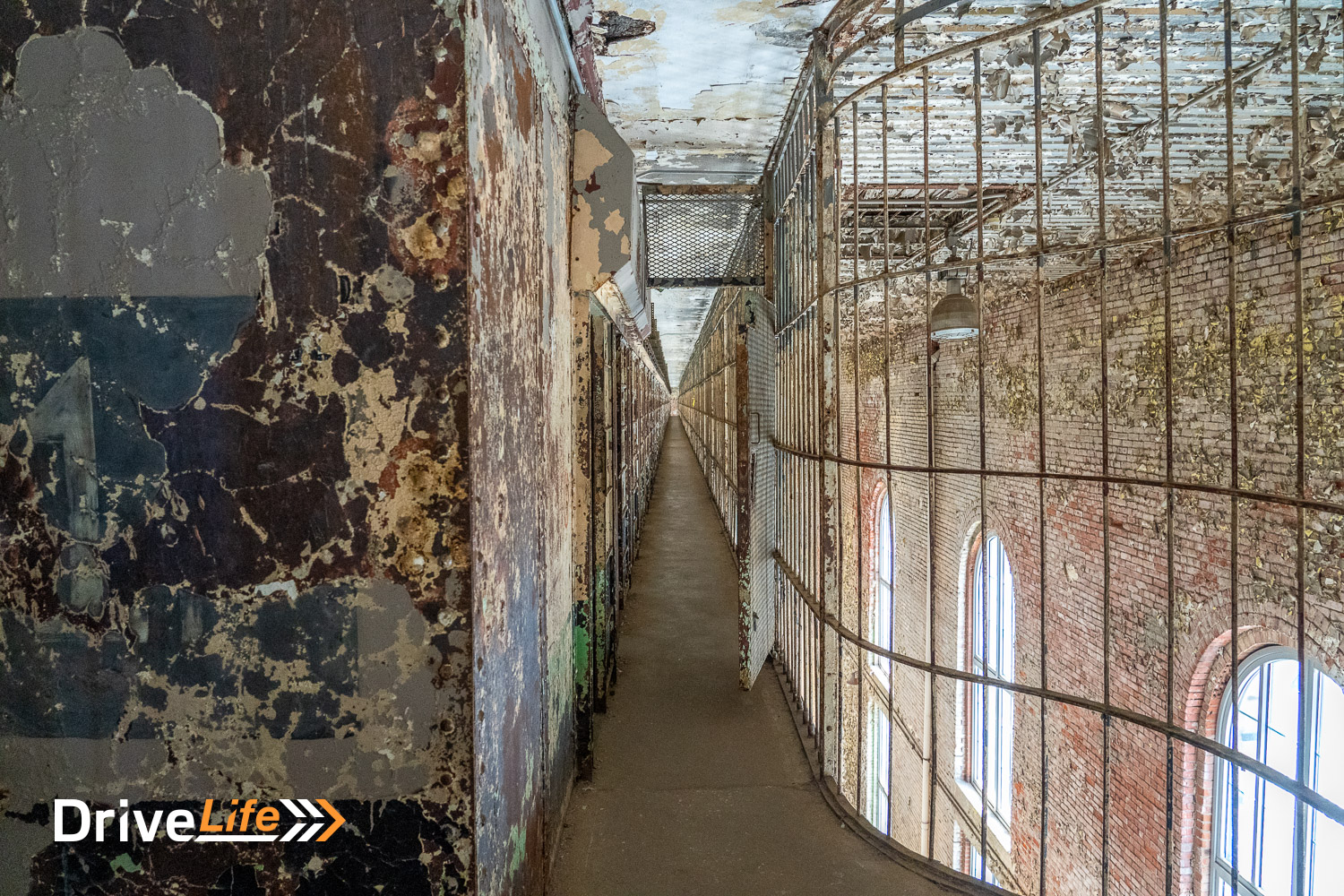
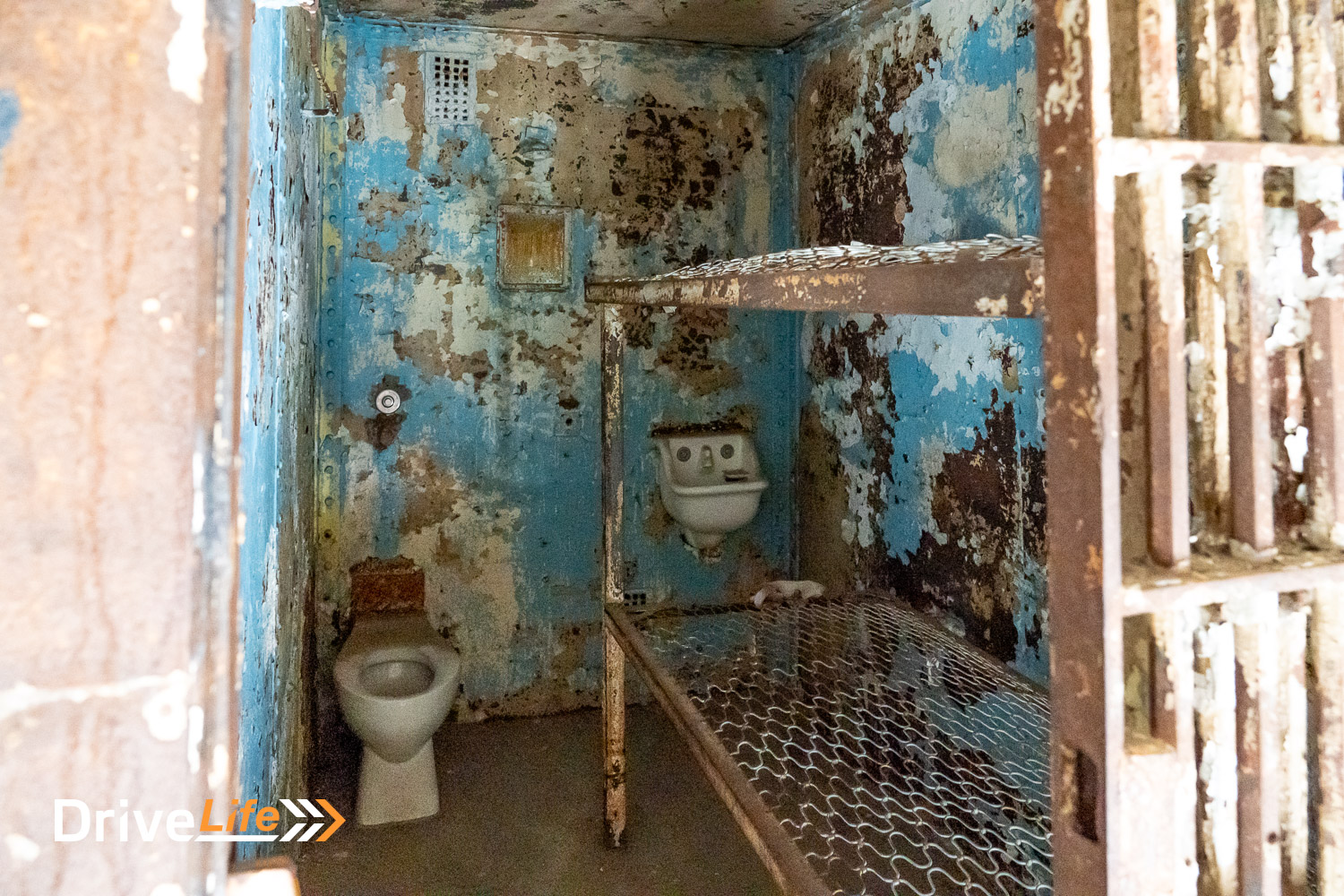
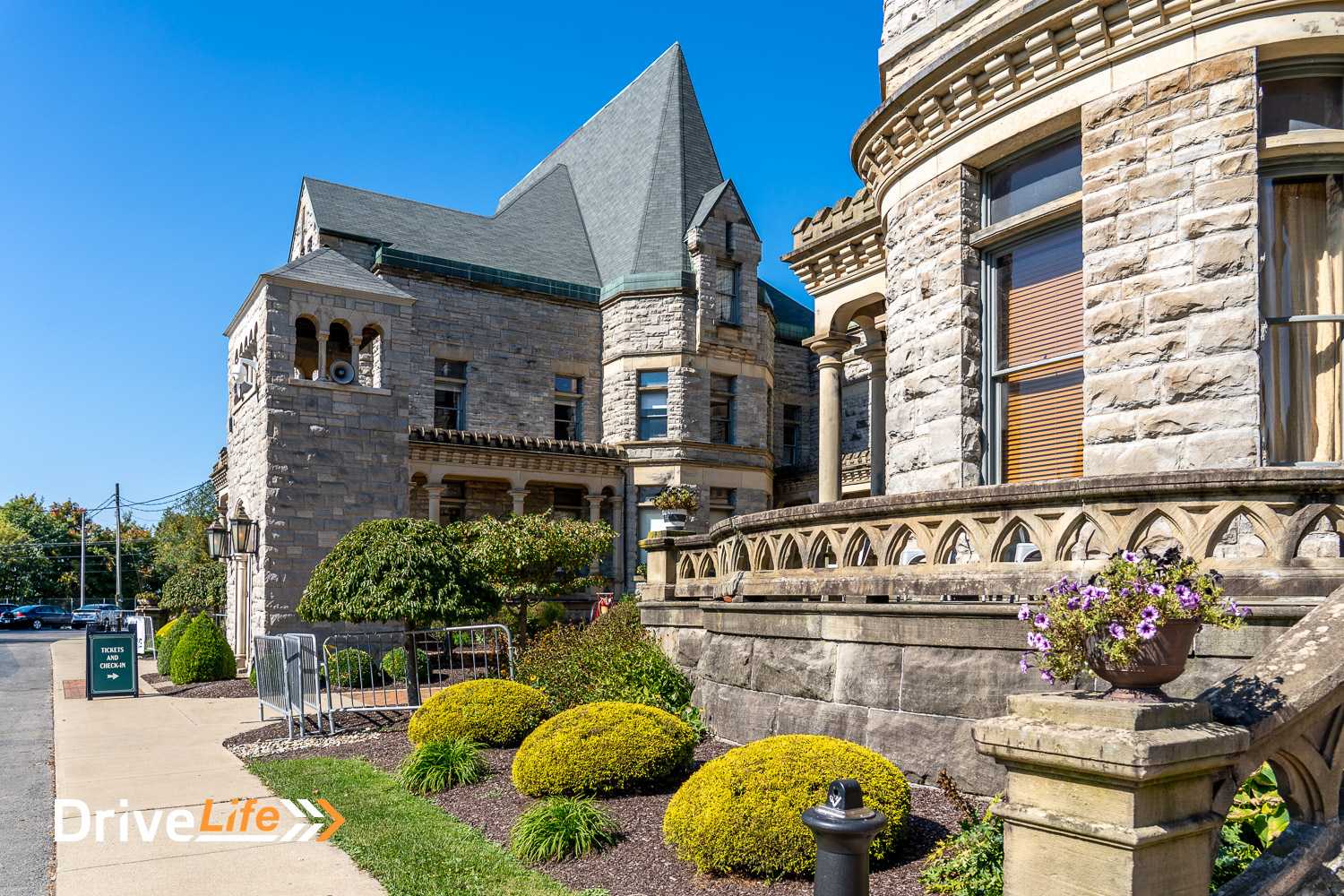
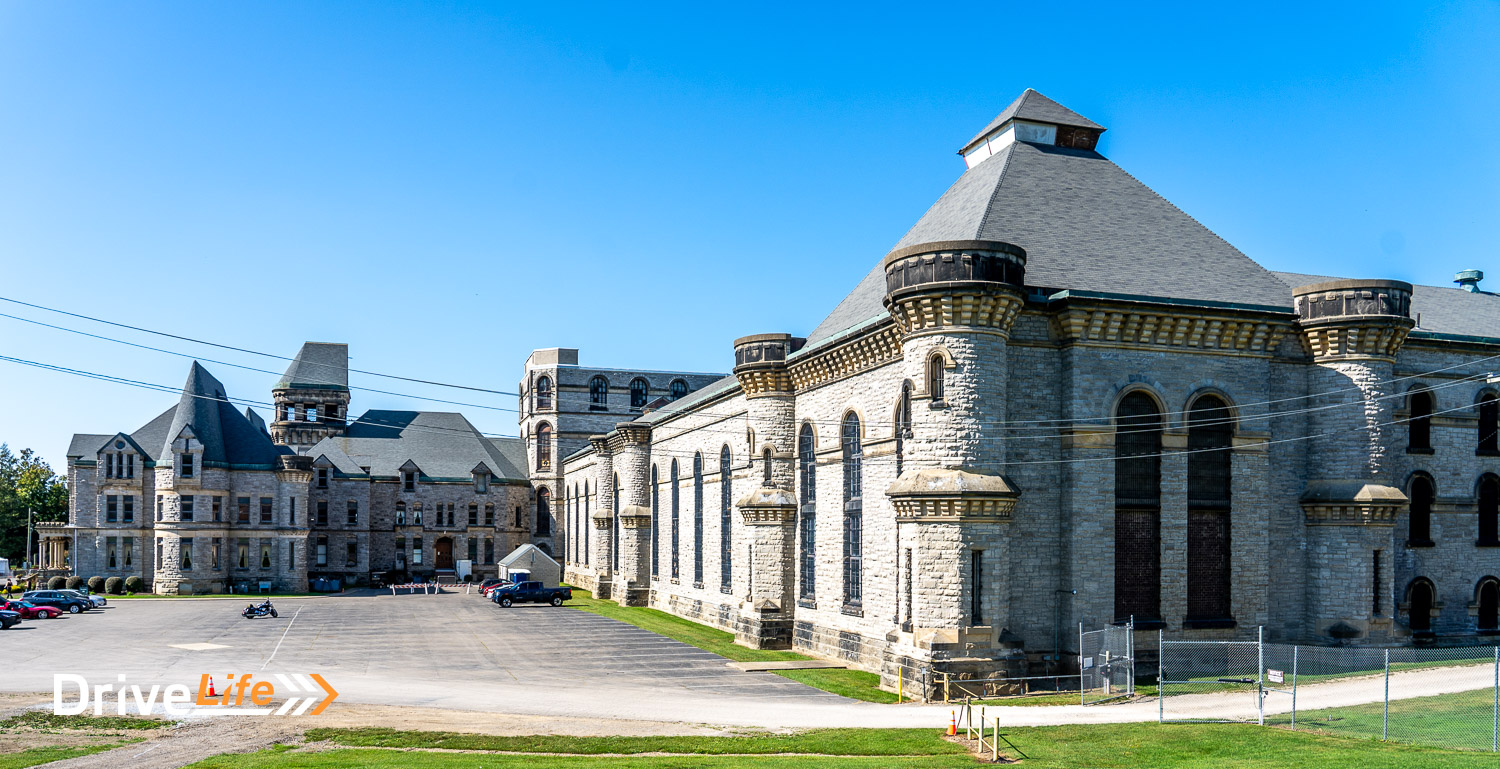
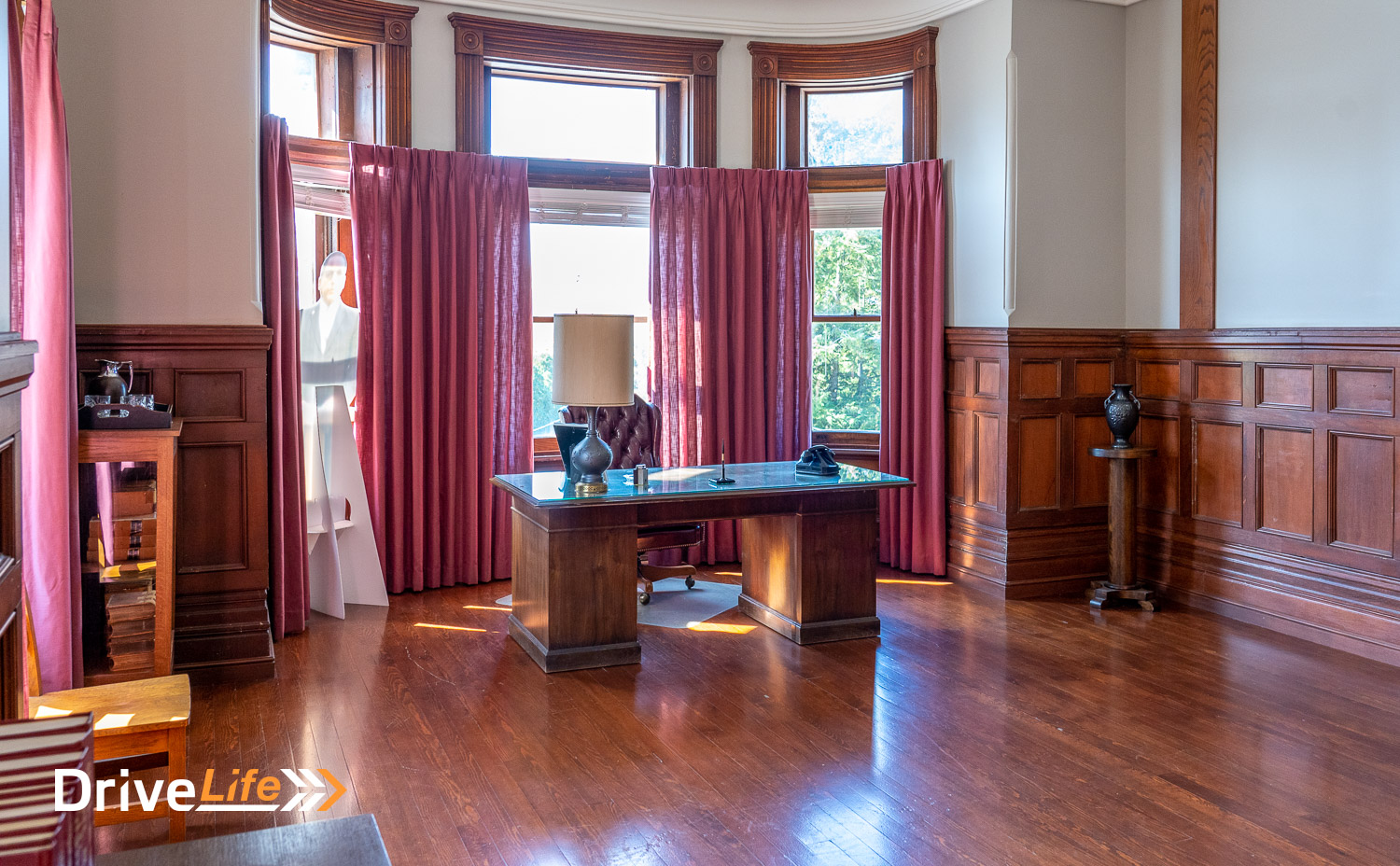
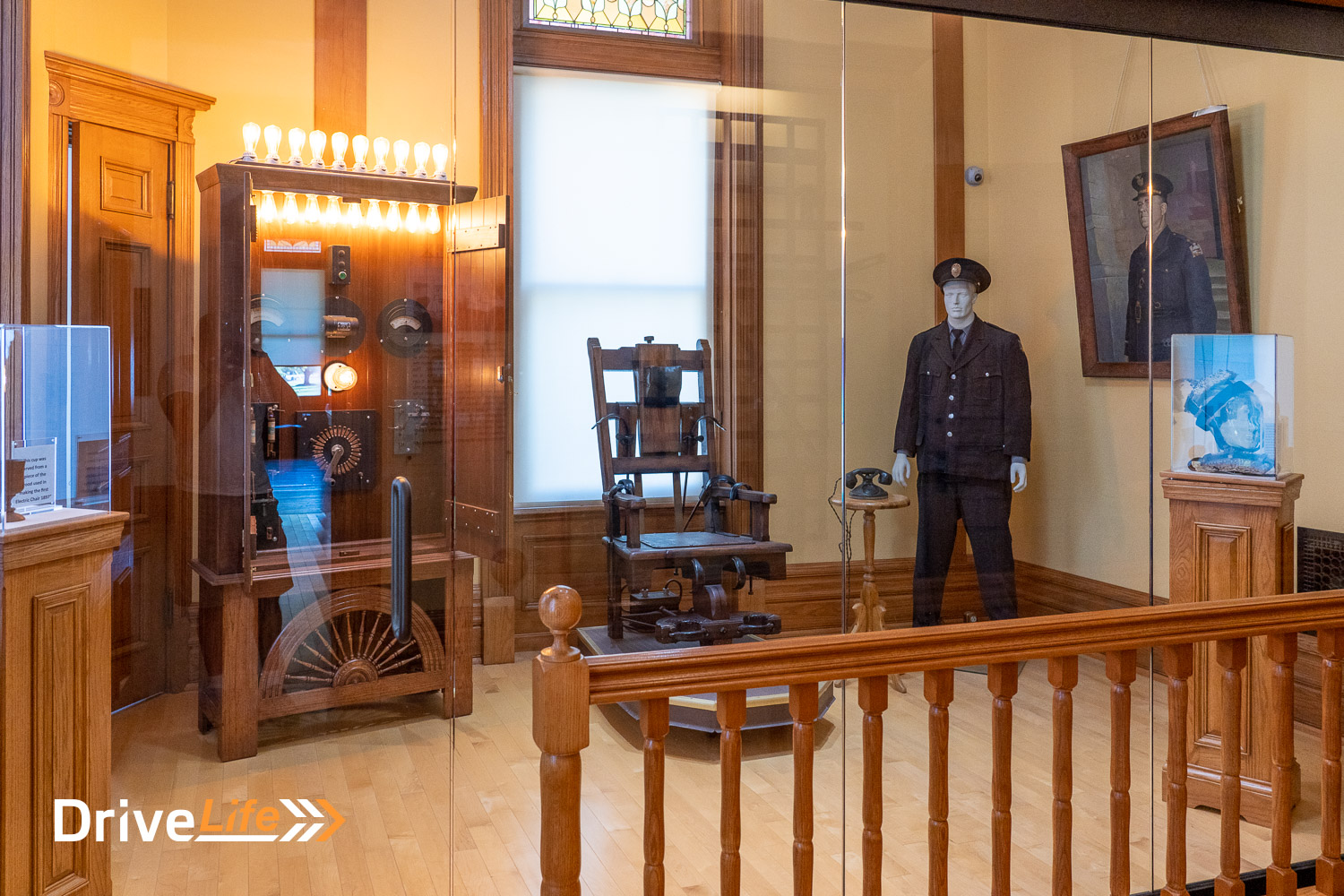
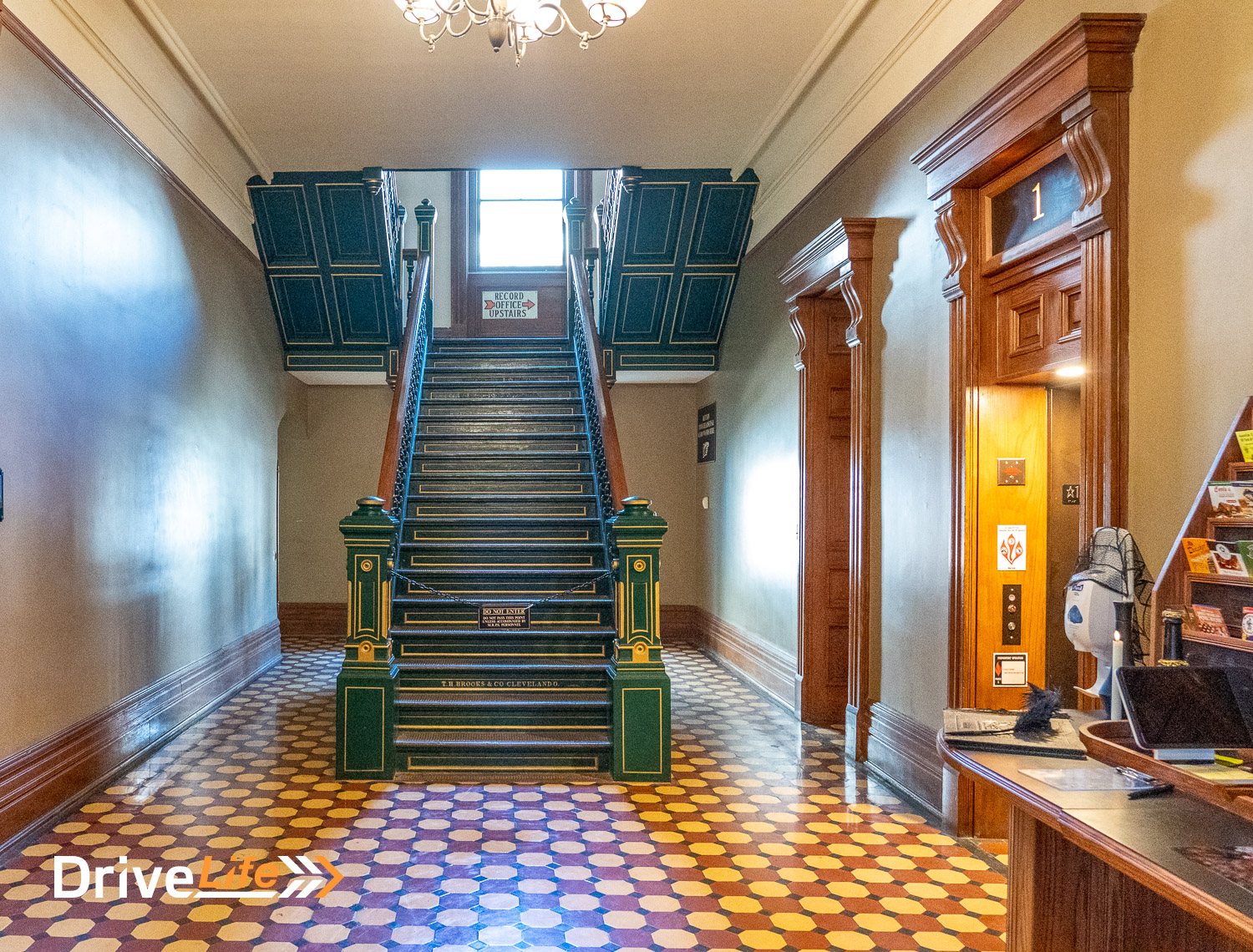
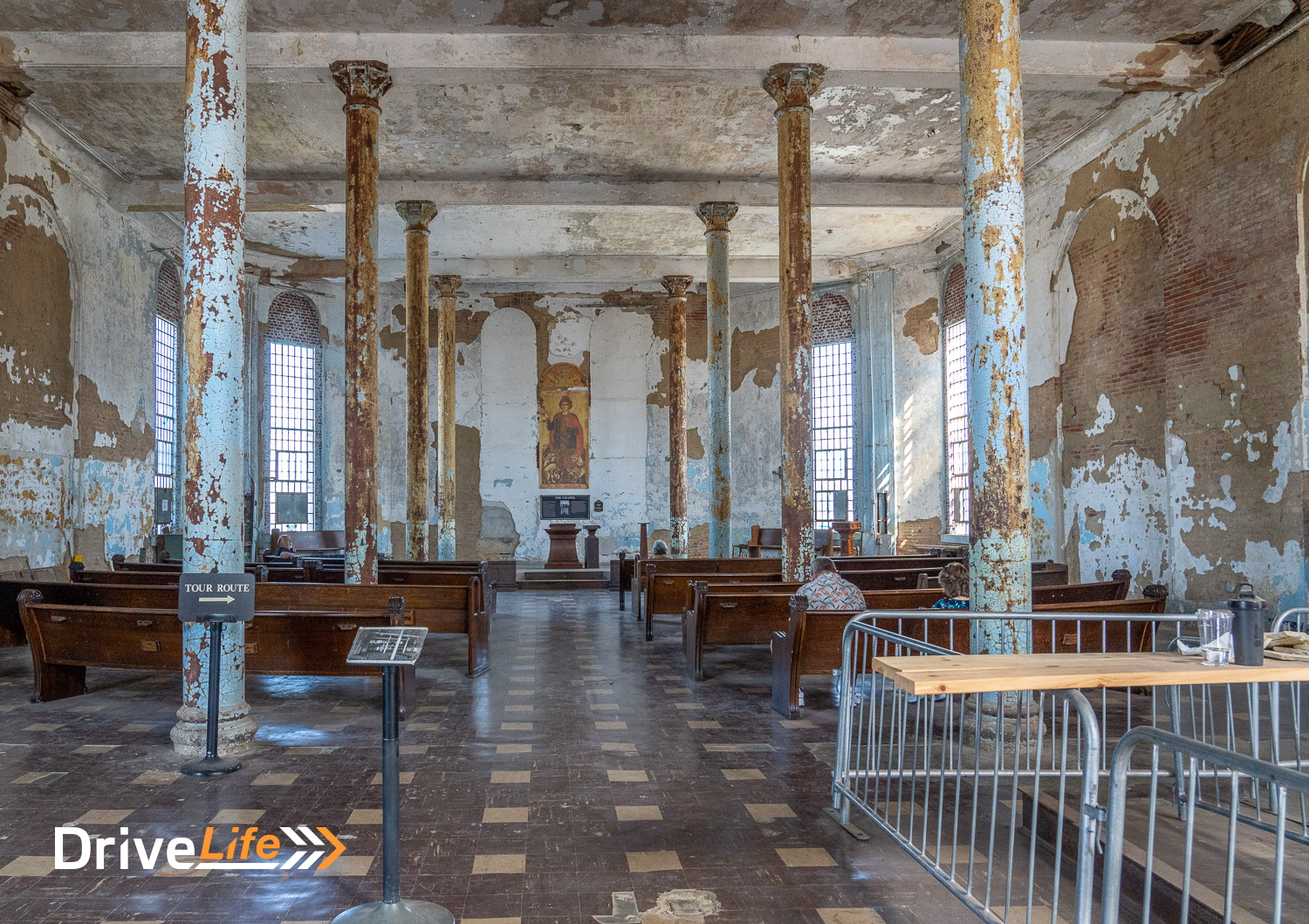
Even if you aren’t a Shawshank Redemption or Stephen King fan, this reformatory is a must-see.
On exiting the reformatory, it’s 30 degrees outside and the sun is beating down on us – we’re hoping that as we drive north, it will cool off some. We left Mansfield taking an easy drive to Detroit. The roads in Ohio battered the Corvette and even when we got into Michigan, they were no better.
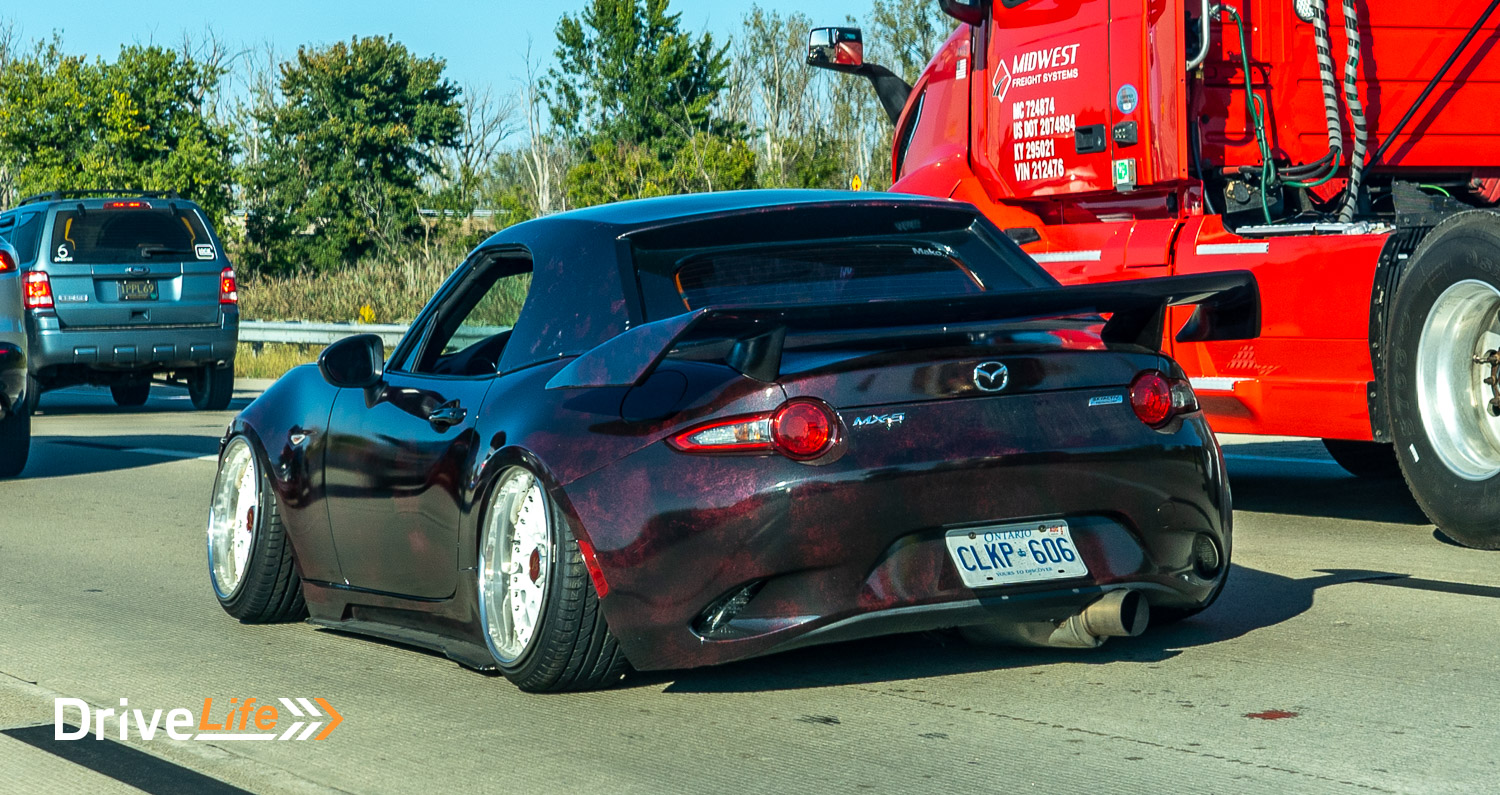
2023 USA Road Trip: Day 27 | Detroit, Michigan – Henry Ford Museum
It’s 9 a.m., it’s 30 degrees outside and I’m heading to the Henry Ford Museum of American Innovation. Yes, it’s a mouthful of a name but what I believe the name is trying to get across is that it isn’t just a Ford car museum. In fact, it’s far from that, as I experienced during my visit.
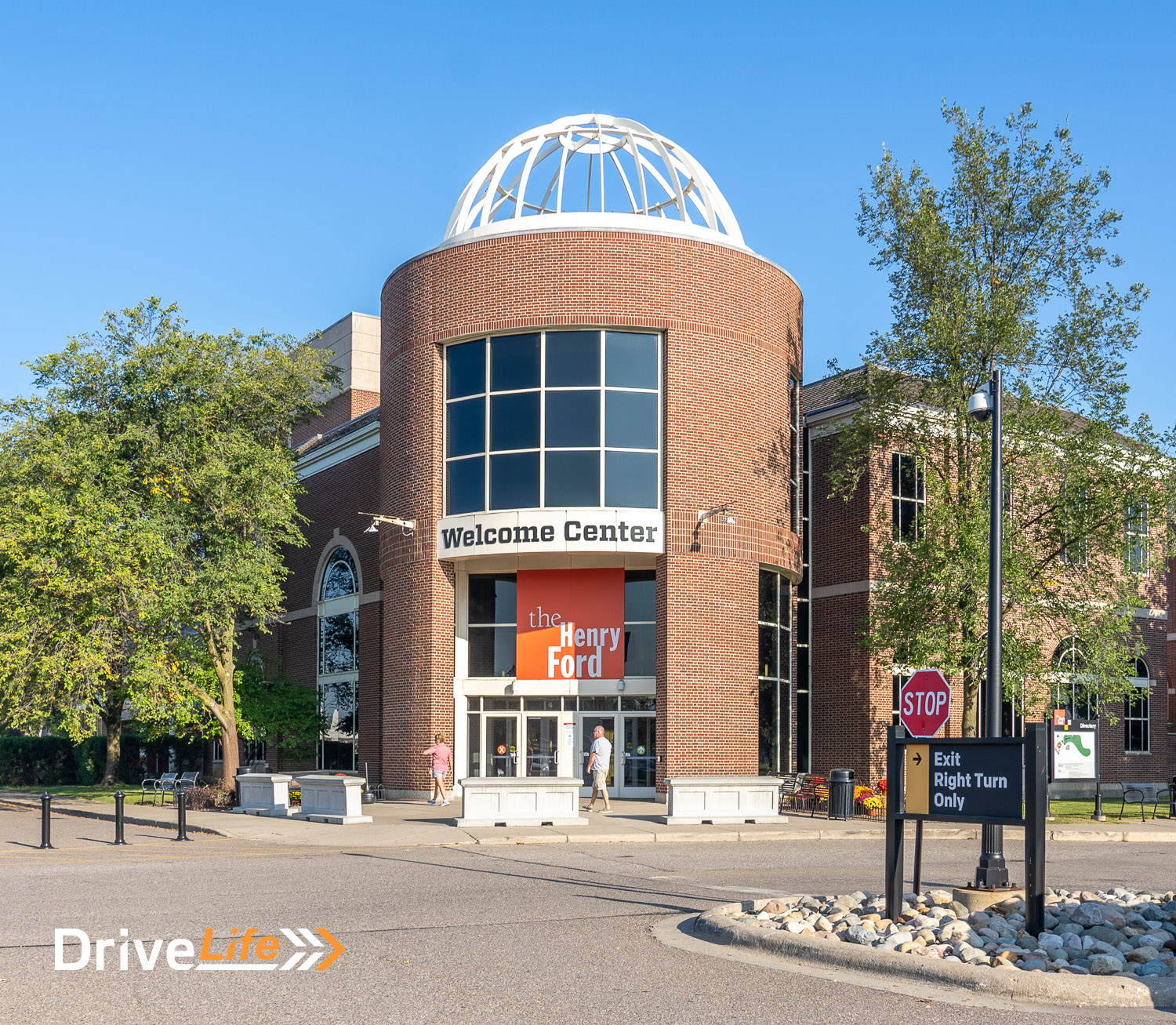
First, you have to get to the museum which is a fair walk down a long building. There are numerous digital and printed maps around the place to help you navigate, and you’ll need them; this place is HUGE. To put its size in perspective, there must be 20 planes inside the museum, along with 20 trains. Everything is in one building so that makes it easier to get around, but you’ll need a rest now and then – there’s a lot of walking to be done if you want to do your visit justice.
Thankfully our timing worked out for me to visit the museum on a Tuesday, so that meant only a few hundred people there. With the size of the building, it almost felt like I was the only one there at times.
I started off with the Liberty and Justice For All area and was stunned to find the actual bus that Rosa Parks sat in and then was arrested in, inside that area. The bus has been restored like new, and there’s an attendant on the bus at all times to give you a rundown on the day that Rosa refused to change seats for a white person. The attendant played a short audio clip of Rosa speaking, and I must admit to having some goosebumps listening to her, especially when she said, “I wanted to know what my rights were as a human being”.
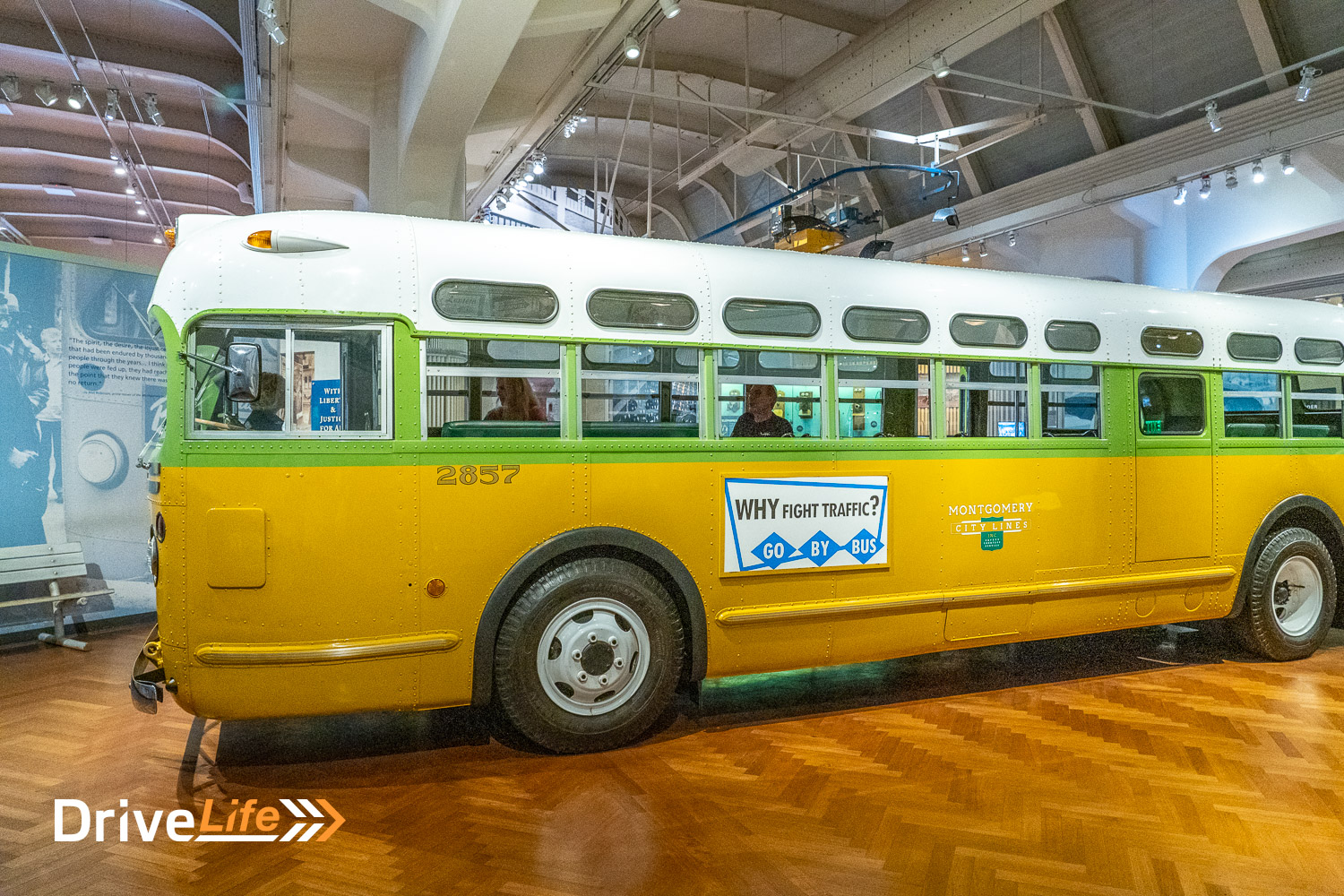
Also in this area are a large number of displays including the abolition of slavery, women’s right to vote, independence from the English, and presidents who have come and gone. They even have the actual chair that Abraham Lincoln was shot in, right there on display.
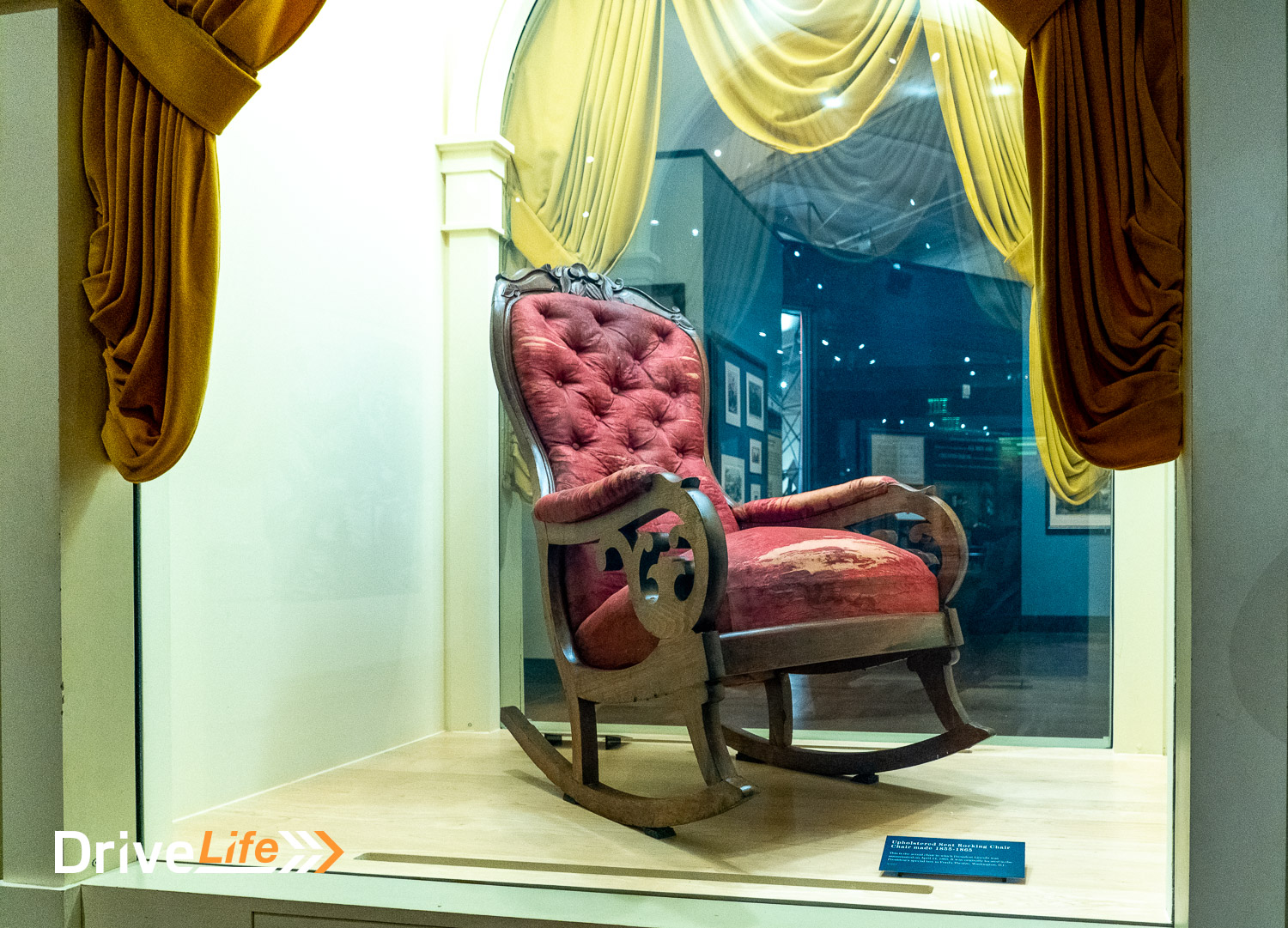
After this area, I moved into the Innovation section, which has a chronological flow to the development of machines to help mankind survive. Every corner I walked around I’d be stunned by the size of the machinery on display, and then I’d come around another corner and find something even bigger.
One of them was the Avery Steam Traction Engine from 1916. This is a self-propelled traction engine that moved from farm to farm and weighs 23 tons. I’d love to climb up on this one for a look, but you are not allowed to. In saying that, the museum has made quite a few of the exhibits accessible.
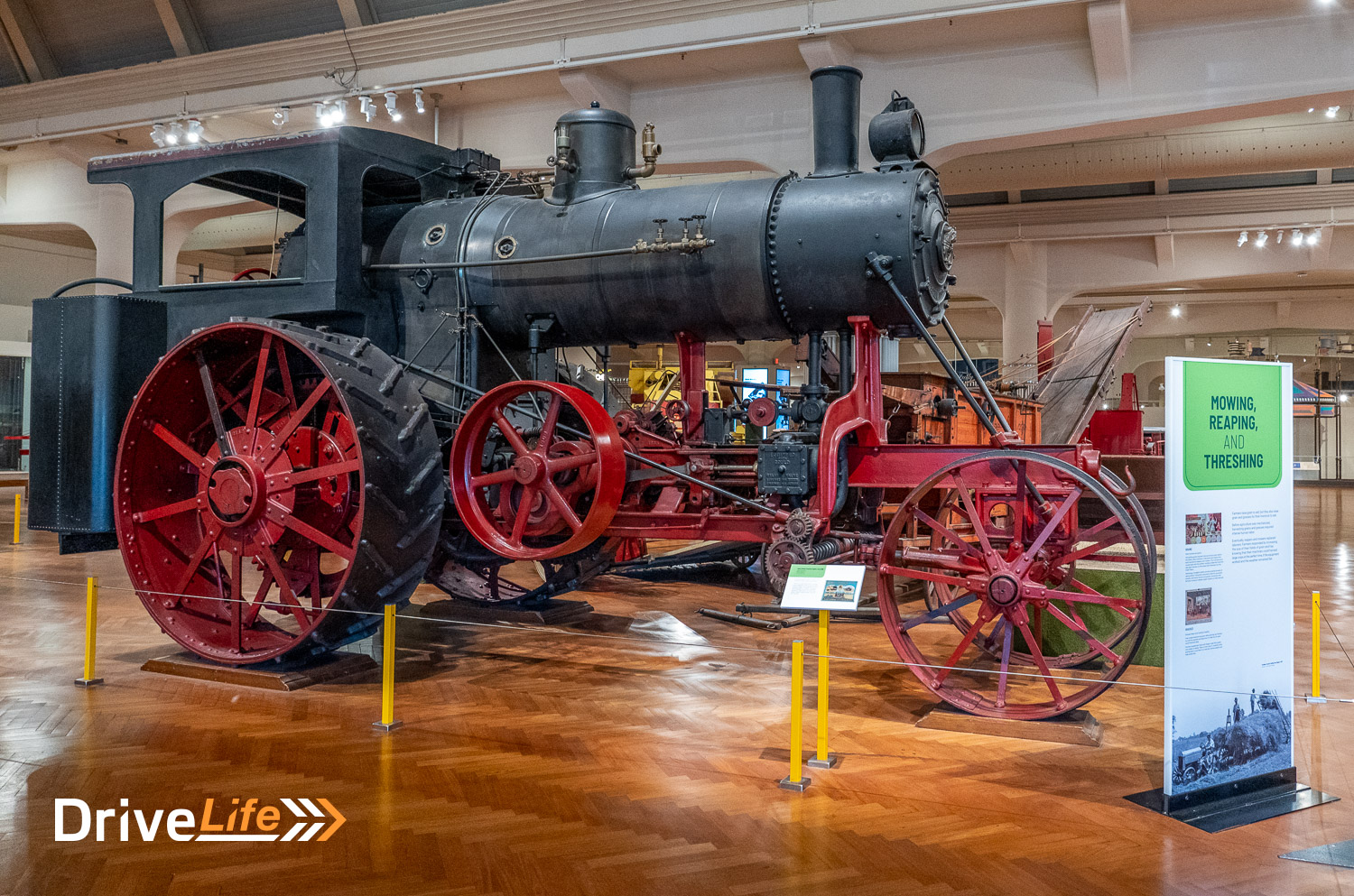
The biggest of all was the huge coal/gas and steam-powered engine was one of nine built for Ford’s Highland Park Plant, where they built the Model T. Each of the 9 generators created 4,000 kW of power at 250 volts, and the engine driving the generator managed 6,000 horsepower at just 80rpm. That’s a phenomenal amount for an engine in 1912.
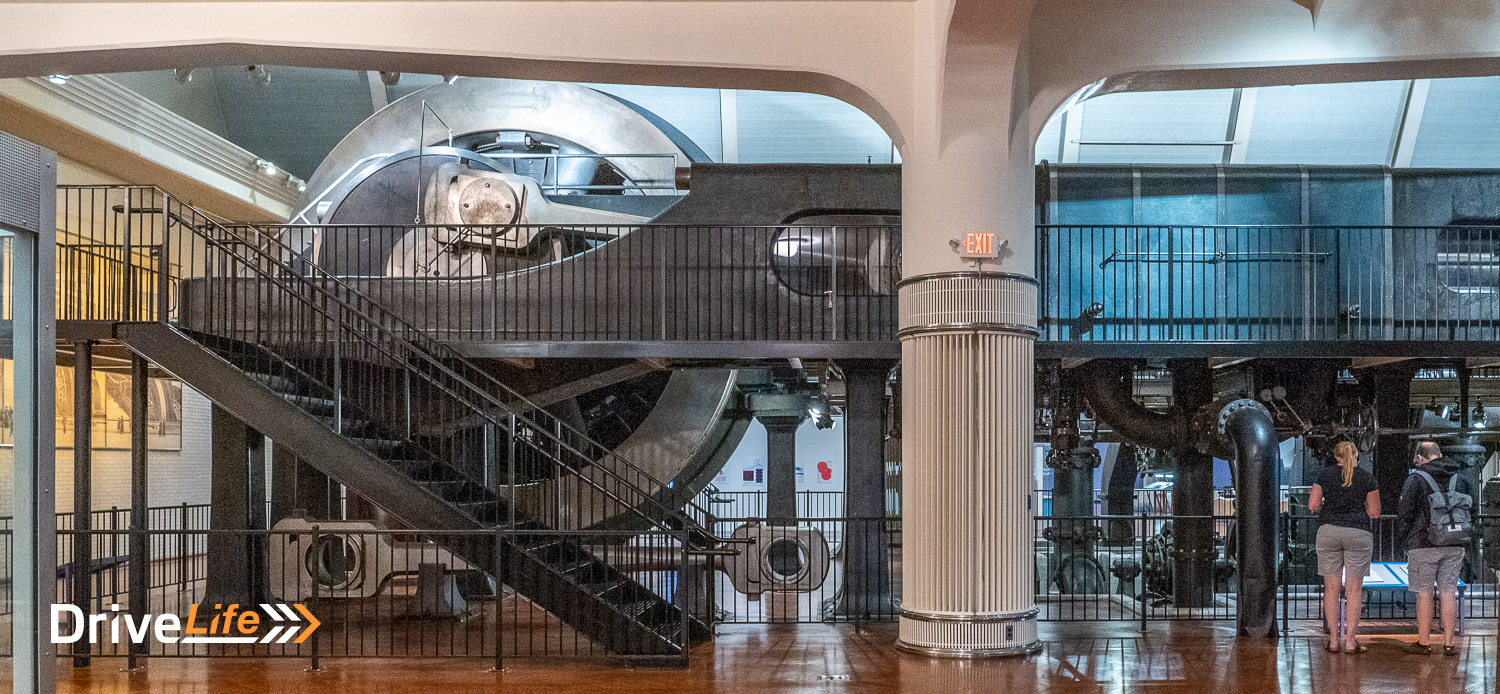
Under the one on display at this museum, there was a spare con rod that had to be 20 feet long. Just standing next to the engine was an experience and there is a walkway so you can go up on top of the engine and look around. We’re talking about 6 metres up – this thing is a giant.
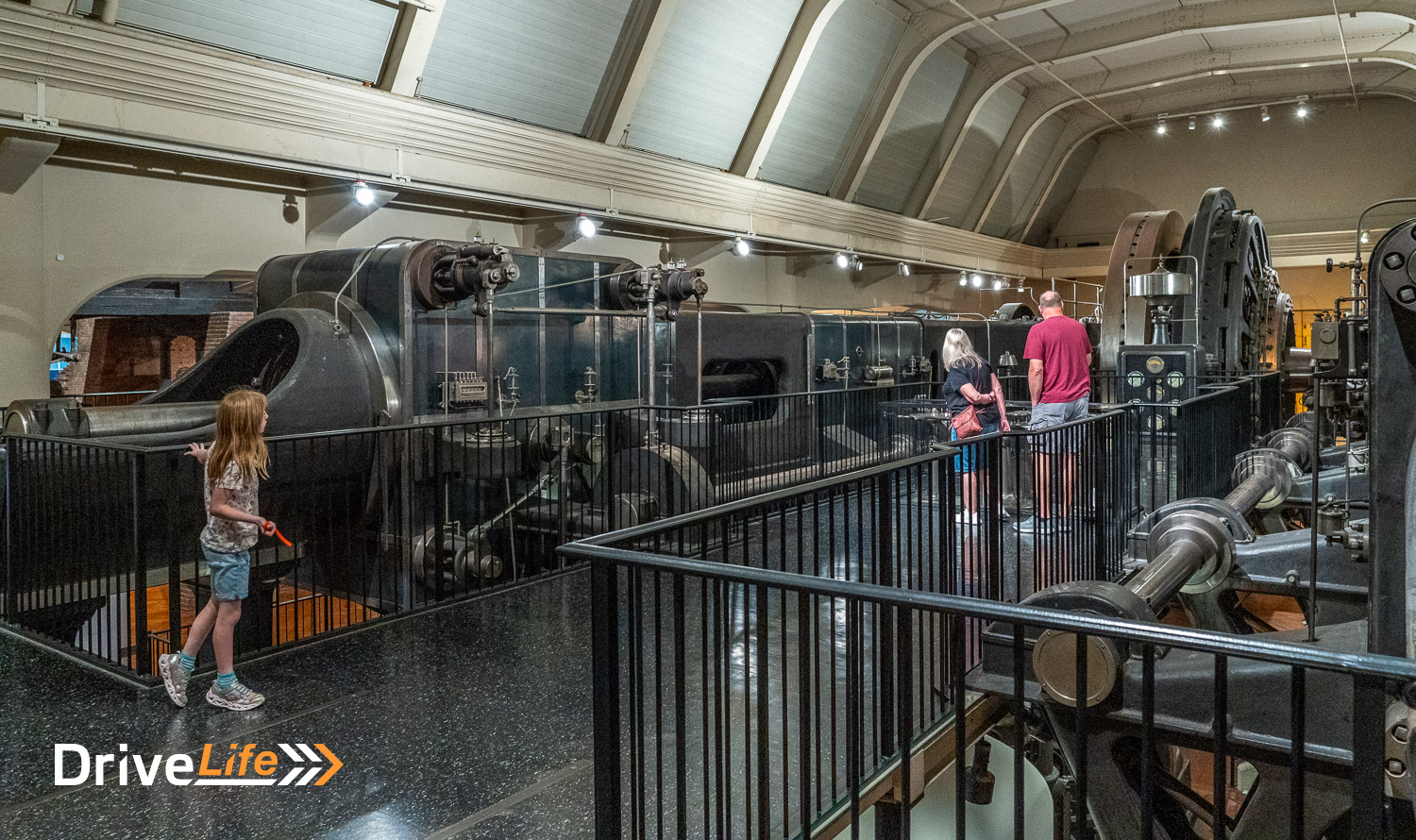
Next to this engine was a water turbine and power generator, smaller in size but still impressive. This turbine created 4,000 horsepower (2,984kW) of power while the generator created 1,300kW of power at 4,000 volts. That’s high enough voltage to deliver power to silver mines 100 miles from its location in Idaho. It was installed by the Washington Water Power Company in 1903 and incredibly, was still in use until 1990.
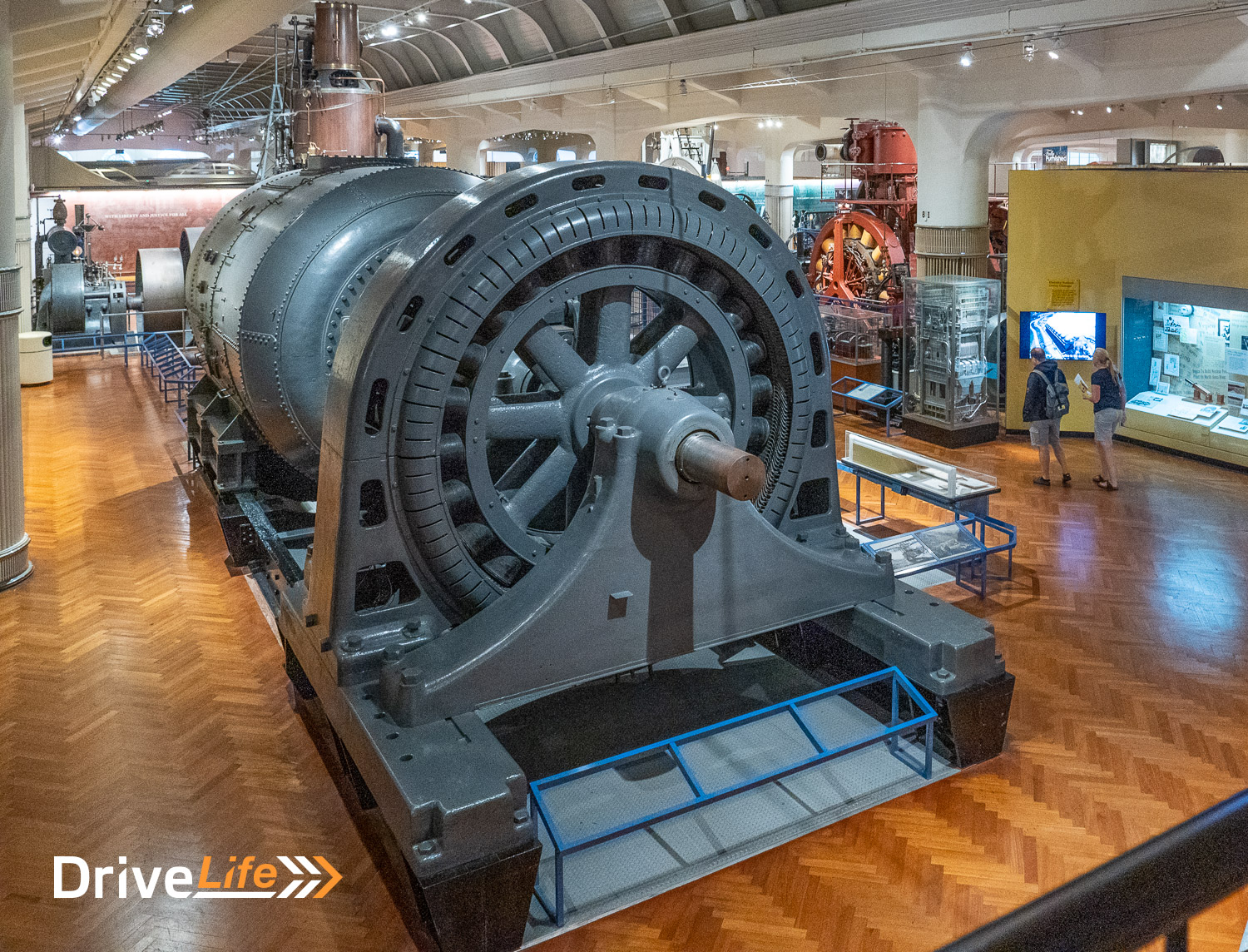
Also in the Innovation section is the last remaining Dymaxion House. This house was designed in the mid-1940s as the answer to the post-war housing crisis. According to the attendant who was there – and knew every detail about the house – at the time, a new brick or wood house would cost around $12,000 to build. The Dymaxion House could be built for half of that cost. It has two bedrooms, a fireplace, revolving wardrobes, a full kitchen, natural ventilation, and so many more features.
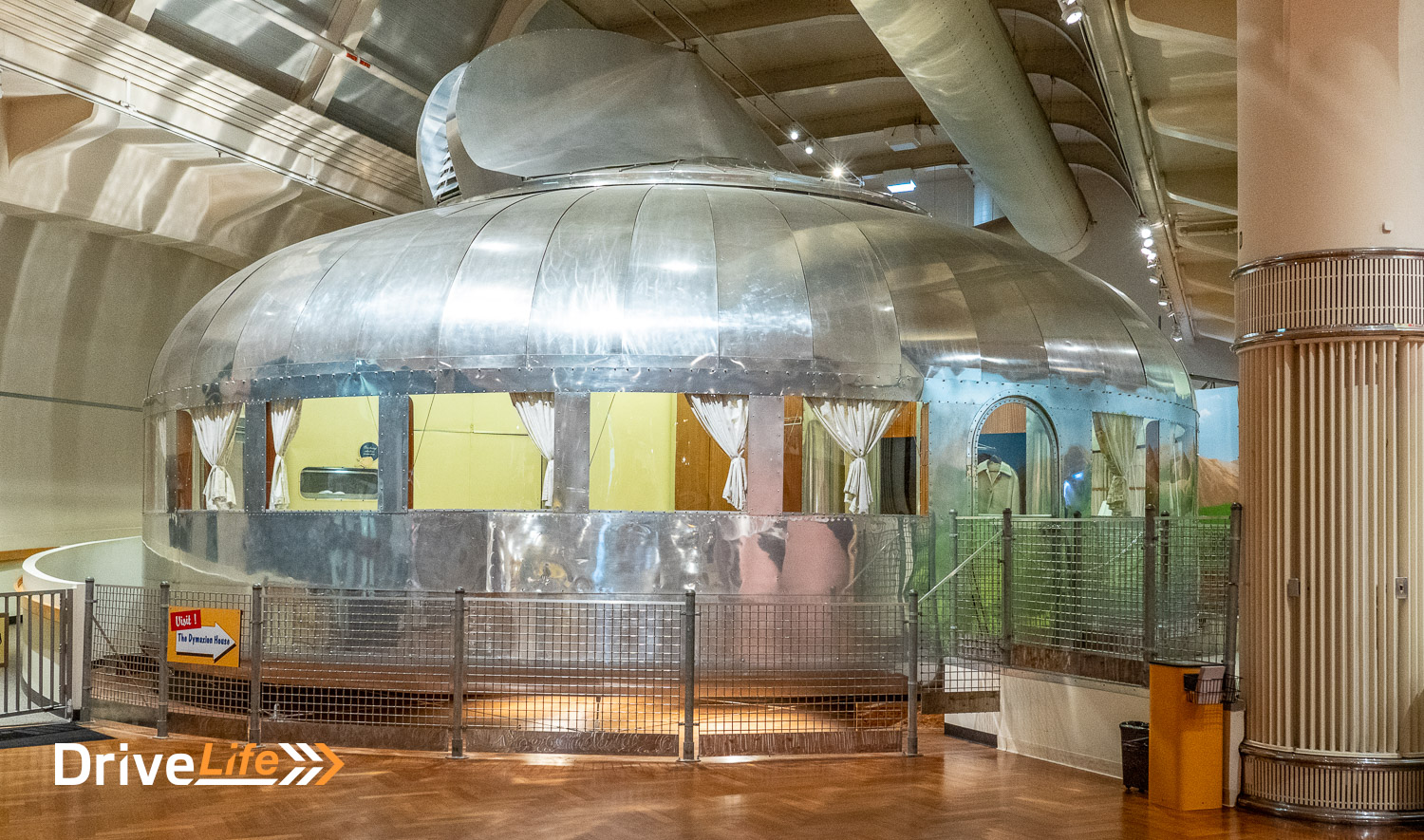
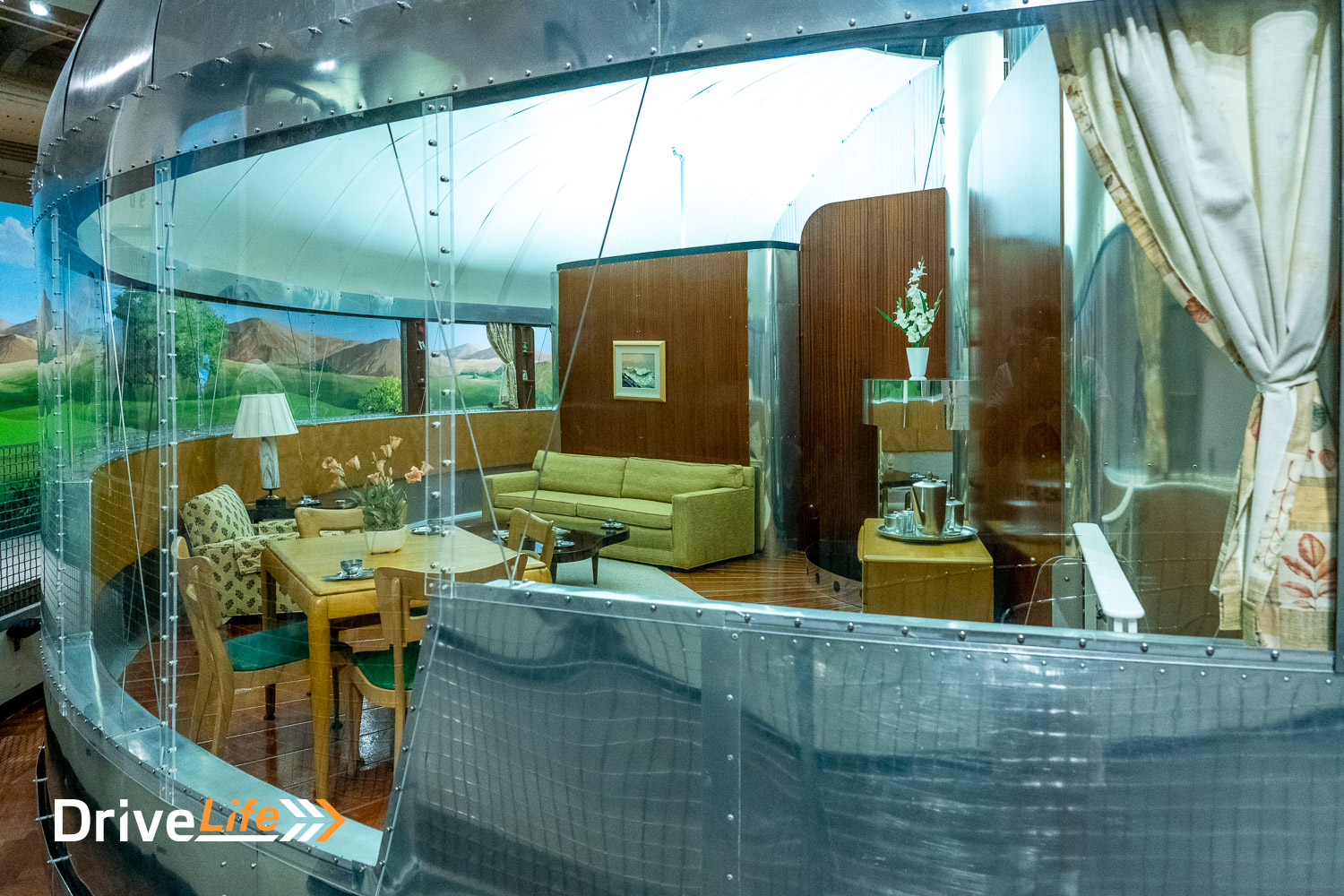
But the public wasn’t ready to live in a spaceship, so the designer and founder walked away. This one on display is the only one that was actually lived in, and even then, it was by one of the investors. Unfortunately, you can’t go inside the house but it’s a good display nonetheless and you can really get a feel for the size of it. There are lots of video and display boards related to the Dymaxion House as well.
I moved into the Aero section next and walked amongst planes like a replica of Kitty Hawk, the Spirit of St. Louis and so many other famous planes. Like other sections, there’s not only a huge amount of printed display boards, but almost every single thing on display has a touchscreen with it so you can watch it in action, and/or learn more about it. It’s brilliantly done, and quite time-consuming (in a good way).
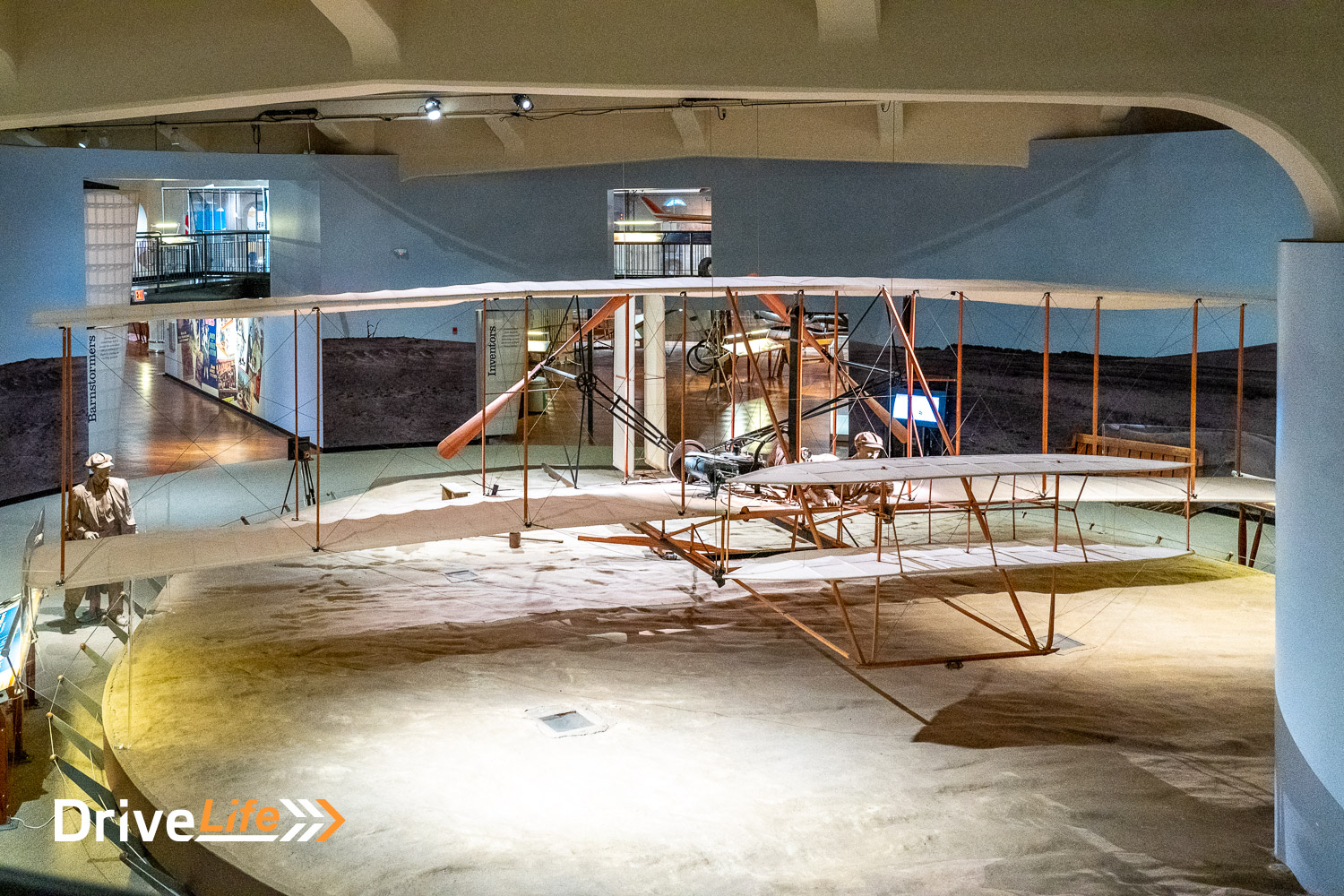
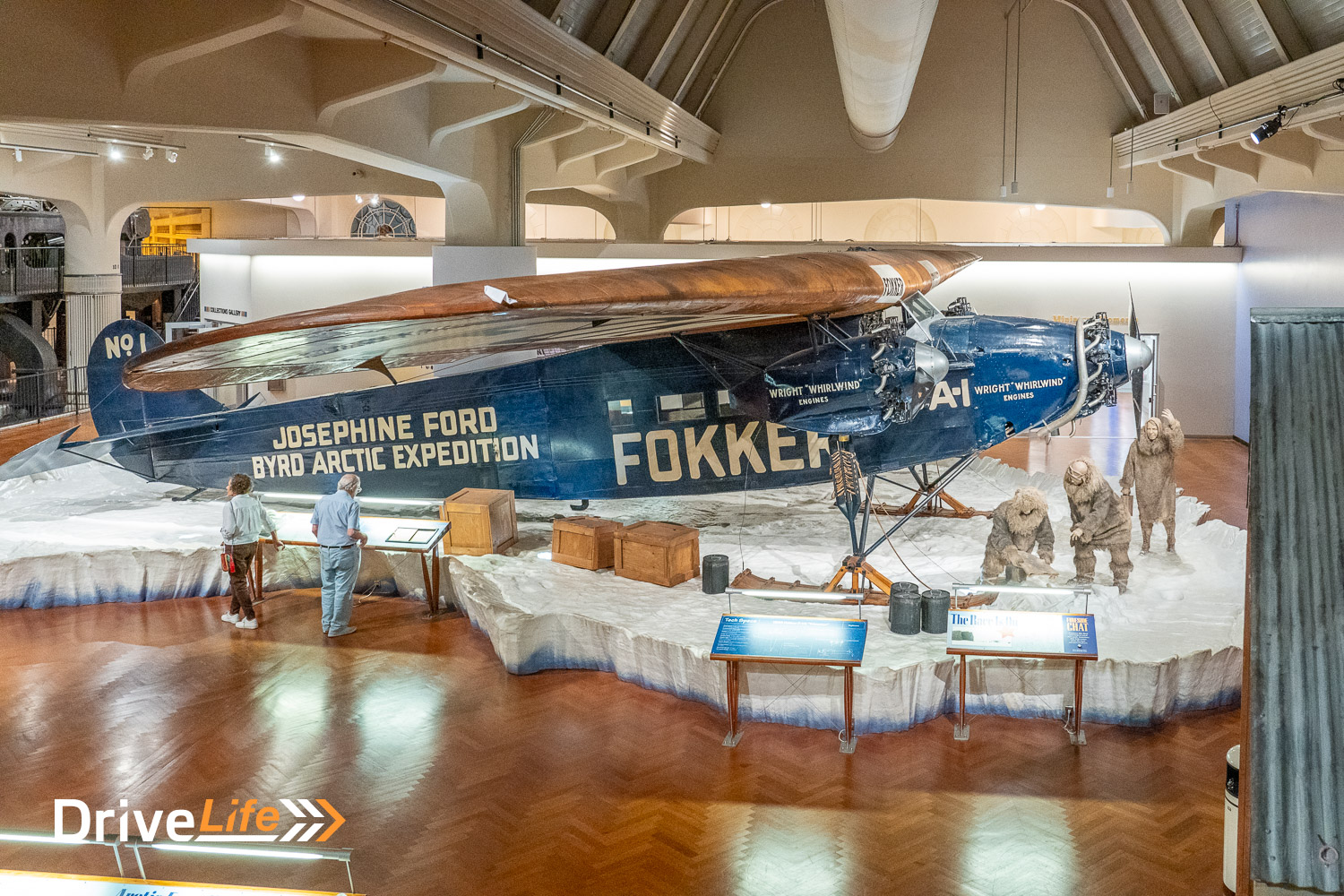
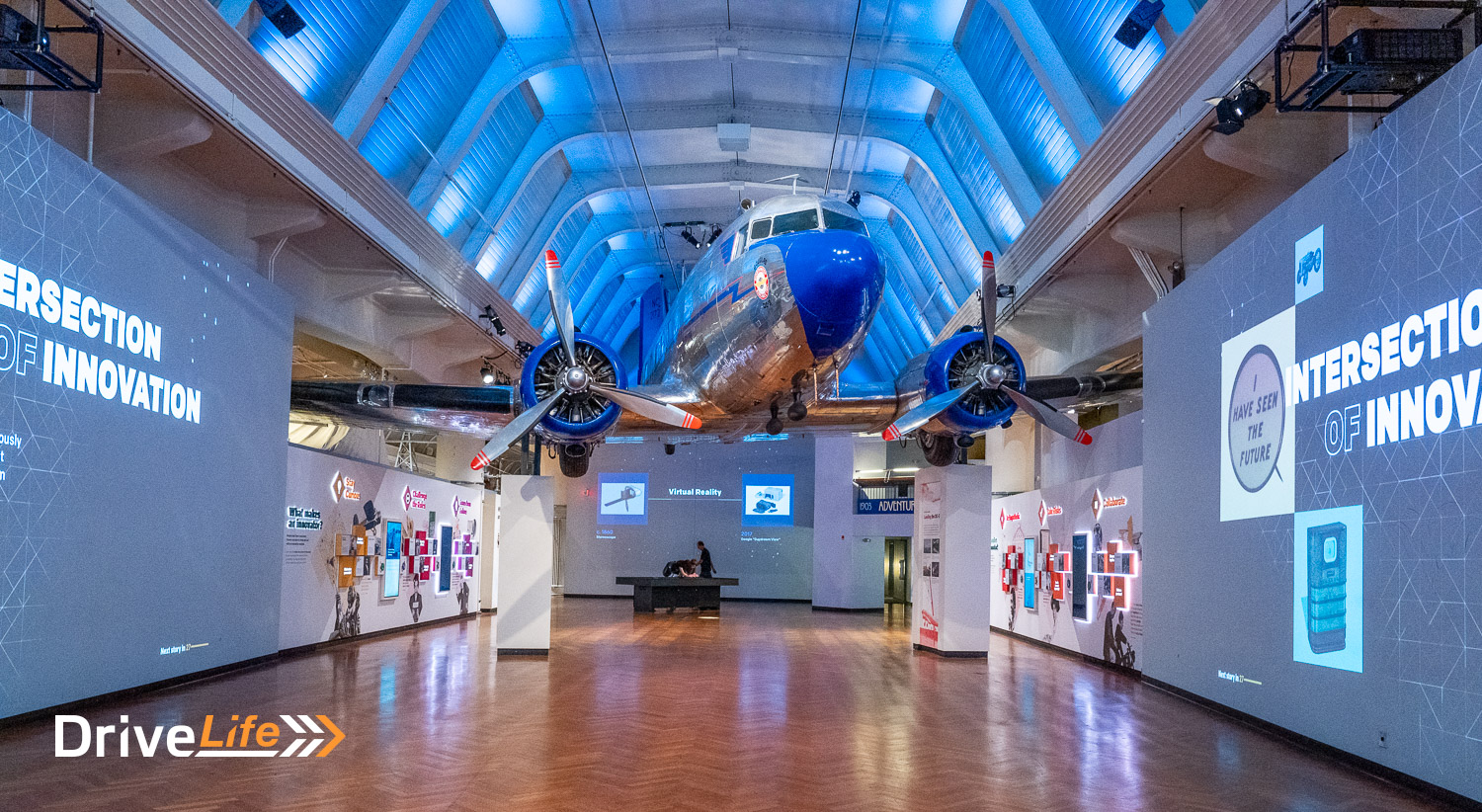
By now it was lunchtime, so I sat inside the old-style diner and had a Sloppy Joe. I’ll be honest and say I didn’t actually know what Sloppy Joe was, but the waitress wouldn’t tell me, she merely said I’d like it. It is actually warm beef mince in a cold burger bun. It tasted better than it sounds, and it came with a side of coleslaw – but I’m not sure I’d have one again.
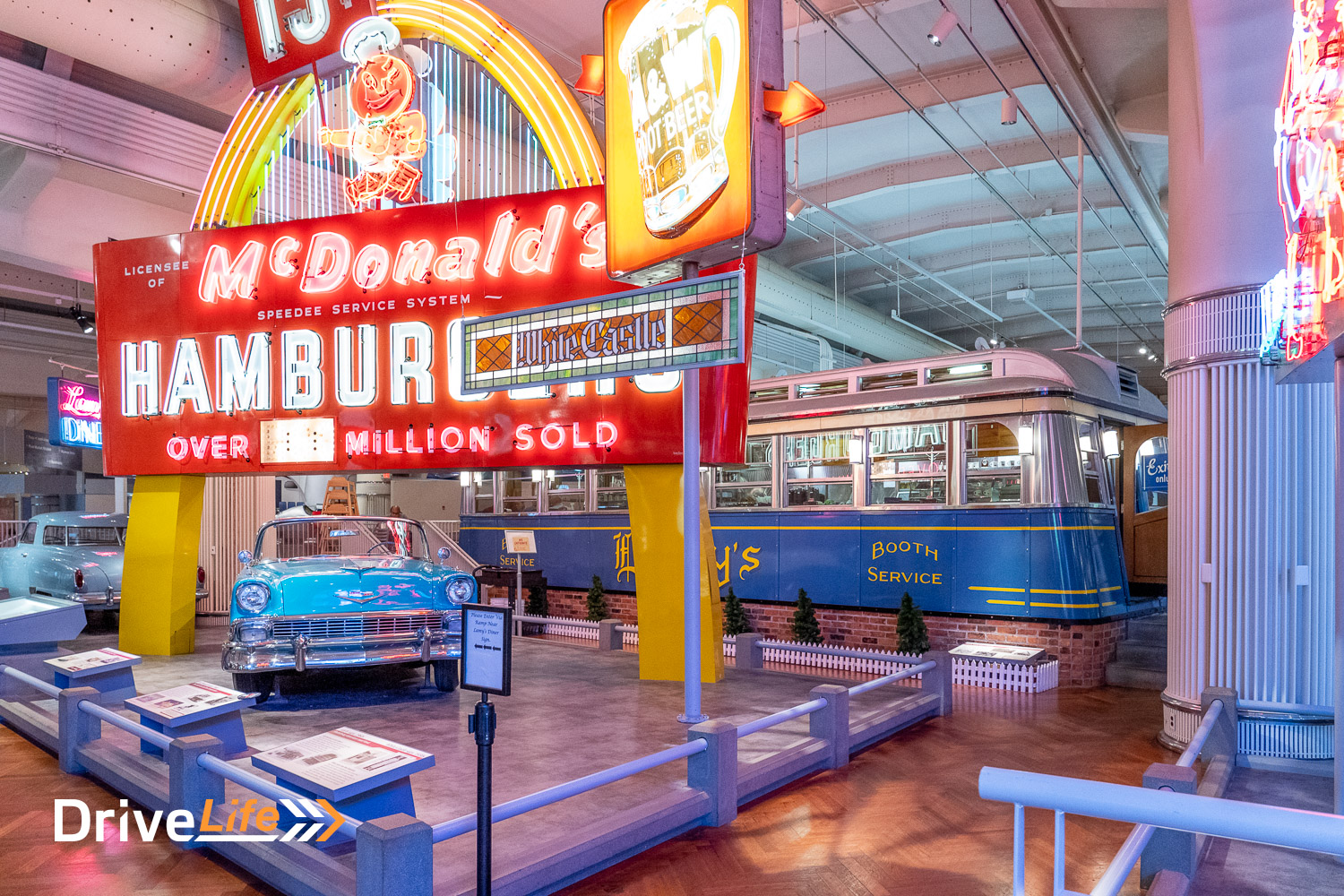
It was time to move into the car section, but on going to the end of the building, I found trains first. I had no idea the museum had trains inside it, and what a collection it is. They’ve put the biggest first, and it really catches your eye – it’s freaking huge.
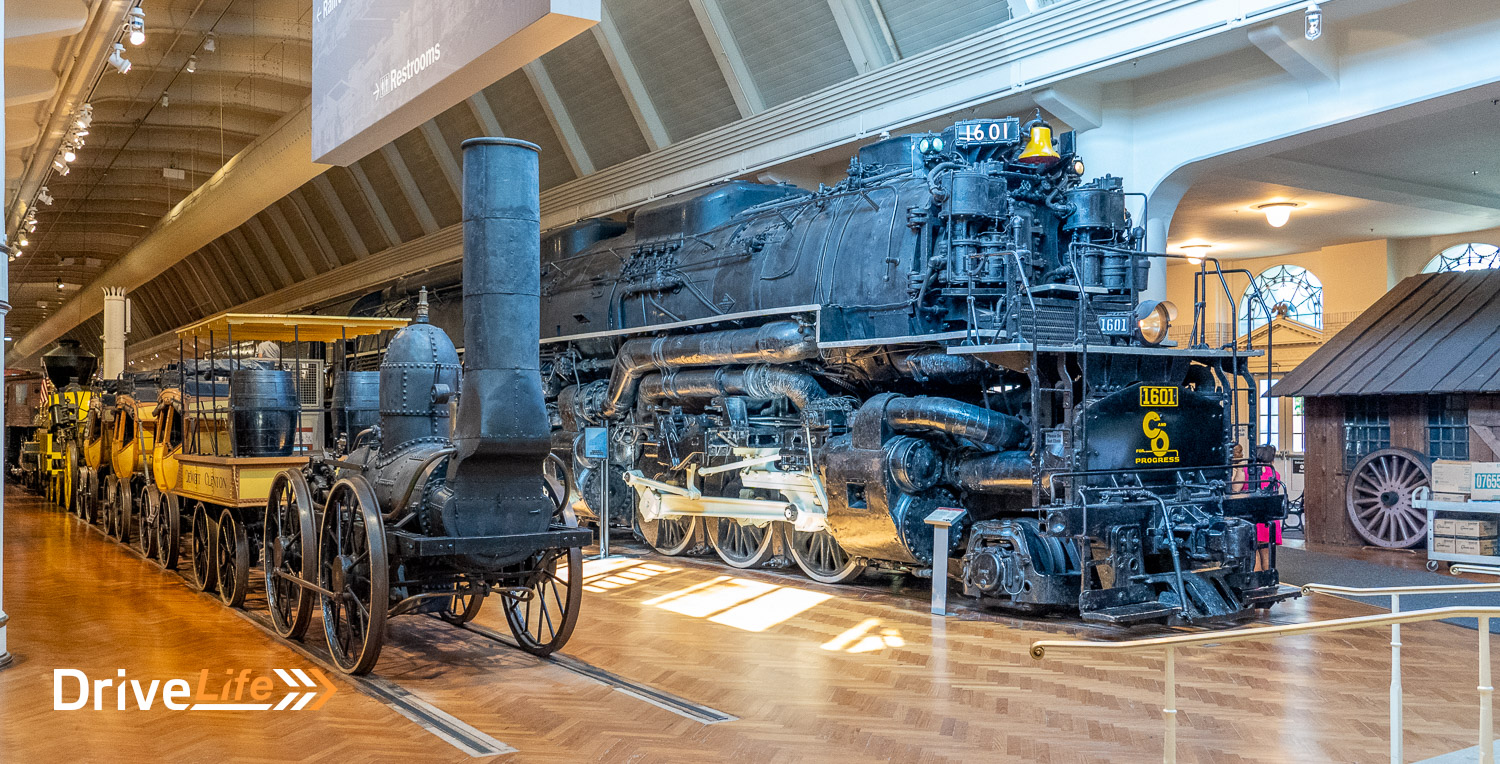
Built in 1941, the Allegheny Locomotive has 12 driving wheels and the engine alone weighs a phenomenal 603 tons. Standing next to it, you feel tiny. This engine is 16.5 feet tall, and so very long. It was so powerful that the train could end up being 1.25 miles long (2 km) and could tow 160 cars of coal.
Just to get the display engine inside the museum meant dismantling some of the building’s structure, it is so big. You get to go up into the driving area where the driver and fireman sit. The fireman controls the engine, and the engine uses so much coal it can’t be fed by hand, so there is a conveyor belt to deliver the coal into the engine. The museum has left the door to the furnace open, and looking inside it seems it could house a family of four. Okay, I exaggerate but it is ENORMOUS.
Unfortunately, although the steam technology for the Allegheny Locomotive was highly advanced, it was no match for diesel locomotives so after only 15 years, all 60 in this class were retired. The staff member here confirms that the Allegheny Locomotive is the most photographed exhibit at the museum. Seeing it in the flesh, I can easily understand that.
There are a bunch more trains on two sets of tracks at the end of the building, and they go almost the entire depth of it.
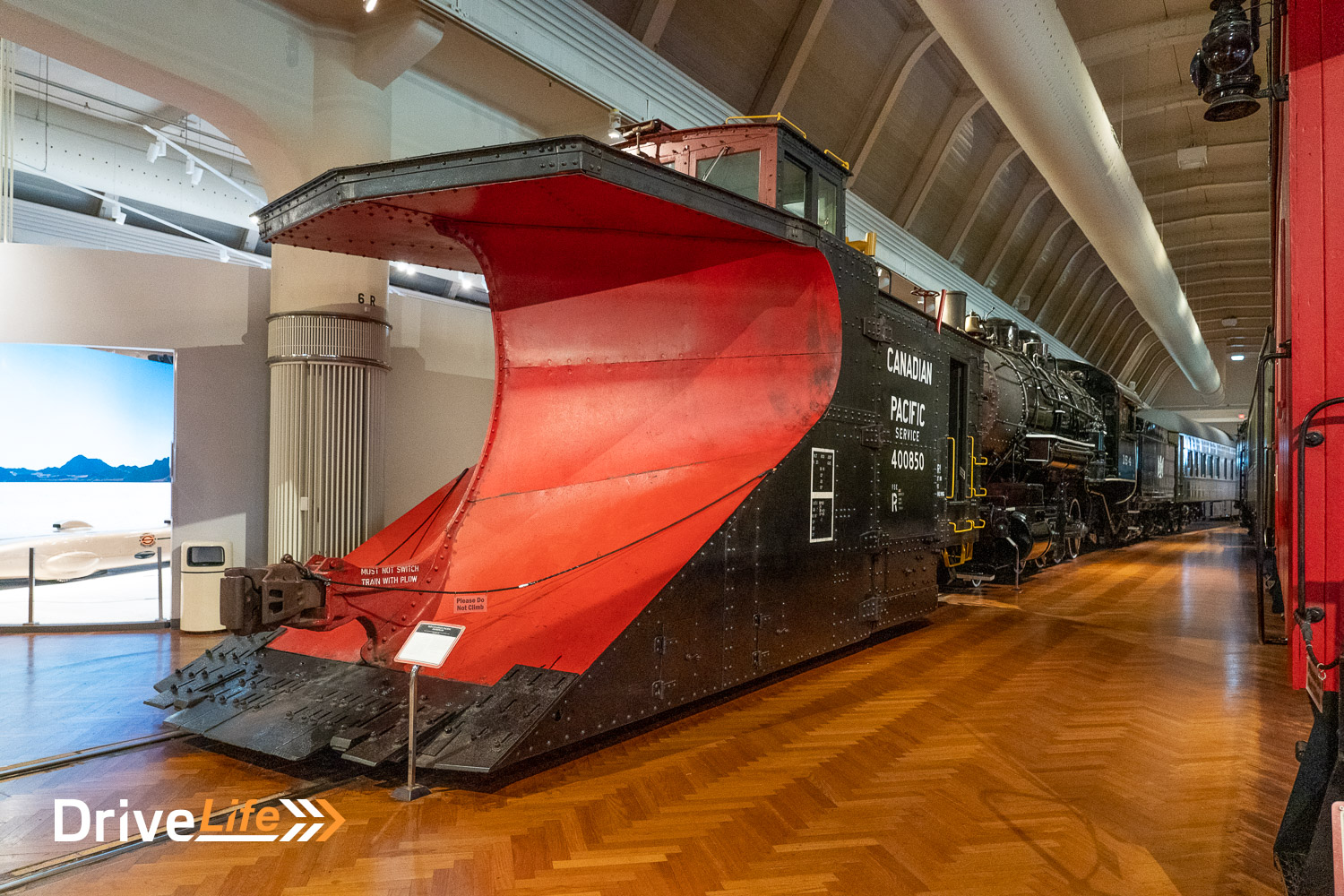
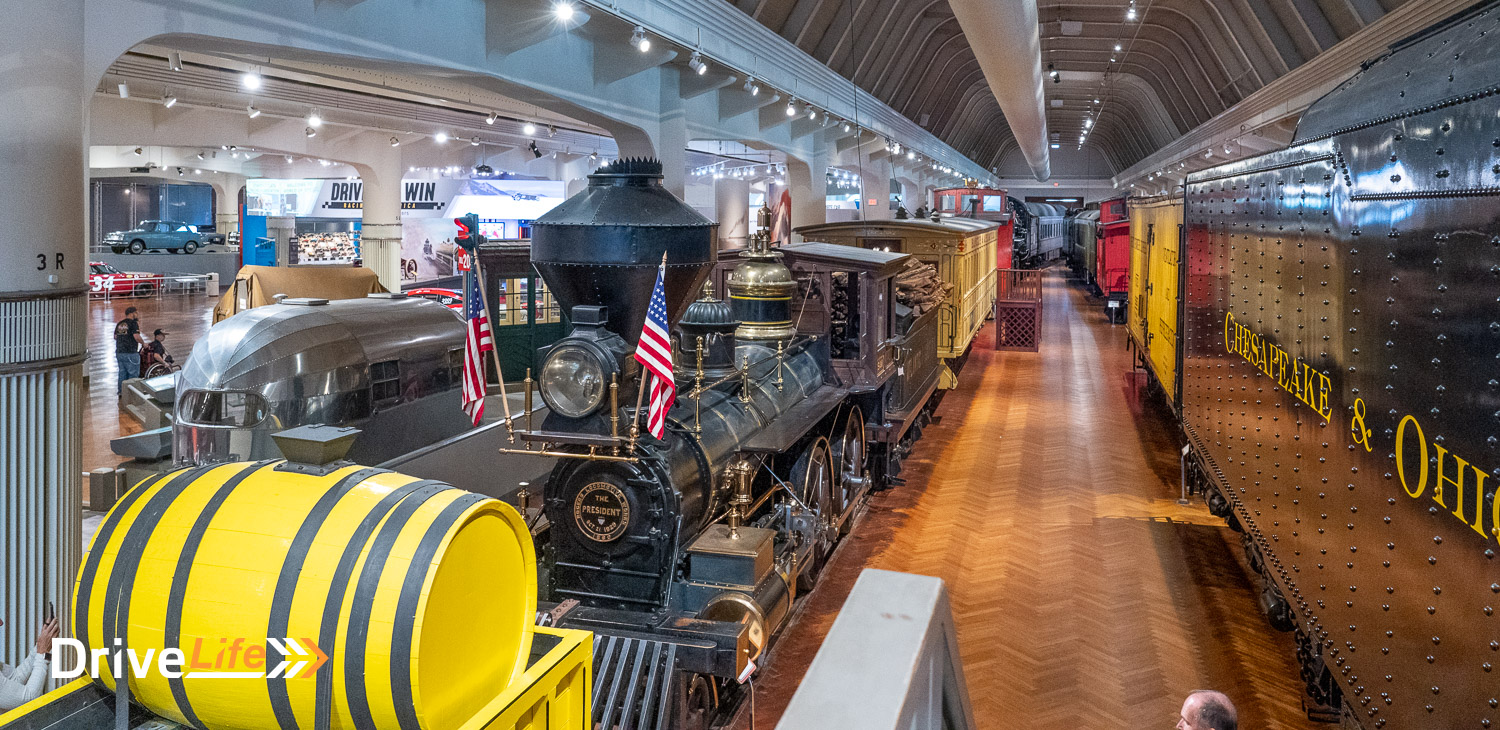
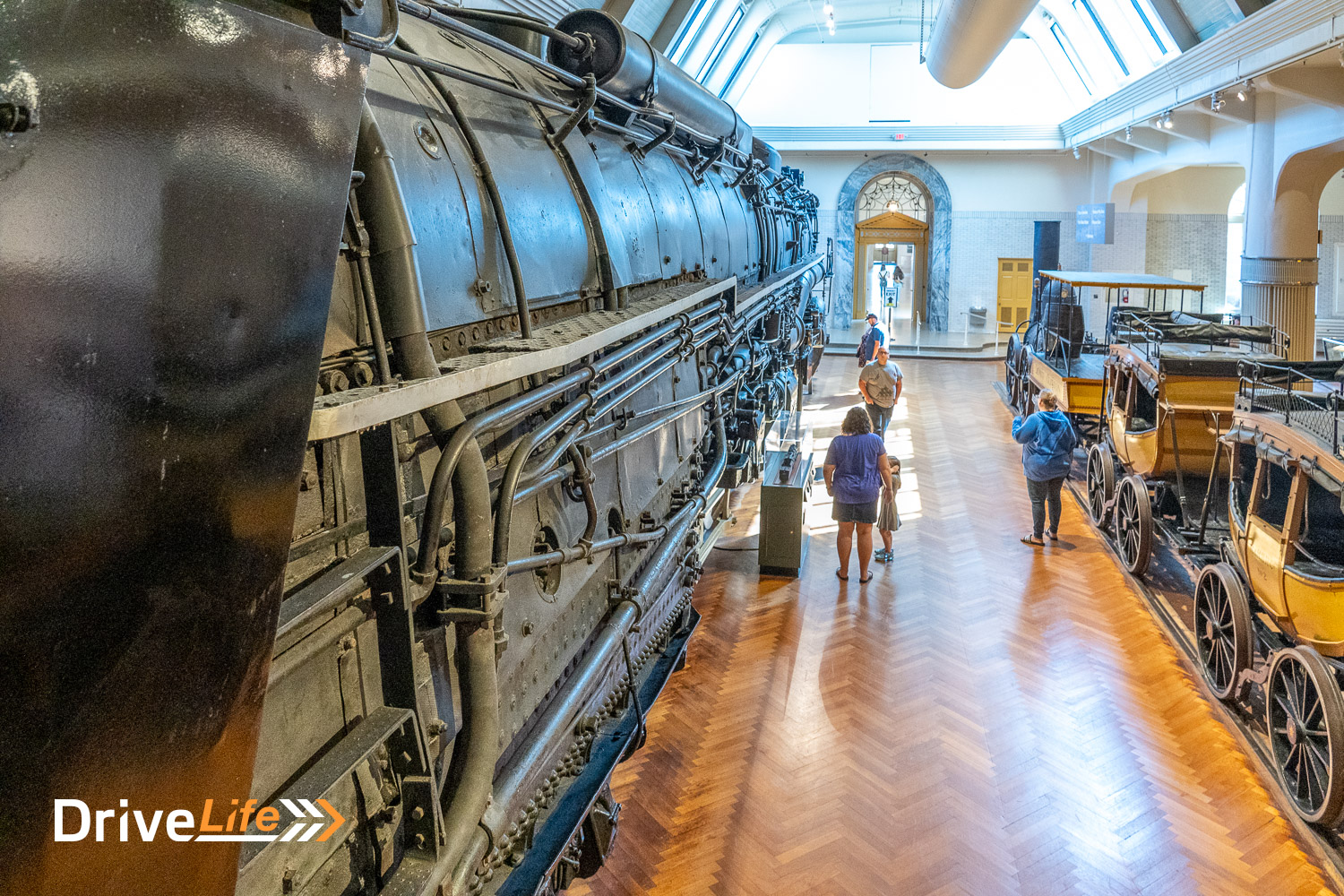
Finally, I made it to see some cars. I was really expecting mainly Fords, but the brand is outnumbered. This part of the museum is about motoring history, not brand history. Alongside the diner is a line of presidential limousines, in chronological order. Each has a display board that tells you what president rode in it, and what modifications were done to it. It was surprising to see that some of the limos were modified multiple times over their life. At the very end of the line is a horse-drawn carriage, used by Theodore Roosevelt who didn’t like motorcars of the day.
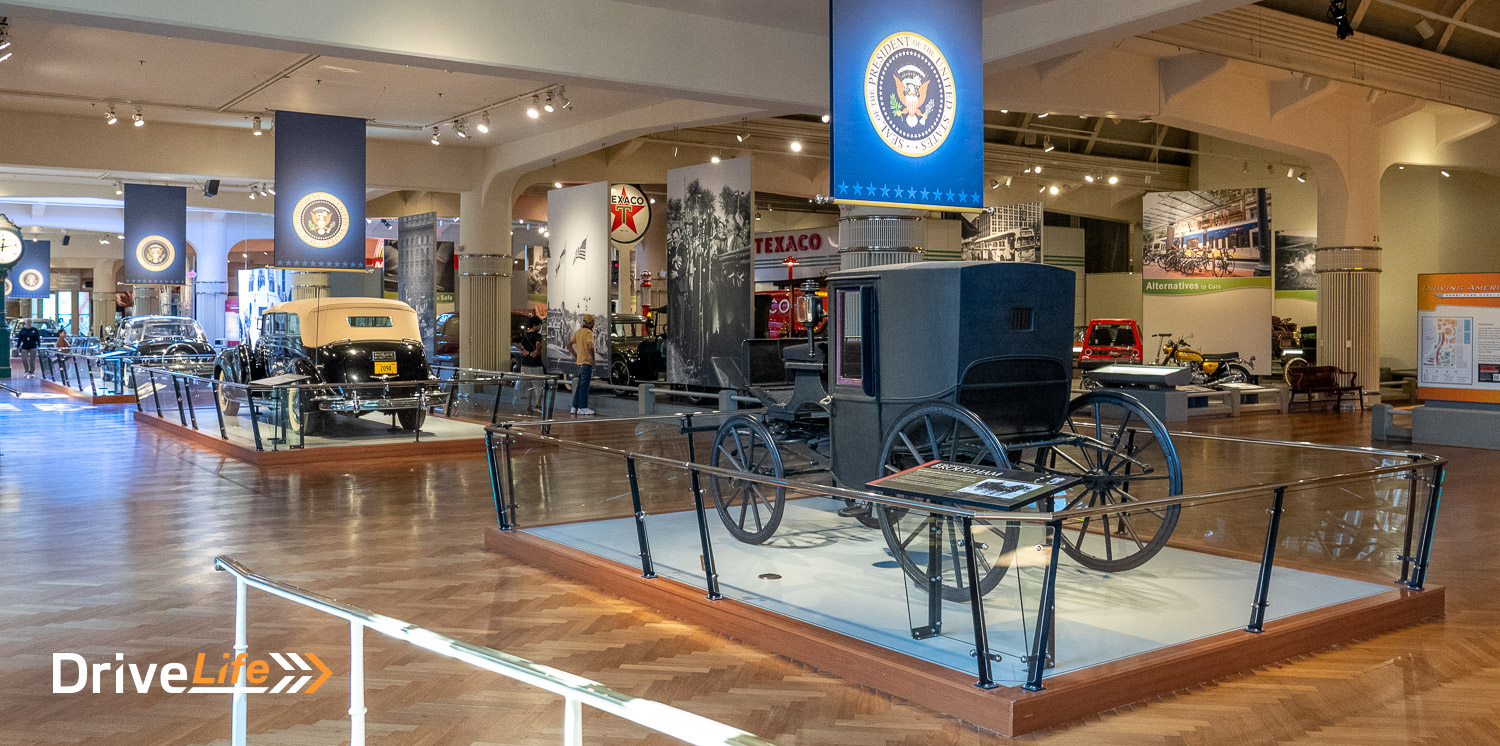
These days, the presidential limousines are typically destroyed at the end of their use.
There are hundreds of cars on display here, including the Chrysler turbine car, drag cars, NASCAR race cars – lots of race cars.
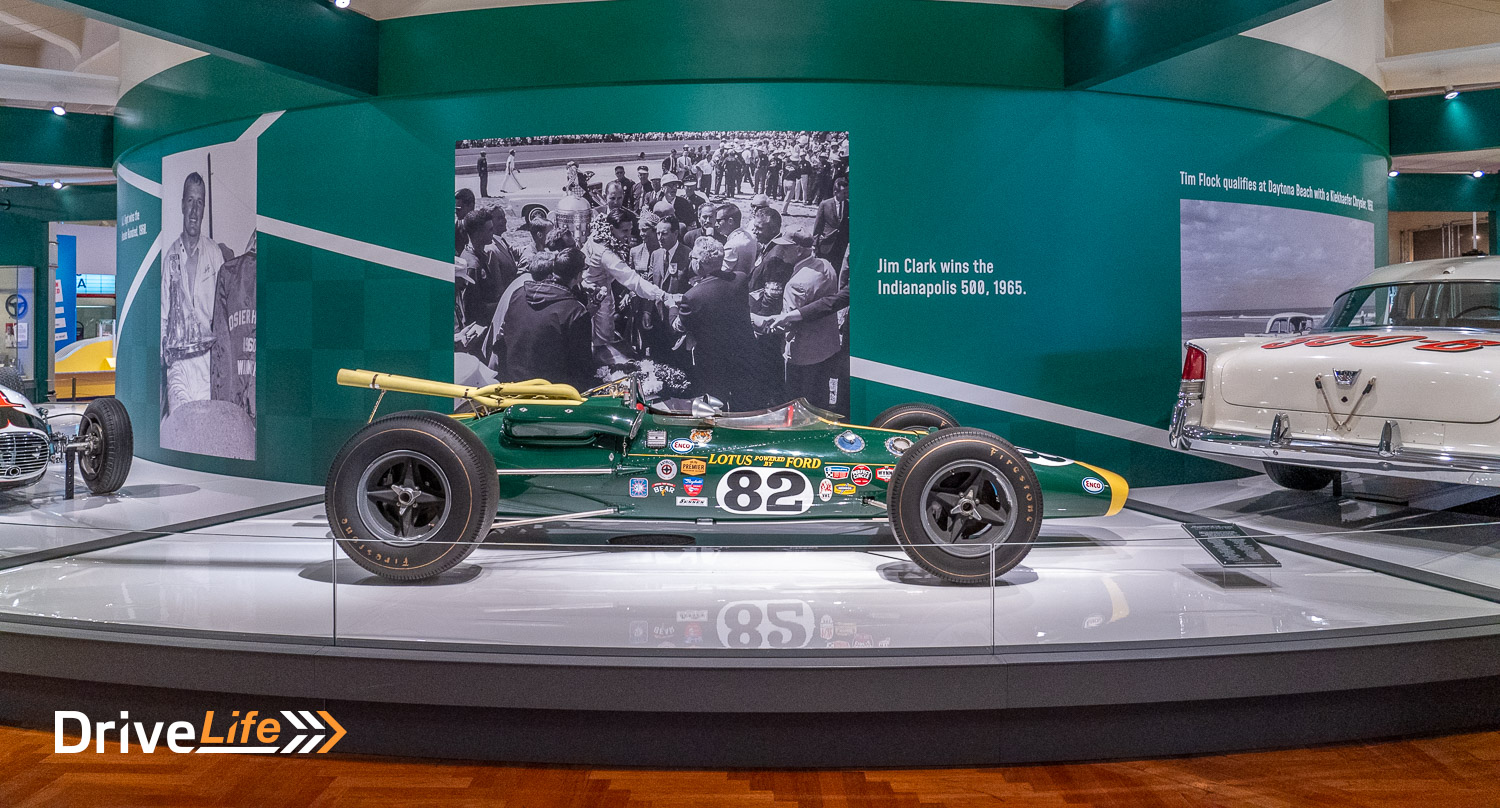
But there are also everyday cars, like a Honda Accord or first-gen Toyota Prius. Again, it’s motoring history, not Ford history. In saying that, I did enjoy seeing the first Mustang ever built and according to the staff member I spoke to, it’s a very popular exhibit. Weirdly, this iconic pony car is parked next to a Ford Taurus. Go figure!
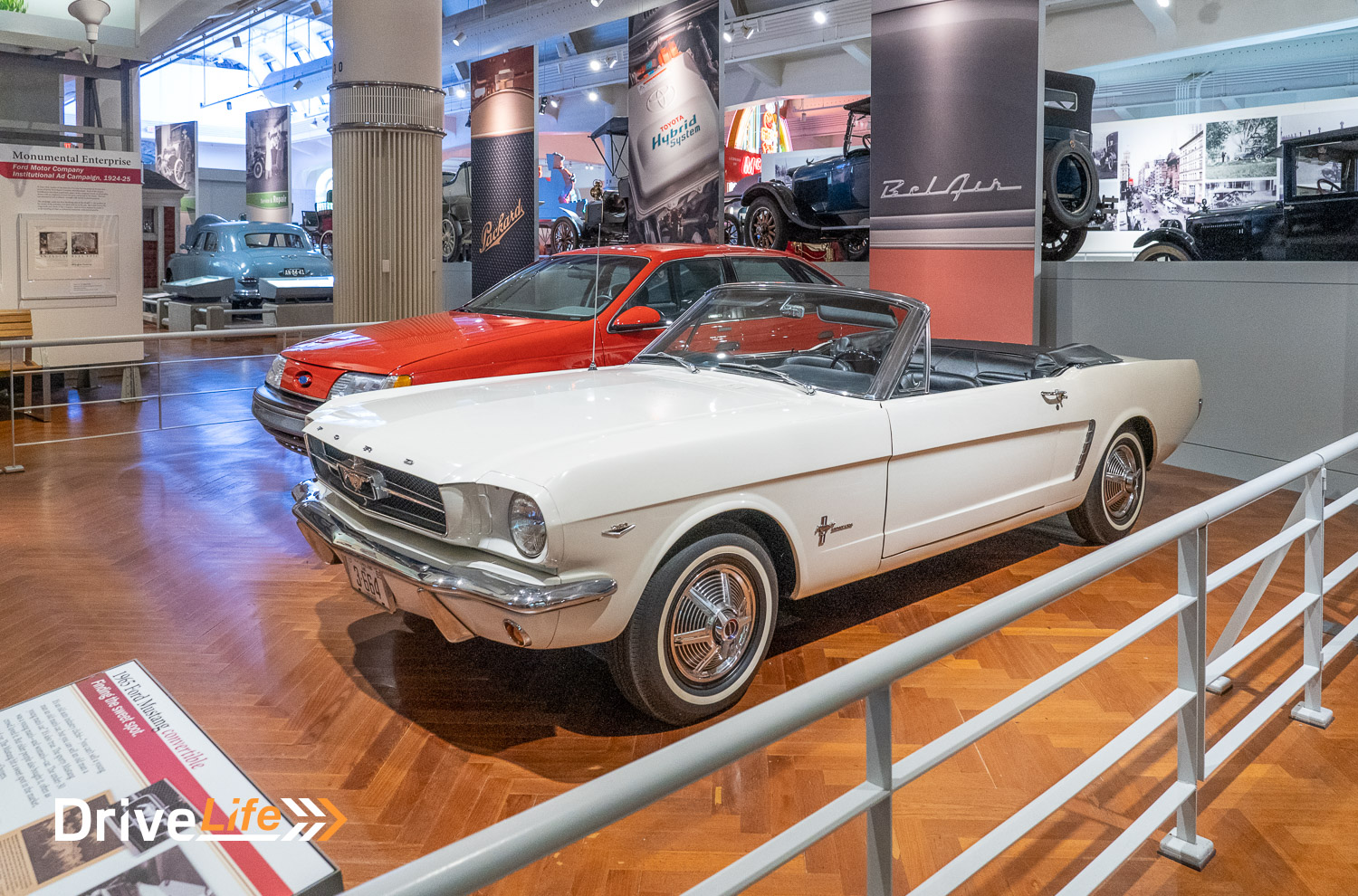
I would like to visit the Henry Ford Museum of American Innovation again; it’s a stunning museum and brilliantly executed. It costs US$30 to enter, plus $9 for parking – and I’m not going to hold it against the museum that I got called Australian three times while visiting.
By now it was 5pm, and still 30 degrees outside. So much for our theory that going north will make it cooler. Tomorrow, we head across the border into Canada. Keep an eye out for the next travel blog so you can see how the Canadians treat us.
READ THE NEXT ENTRY IN THIS ROAD TRIP SERIES HERE.
